Forums
- Forums
- Axis And Allies Forum
- General Discussion
- Aviation News
Aviation News
Post a reply
- Go to Previous topic
- Go to Next topic
- Go to Welcome
- Go to Introduce Yourself
- Go to General Discussion
- Go to Screenshots, Images and Videos
- Go to Off topic
- Go to Works in Progress
- Go to Skinning Tips / Tutorials
- Go to Skin Requests
- Go to IJAAF Library
- Go to Luftwaffe Library
- Go to RAF Library
- Go to USAAF / USN Library
- Go to Misc Library
- Go to The Ops Room
- Go to Made in Germany
- Go to Campaigns and Missions
- Go to Works in Progress
- Go to Juri's Air-Raid Shelter
- Go to Campaigns and Missions
- Go to Works in Progress
- Go to Skinpacks
- Go to External Projects Discussion
- Go to Books & Resources
-
 Main AdminSOUTH CHINA SEA (Jan. 30, 2023) An F/A-18E Super Hornet from the “Kestrels” of Strike Fighter Squadron (VFA) 137 taxis across the flight deck of the aircraft carrier USS Nimitz (CVN 68). Nimitz is in U.S. 7th Fleet conducting routine operations. 7th Fleet is the U.S. Navy's largest forward-deployed numbered fleet, and routinely interacts and operates with Allies and partners in preserving a free and open Indo-Pacific region. (U.S. Navy photo by Mass Communication Specialist 3rd Class Joseph Calabrese)
Main AdminSOUTH CHINA SEA (Jan. 30, 2023) An F/A-18E Super Hornet from the “Kestrels” of Strike Fighter Squadron (VFA) 137 taxis across the flight deck of the aircraft carrier USS Nimitz (CVN 68). Nimitz is in U.S. 7th Fleet conducting routine operations. 7th Fleet is the U.S. Navy's largest forward-deployed numbered fleet, and routinely interacts and operates with Allies and partners in preserving a free and open Indo-Pacific region. (U.S. Navy photo by Mass Communication Specialist 3rd Class Joseph Calabrese)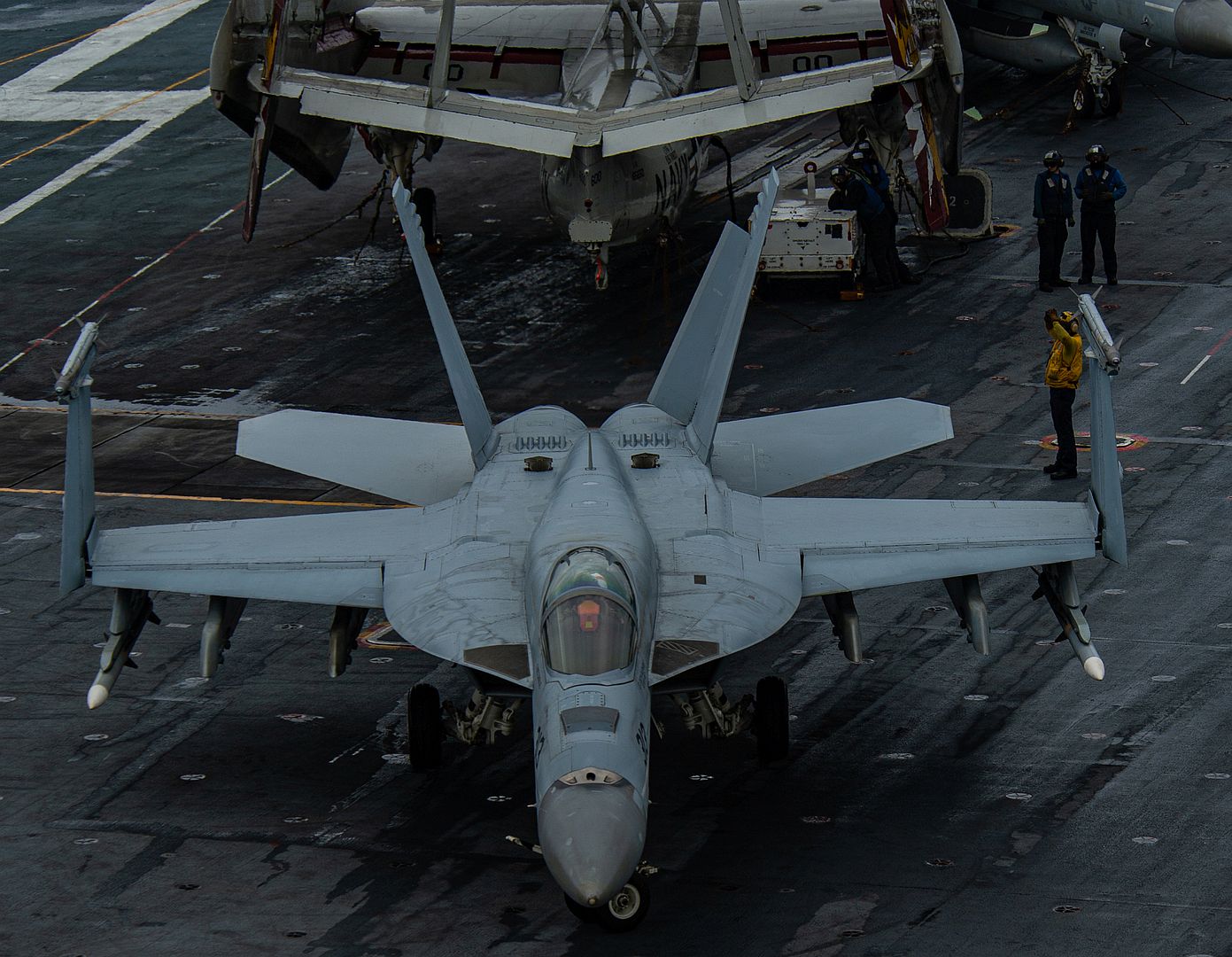
SOUTH CHINA SEA (Jan. 30, 2023) An F/A-18F Super Hornet from the “Mighty Shrikes” of Strike Fighter Squadron (VFA) 94, left, and an F/A-18E Super Hornet from the “Kestrels” of Strike Fighter Squadron (VFA) 137 taxi across the flight deck of the aircraft carrier USS Nimitz (CVN 68). Nimitz is in U.S. 7th Fleet conducting routine operations. 7th Fleet is the U.S. Navy's largest forward-deployed numbered fleet, and routinely interacts and operates with Allies and partners in preserving a free and open Indo-Pacific region. (U.S. Navy photo by Mass Communication Specialist 3rd Class Joseph Calabrese)
SOUTH CHINA SEA (Jan. 31, 2023) An F/A-18F Super Hornet from the “Mighty Shrikes” of Strike Fighter Squadron (VFA) 94 launches from the flight deck of the aircraft carrier USS Nimitz (CVN 68). Nimitz is in U.S. 7th Fleet conducting routine operations. 7th Fleet is the U.S. Navy's largest forward-deployed numbered fleet, and routinely interacts and operates with Allies and partners in preserving a free and open Indo-Pacific region. (U.S. Navy photo by Mass Communication Specialist 3rd Class Hannah Kantner)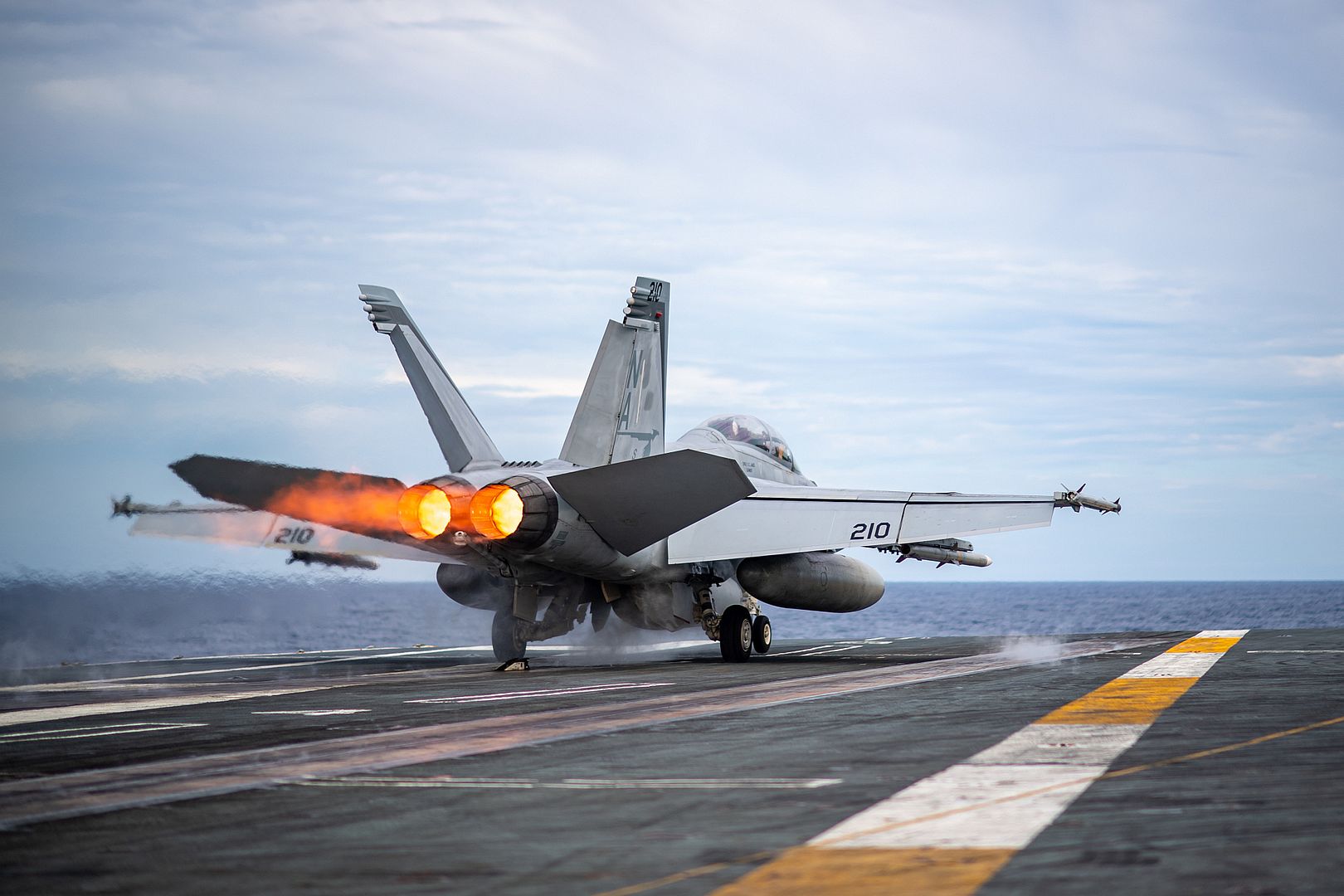
U.S. Airmen assigned to the 122nd Fighter Wing, Indiana Air National Guard, load a Mark 84 bomb onto an A-10C Thunderbolt II aircraft during an Integrated Combat Turn maneuver while the pilot waits in the cockpit during Guardian Blitz at Moody Air Force Base, Georgia, Jan. 26, 2023. ICT maneuvers involve refueling and rearming the aircraft while the pilot waits in the cockpit with engines running before taking off again to maximize time in the air. During the exercise, the 122nd FW positioned the main force at MacDill Air Force Base while stationing a self-sufficient contingency force at Moody Air Force Base to further project combat power and sustainability in a contested environment. (U.S. Air National Guard photo by Staff Sgt. Kathleen LaCorte)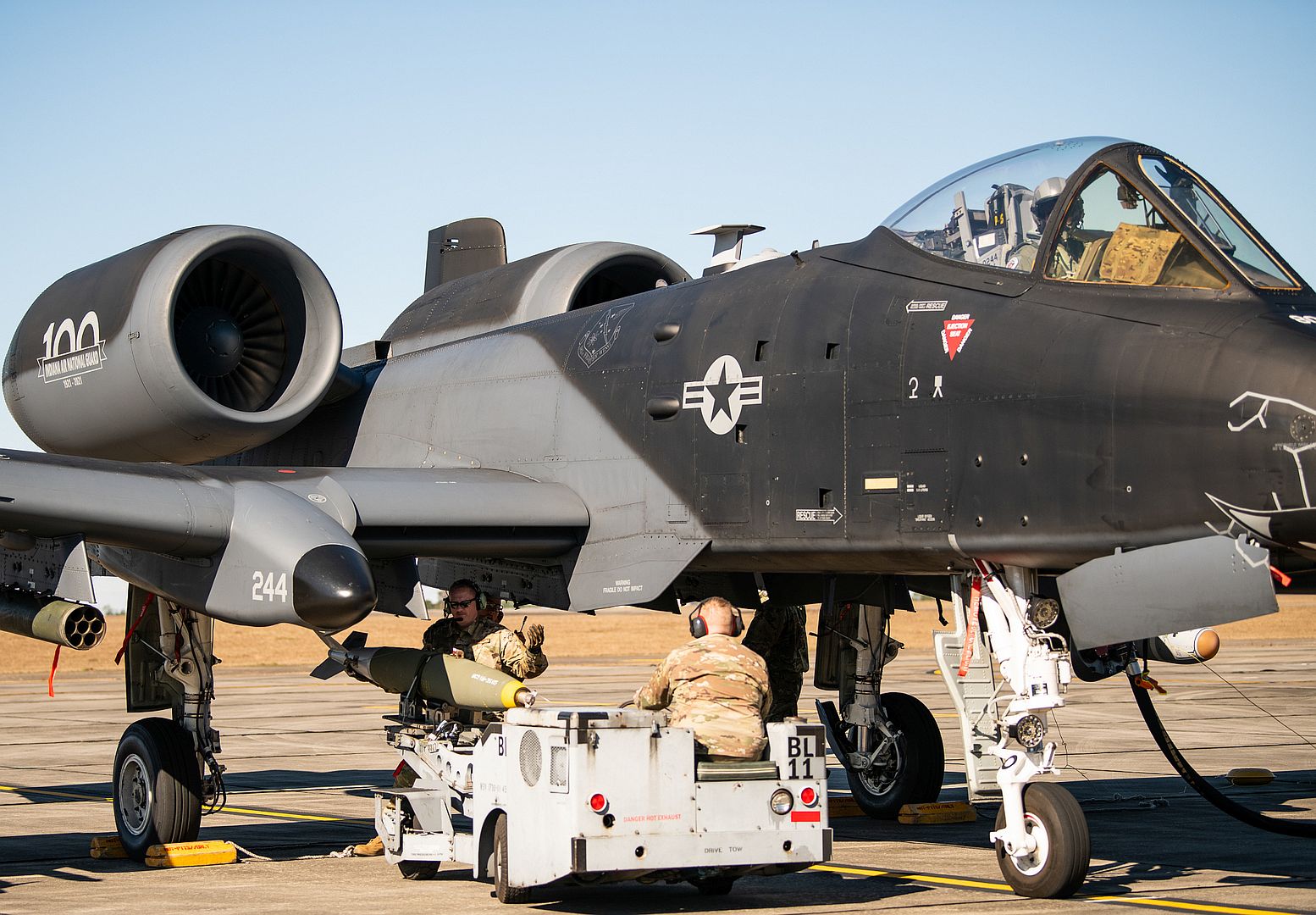
A U.S. Air Force F-16CM Fighting Falcon assigned to the 35th Fighter Wing flies alongside a KC-135 Stratotanker assigned to the 909th Air Refueling Squadron after aerial refueling over Hokkaido, Japan, Jan. 27, 2023. The 35th FW is the Air Force's premier Wild Weasel organization and specializes in the suppression and destruction of enemy air defenses including surface-to-air-missile systems. (U.S. Air Force photo by Airman 1st Class Tylir Meyer)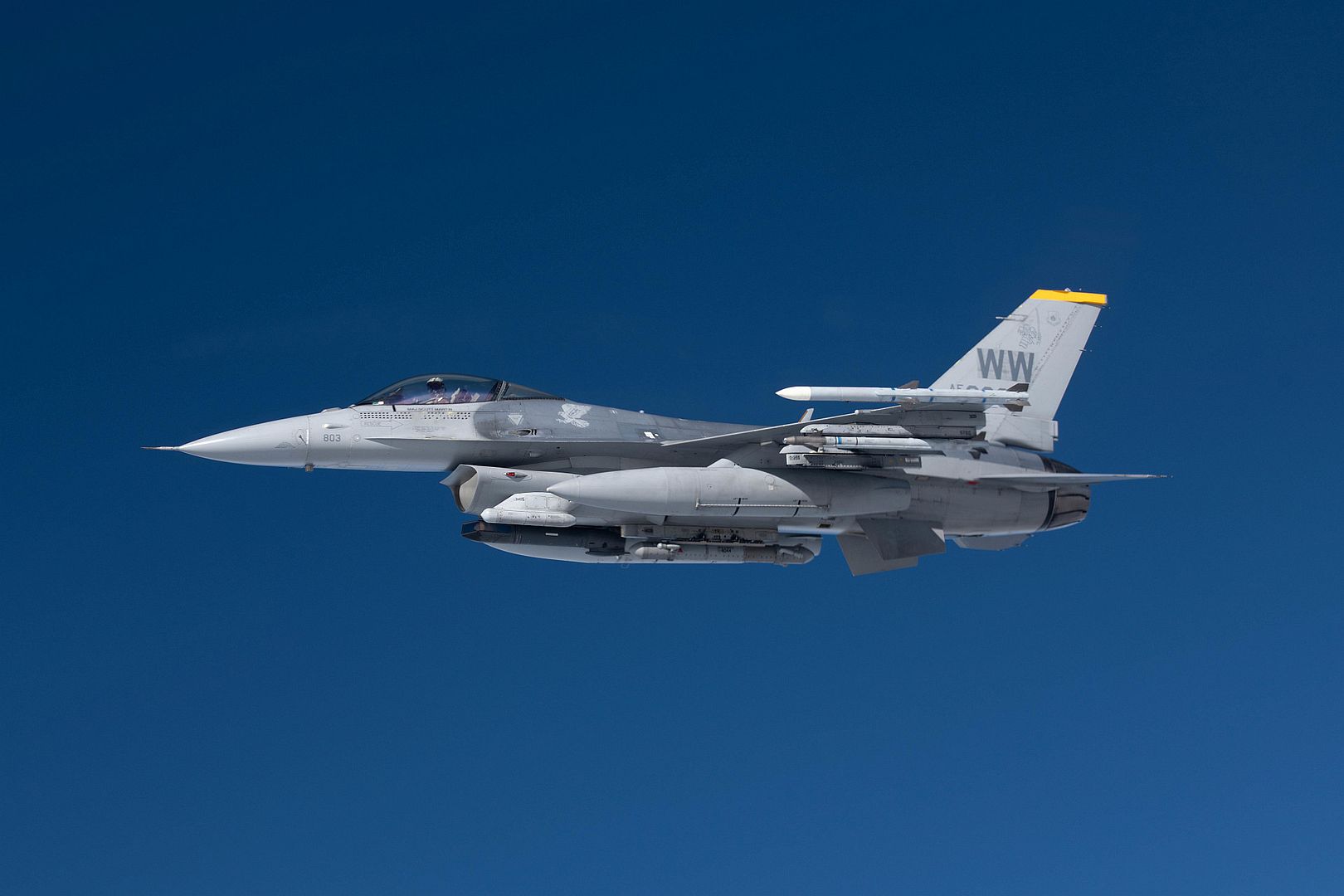
PACIFIC OCEAN (Jan. 25, 2023) A KC-10 Extender from the 9th Air Refueling Squadron and a CMV-22B Osprey from Fleet Logistics Multi-Mission Squadron (VRM) 30 perform a mid-flight refueling. VRM-30, assigned to Carrier Air Wing 9 is currently based out of Naval Air Station North Island in support of routine operations in U.S. 3rd Fleet. (U.S. Navy photo by Mass Communication Specialist 2nd Class Lake Fultz)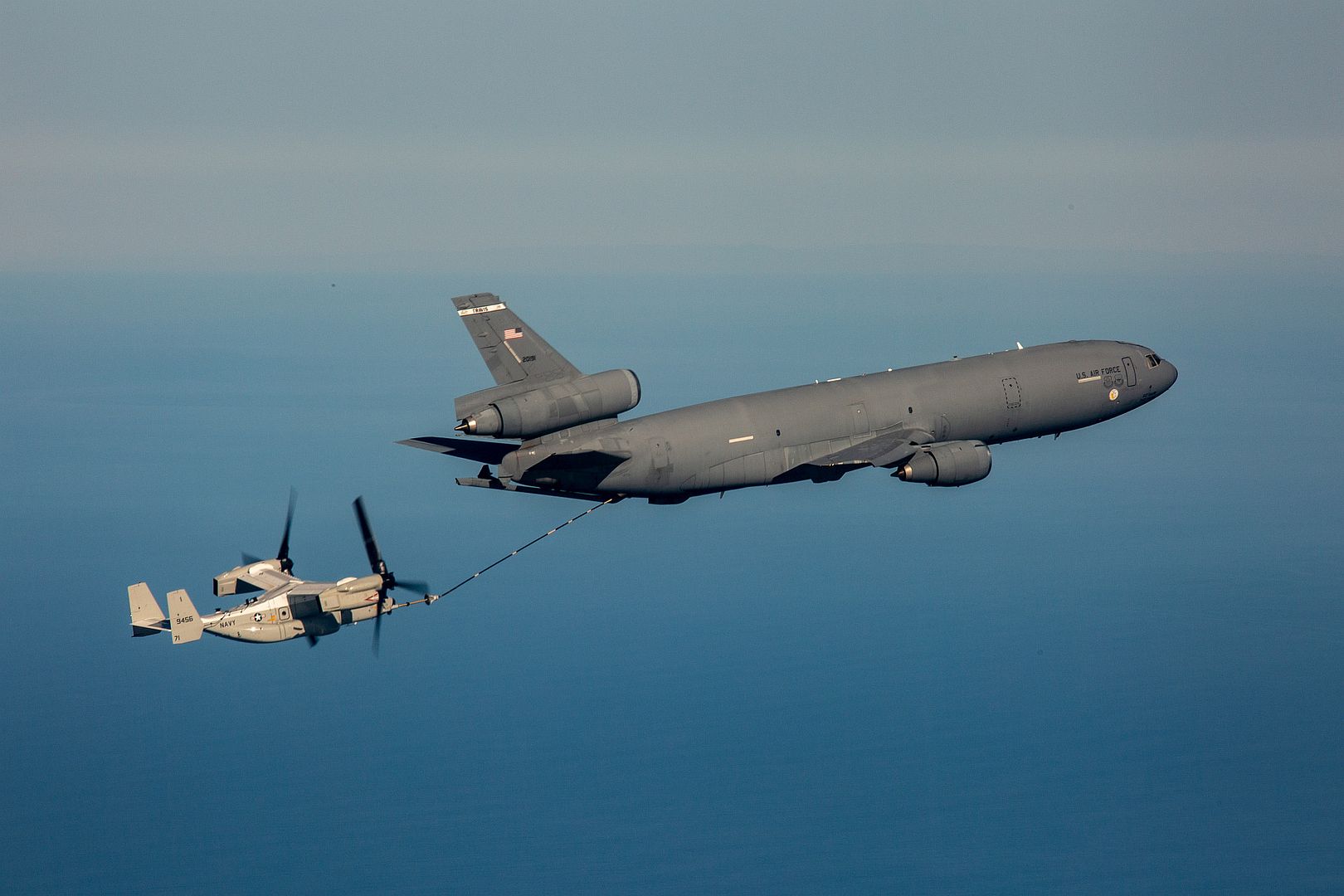
SAN DIEGO – 31 January 2023 – General Atomics Aeronautical Systems, Inc. (GA-ASI) flew a new survivable Air-Launched Effect (ALE) for the first time as part of a flight demonstration based out of the Dugway Proving Grounds, Utah, on Dec. 8, 2022. The ALE, known as Eaglet, was launched from a U.S. Army MQ-1C Gray Eagle Extended Range (GE-ER) Unmanned Aircraft System (UAS). The Eaglet flight was jointly funded by GA-ASI and the U.S. Army Combat Capabilities Development (DEVCOM) Army Research Laboratory (ARL) and Aviation & Missile Center (AvMC).
“The first flight of the Eaglet was an important milestone for the GA-ASI/U.S. Army team,” said GA-ASI President David R. Alexander. “Eaglet is intended to be a low-cost, survivable UAS with the versatility to be launched from a Gray Eagle, rotary-wing aircraft, or ground vehicles. It enables extended reach of sensors and increased lethality while providing survivability for manned aircraft.”
Eaglet fits into the ‘ALE Large’ category, which encompasses larger, more powerful sensors or payloads. Because of its design, Eaglet is capable of carrying a diverse range of payloads in support of multiple Army missions.
Eaglet design extends battlefield options for commanders while reducing their decision cycles. Gray Eagle can carry Eaglet for thousands of kilometers before launching it while being controlled through unmanned-unmanned teaming or as a component of advanced teaming command and control concepts.
Eaglet can work in concert with other long-range payloads carried by Gray Eagles, helicopters, or other platforms to support deep sensing in Multi-Domain Operations.
With this successful flight of the Eaglet, GA-ASI will work with the U.S. Department of Defense (DoD) to feature it in other exercises to further determine its potential. The Eaglet is the newest entry into GA-ASI’s Evolution Series of advanced UAS concepts.
About GA-ASI
General Atomics Aeronautical Systems, Inc. (GA-ASI), an affiliate of General Atomics, is a leading designer and manufacturer of proven, reliable Remotely Piloted Aircraft (RPA) systems, radars, and electro-optic and related mission systems, including the Predator® RPA series and the Lynx® Multi-mode Radar. With more than seven million flight hours, GA-ASI provides long-endurance, mission-capable aircraft with integrated sensor and data link systems required to deliver persistent flight that enables situational awareness and rapid strike. The company also produces a variety of ground control stations and sensor control/image analysis software, offers pilot training and support services, and develops meta-material antennas. For more information, visit www.ga-asi.com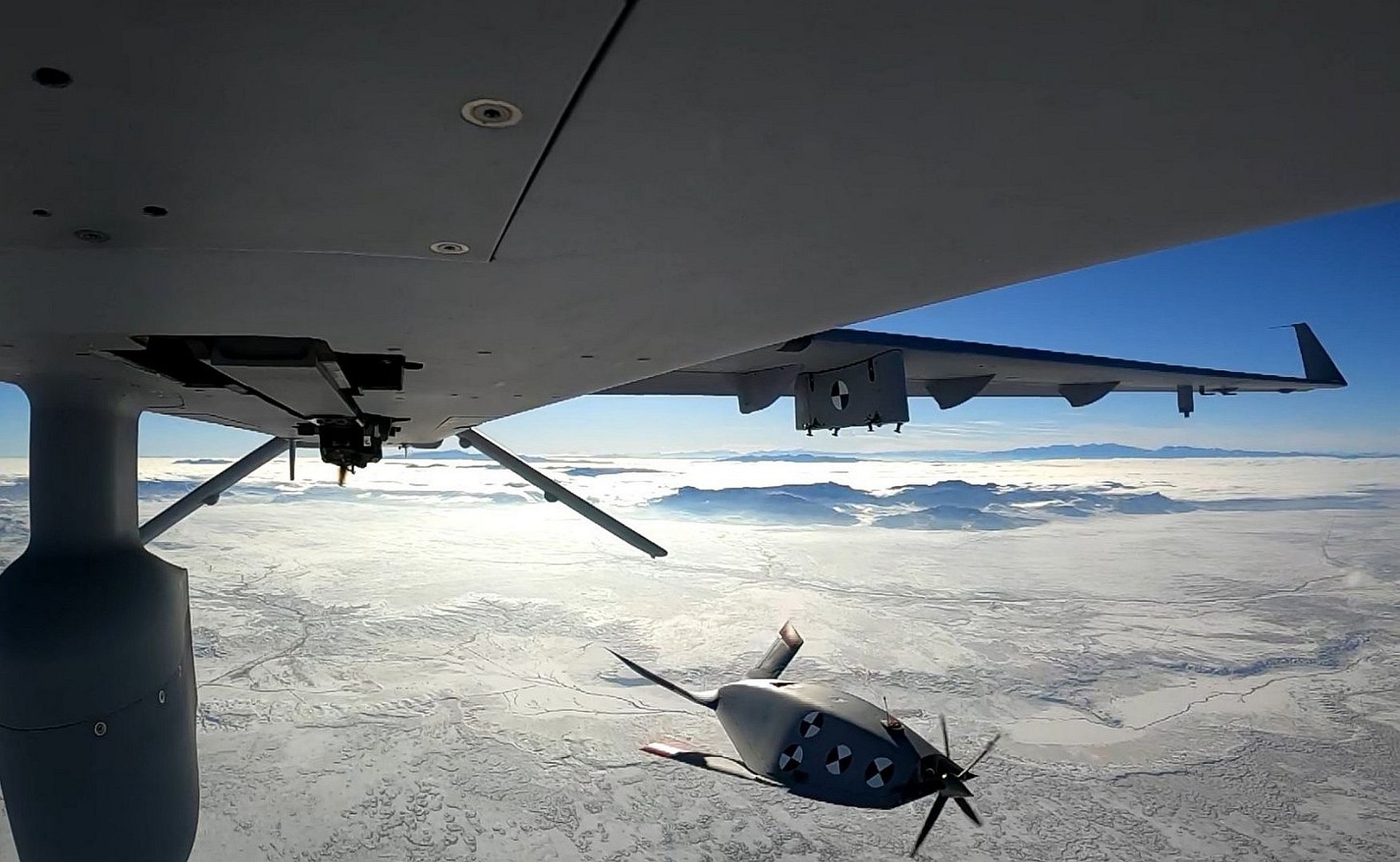
The UK has returned its BAE Systems Hawk T2 jet trainers to service following a short precautionary grounding due to engine issues.
(Photo courtesy of the RAF}
-
 Main AdminAn A-10C Thunderbolt II, assigned to the 25th Fighter Squadron, takes off during a routine training event at Osan Air Base, Republic of Korea, Jan. 30, 2023. The A-10 Thunderbolt or “Warthog” made its first flight in 1972 filling the role of a close air support aircraft. (U.S. Air Force Photo by Airman 1st Class Aaron Edwards)
Main AdminAn A-10C Thunderbolt II, assigned to the 25th Fighter Squadron, takes off during a routine training event at Osan Air Base, Republic of Korea, Jan. 30, 2023. The A-10 Thunderbolt or “Warthog” made its first flight in 1972 filling the role of a close air support aircraft. (U.S. Air Force Photo by Airman 1st Class Aaron Edwards)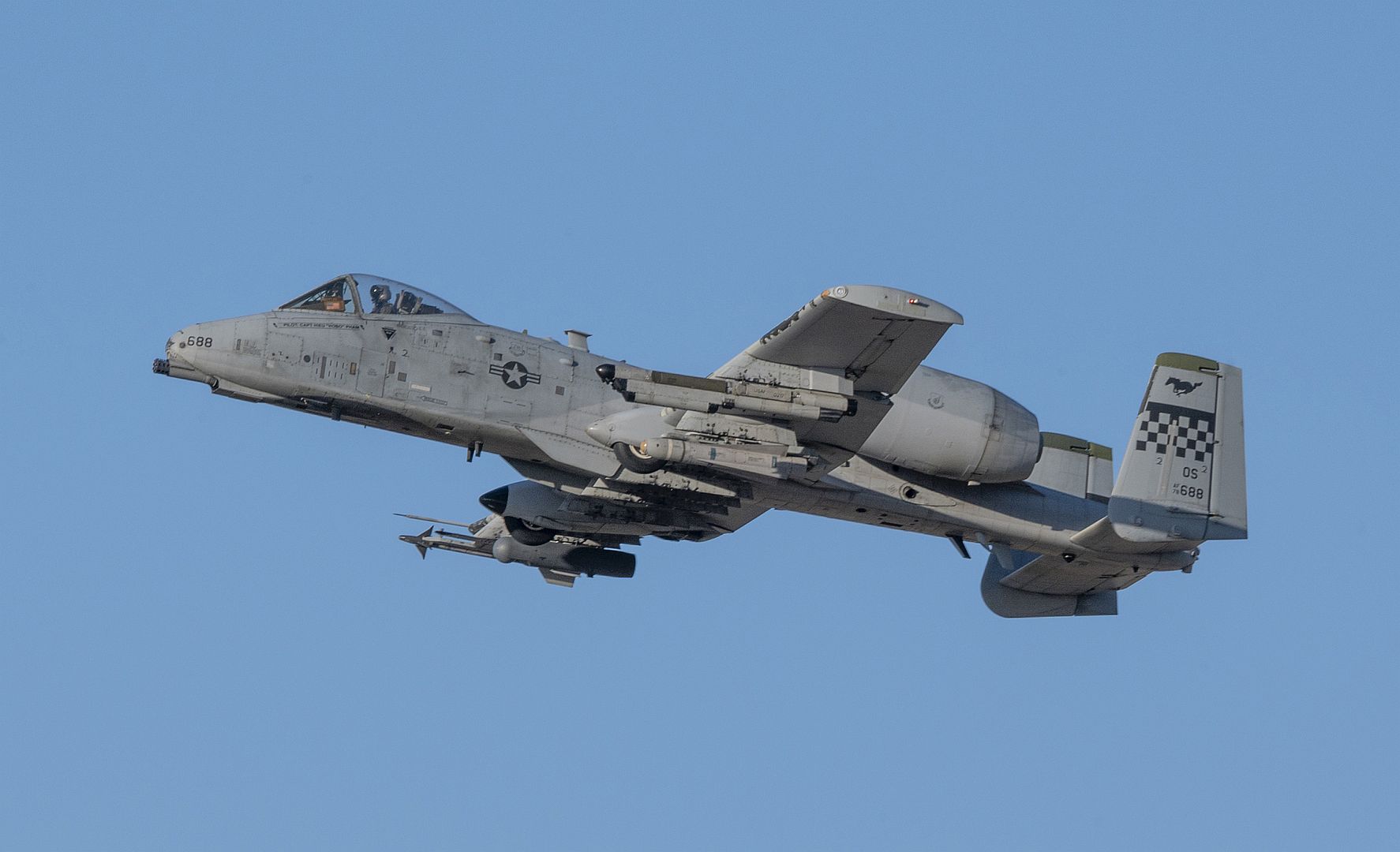
A U.S. Air Force F-16 Fighting Falcon assigned to the 36th Fighter Generation Squadron taxis to the runway as part of a training event at Osan Air Base, Republic of Korea, Jan. 31, 2023. The 36th FGS uses training events to practice generating aircraft in contingency operations. (U.S. Air Force photo by Senior Airman Trevor Gordnier)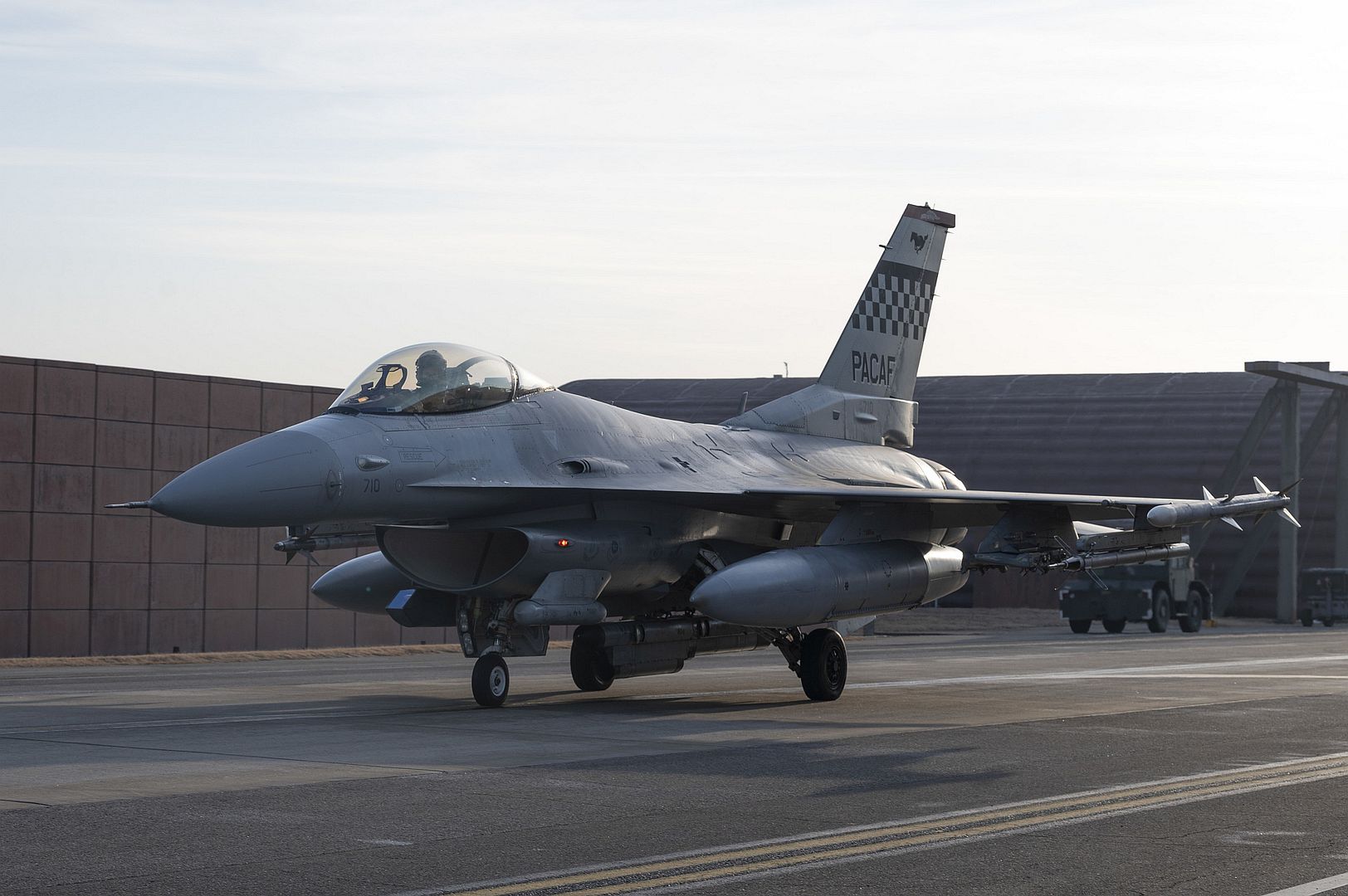
A C-130J Super Hercules assigned to the 36th Airlift Squadron launches off the flightline in support of the Airborne 23 exercise at Yokota Air Base, Japan, Jan. 31, 2023. Nine C-130J aircraft assigned to Yokota Air Base and Little Rock Air Force Base, Arkansas, were used to carry approximately 300 JGSDF paratroopers to drop zones at Higashi-Fuji training field during the static-line personnel jump portion of the exercise. Airborne 23 showcased the combined capacity between the U.S. and Japan to rapidly deploy joint forces while emphasizing their strong allied commitment to a free and open Indo-Pacific region. (U.S. Air Force photo by Tech. Sgt. Christopher Hubenthal)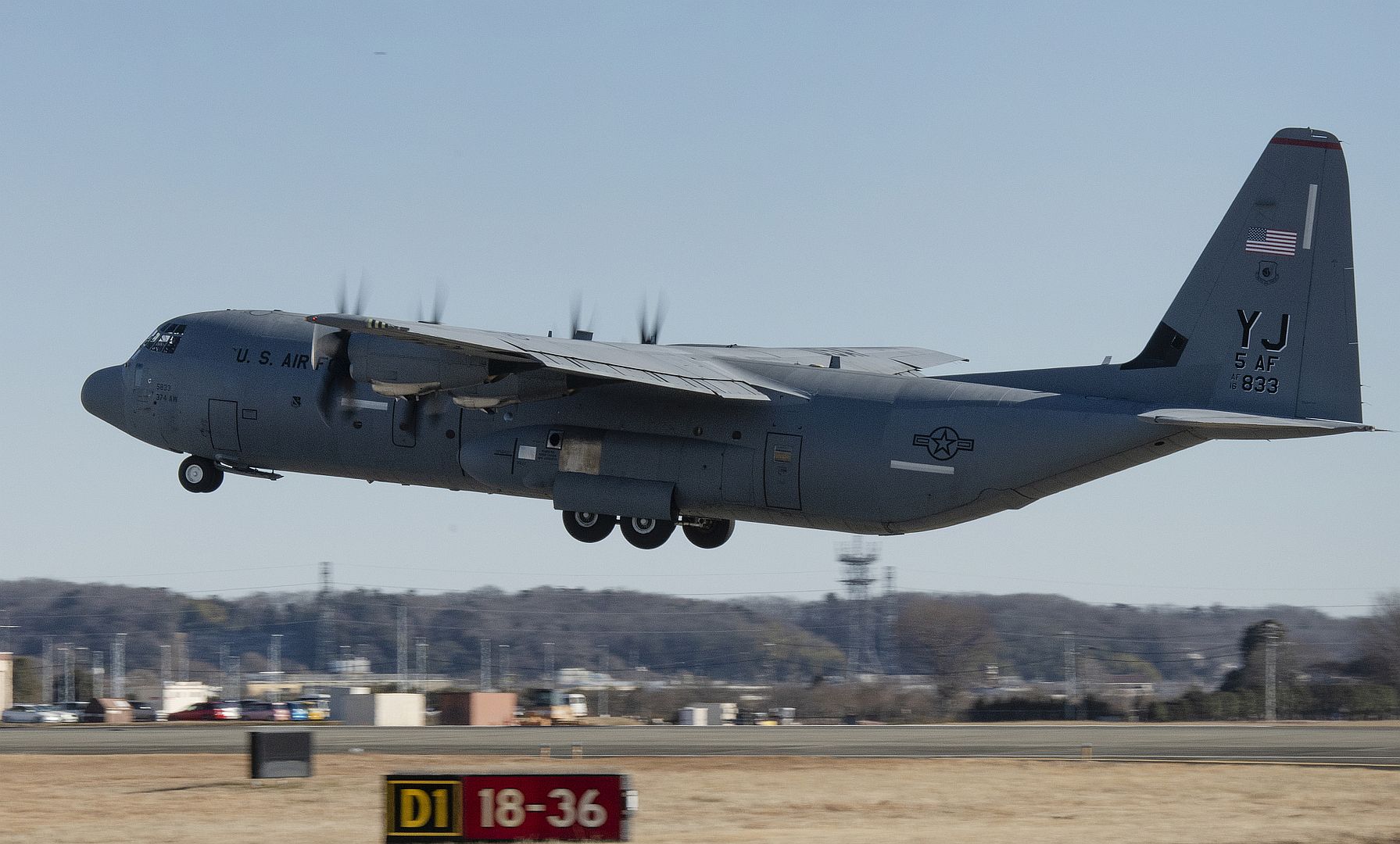
SOUTH CHINA SEA (Jan. 31, 2023) An F/A-18F Super Hornet from the “Fighting Redcocks” of Strike Fighter Squadron (VFA) 22 makes an arrested landing on the aircraft carrier USS Nimitz (CVN 68). Nimitz is in U.S. 7th Fleet conducting routine operations. 7th Fleet is the U.S. Navy's largest forward-deployed numbered fleet, and routinely interacts and operates with Allies and partners in preserving a free and open Indo-Pacific region. (U.S. Navy photo by Mass Communication Specialist 2nd Class Justin McTaggart)
SOUTH CHINA SEA (Jan. 31, 2023) An E/A-18G Growler from the “Cougars” of Electronic Attack Squadron (VAQ) 139 prepares to launch from the aircraft carrier USS Nimitz (CVN 68). Nimitz is in U.S. 7th Fleet conducting routine operations. 7th Fleet is the U.S. Navy's largest forward-deployed numbered fleet, and routinely interacts and operates with Allies and partners in preserving a free and open Indo-Pacific region. (U.S. Navy photo by Mass Communication Specialist 2nd Class Justin McTaggart)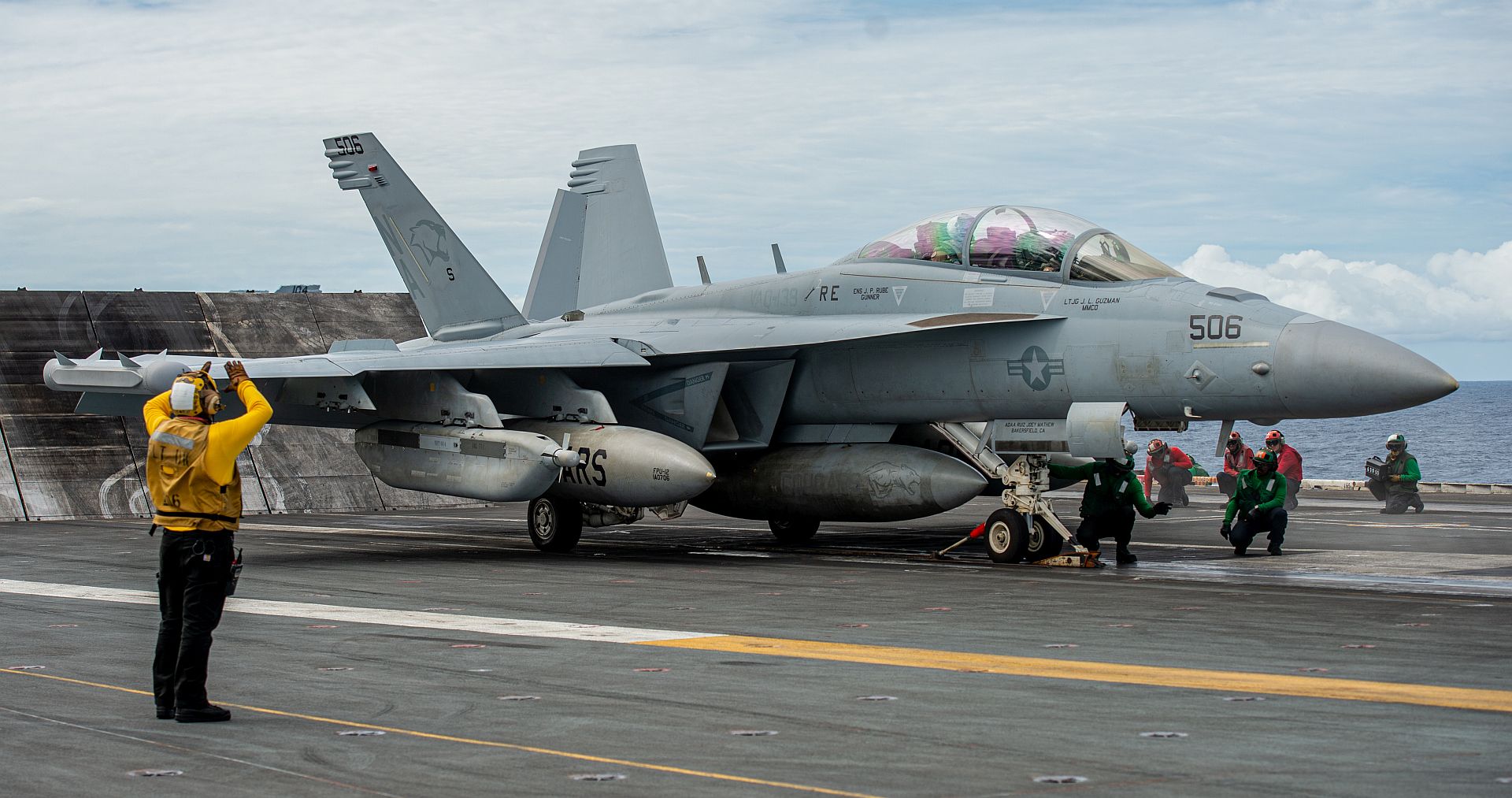
A U.S. Air Force B-52H Stratofortress manned by 69th Bomb Squadron Airmen flies over the U.S. Northern Command area of responsibility Jan. 27, 2023. The 69th BS conducted close air support training in support of the strategic deterrence mission. (U.S. Air Force photos by Senior Airman Zachary Wright)

SOUTH CHINA SEA (Feb. 1, 2023) The Arleigh Burke-class guided-missile destroyer USS Chung-Hoon (DDG 93) steams nearby as an F/A-18E Super Hornet from the "Kestrels" of Strike Fighter Squadron (VFA) 137 prepares to land aboard the aircraft carrier USS Nimitz (CVN 68), Feb. 1, 2023. Nimitz is in U.S. 7th Fleet conducting routine operations. 7th Fleet is the U.S. Navy's largest forward-deployed numbered fleet, and routinely interacts and operates with Allies and partners in preserving a free and open Indo-Pacific region. (U.S. Navy photo by Mass Communication Specialist 1st Class Nathan Laird)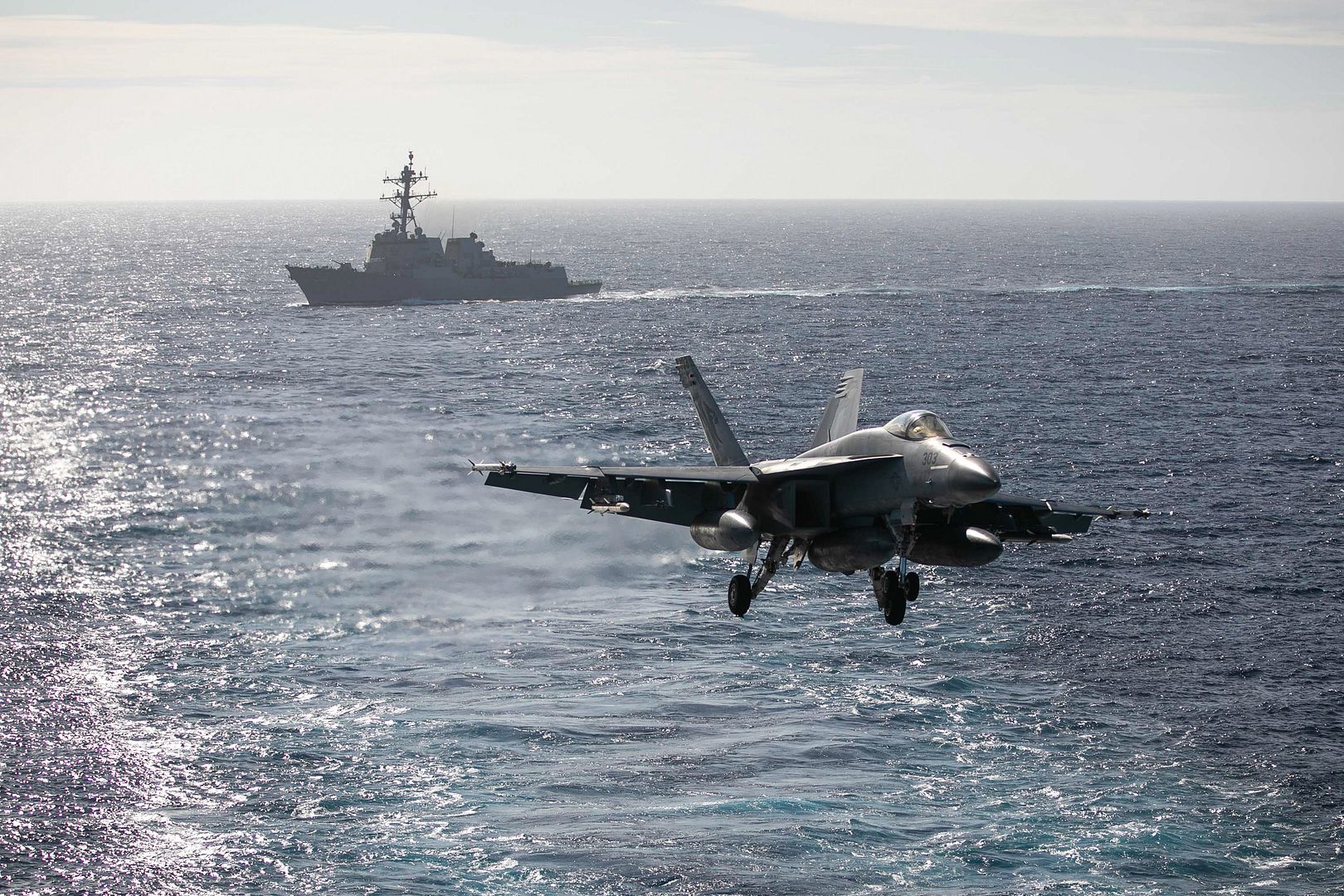
EVERETT, Wash., Jan. 31, 2023 /PRNewswire/ -- Boeing [NYSE: BA] and Atlas Air Worldwide [Nasdaq: AAWW] joined thousands of people – including current and former employees as well as customers and suppliers – to celebrate the delivery of the final 747 to Atlas, bringing to a close more than a half century of production.
Boeing employees who designed and built the first 747, known as the "Incredibles," returned to be honored at the Everett factory where the journey of the 747 began in 1967. The factory produced 1,574 airplanes over the life of the program.
"This monumental day is a testament to the generations of Boeing employees who brought to life the airplane that 'shrank the world,' and revolutionized travel and air cargo as the first widebody," said Stan Deal, president and chief executive officer of Boeing Commercial Airplanes. "It is fitting to deliver this final 747-8 Freighter to the largest operator of the 747, Atlas Air, where the 'Queen' will continue to inspire and empower innovation in air cargo."
"We are honored to continue our long history of flying this iconic aircraft for our customers around the world," said John Dietrich, president and chief executive officer, Atlas Air Worldwide. "Atlas Air was founded over 30 years ago with a single 747-200 converted freighter, and since then, we have spanned the globe operating nearly every fleet type of the 747, including the Dreamlifter, Boeing's 747 Large Cargo Freighter, for the transport of 787 Dreamliner parts. We are grateful to Boeing for their shared commitment to safety, quality, innovation and the environment, and for their partnership to ensure the continued success of the 747 program as we operate the aircraft for decades to come."
As the first twin-aisle airplane and "jumbo jet," the "Queen of the Skies" enabled airlines to connect people across vast distances and provide non-stop trans-oceanic flights. Its development solidified Boeing's role as an industry leader in commercial aviation. The airplane's core design with its distinctive hump and seating in the upper deck has delighted generations of passengers and operators alike. Boeing continued to improve on the original design with models like the 747-400 in 1988 and the final 747-8 model that was launched in 2005; across all the models, the jet has delivered unmatched operating economics and efficiency to travel and air cargo markets.
As a leading global aerospace company, Boeing develops, manufactures and services commercial airplanes, defense products and space systems for customers in more than 150 countries. As a top U.S. exporter, the company leverages the talents of a global supplier base to advance economic opportunity, sustainability and community impact. Boeing's diverse team is committed to innovating for the future, leading with sustainability, and cultivating a culture based on the company's core values of safety, quality and integrity. Join our team and find your purpose at boeing.com/careers.
-
 Main AdminAn F-16 Fighting Falcon, assigned to the 555th Fighter Squadron, flies overhead during exercise Emerald Strike 2023 at Grosseto Air Base, Italy, Jan. 31, 2023. The F-16 Fighting Falcon is a compact, multi-role fighter aircraft. It is highly maneuverable and has proven itself in air-to-surface attack. It provides a relatively low-cost, high-performance weapon system for the United States and allied nations. (U.S. Air Force photo by Senior Airman Noah Sudolcan)
Main AdminAn F-16 Fighting Falcon, assigned to the 555th Fighter Squadron, flies overhead during exercise Emerald Strike 2023 at Grosseto Air Base, Italy, Jan. 31, 2023. The F-16 Fighting Falcon is a compact, multi-role fighter aircraft. It is highly maneuverable and has proven itself in air-to-surface attack. It provides a relatively low-cost, high-performance weapon system for the United States and allied nations. (U.S. Air Force photo by Senior Airman Noah Sudolcan)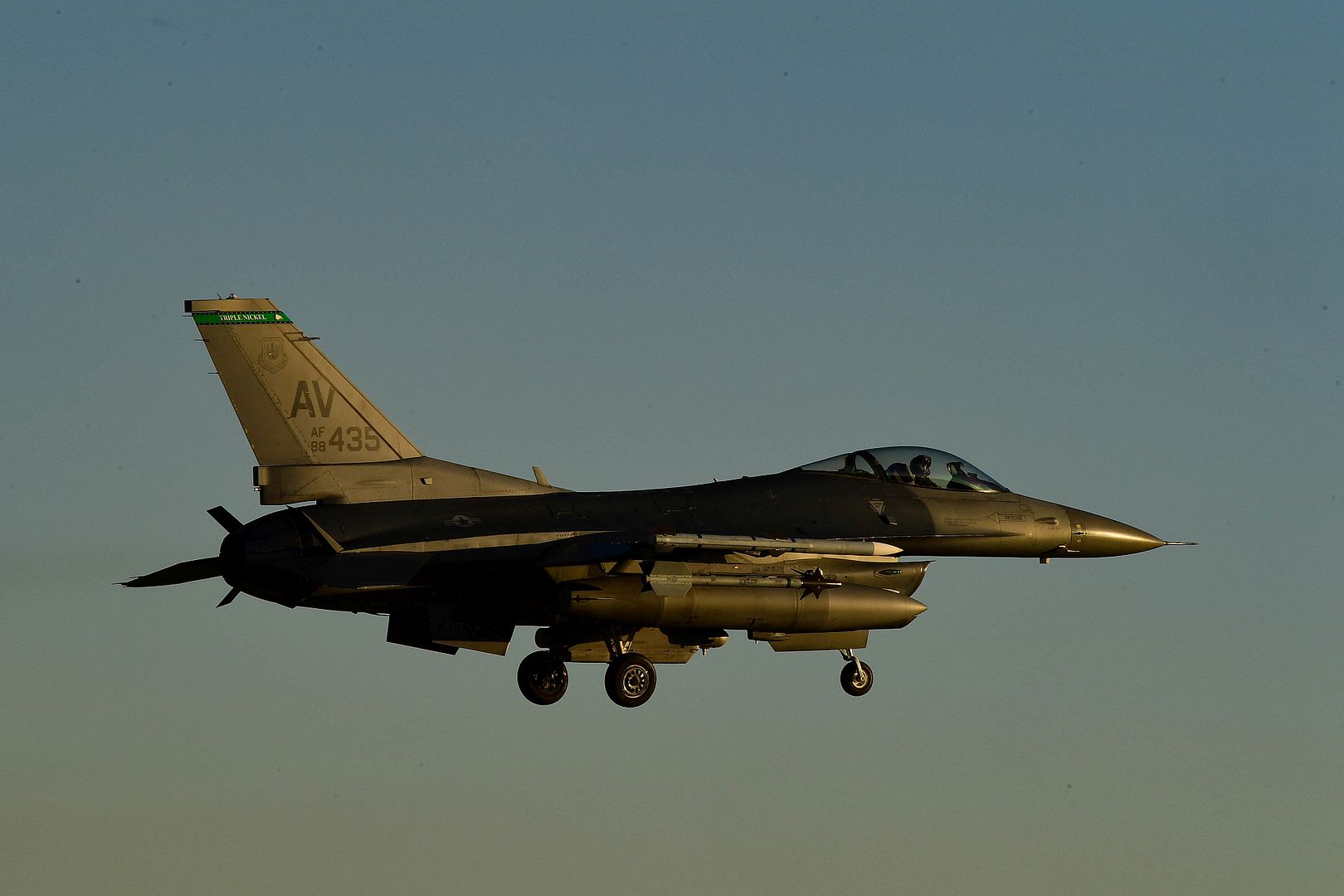
U.S. Air Force Senior Airman Isaac Ronning, 555th Fighter Generation Squadron crew chief, walks on top of an F-16 Fighting Falcon assigned to the 555th FS during exercise Emerald Strike 2023 at Grosseto Air Base, Italy, Jan. 30, 2023. Exercise Emerald Strike 2023 is designed to demonstrate the ability to conduct joint offensive and defensive air operations with our partners and Allies. (U.S. Air Force photo by Senior Airman Noah Sudolcan)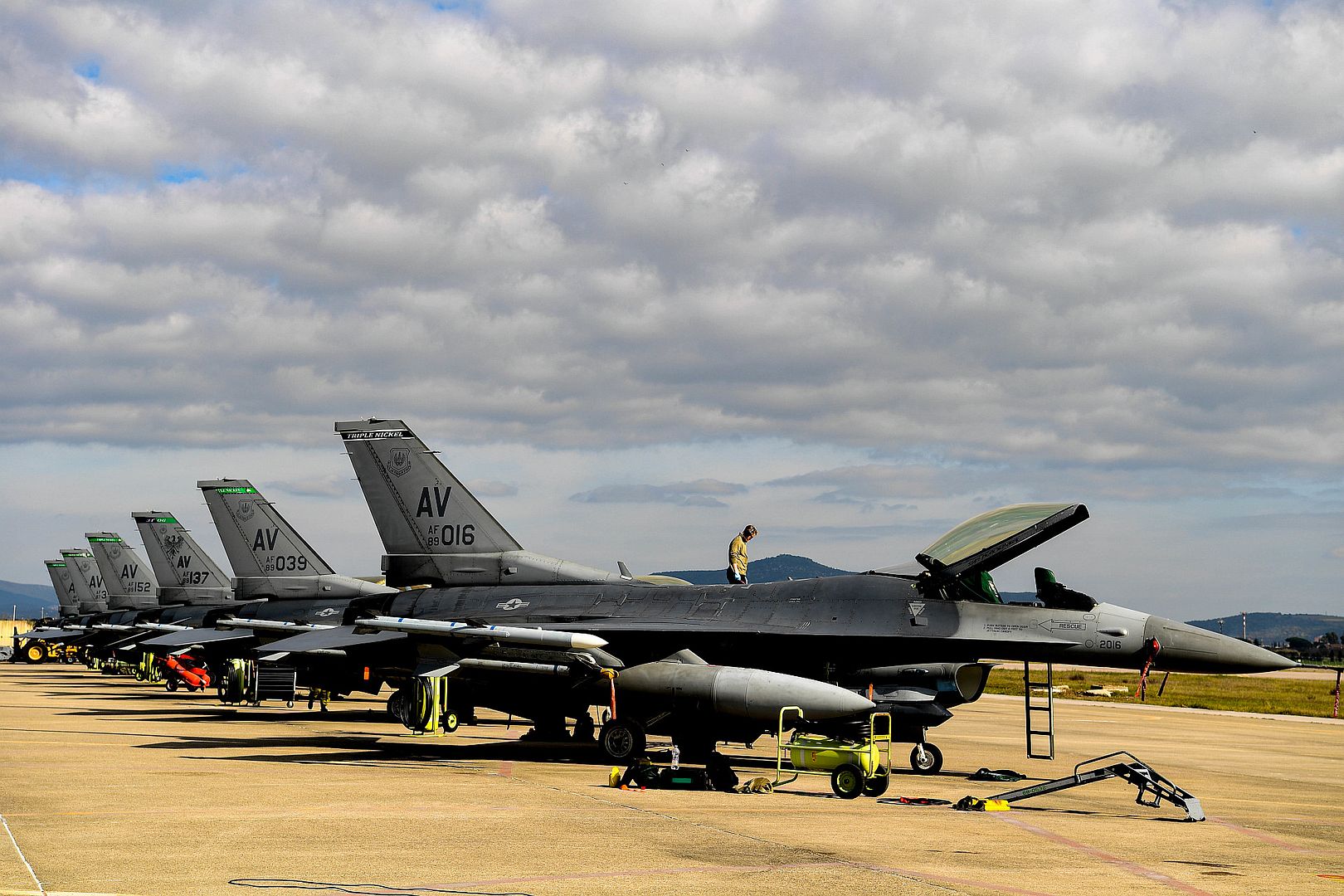
A U.S. Air Force F-16 Fighting Falcon, 36th Fighter Squadron, takes off during a training event at Daegu Air Base, Republic of Korea, Jan. 31, 2023. Osan AB regularly conducts training events where Airmen mobilize to contingency operating bases to bolster readiness and utilize strategies to increase lethality. (U.S. Air Force photo by Staff Sgt. Dwane R. Young)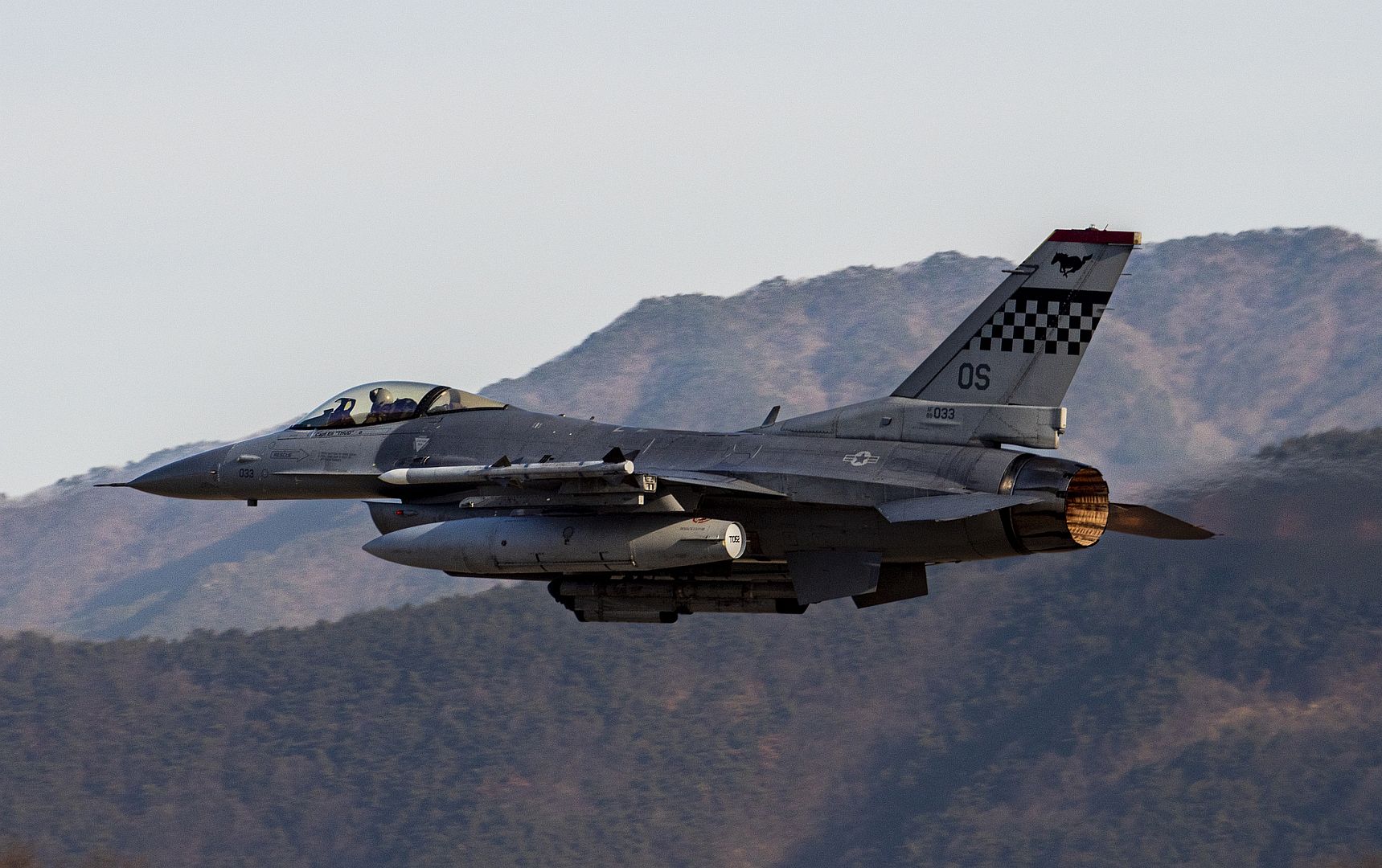
Three U.S. Air Force C-130J Super Hercules aircraft and a Spanish Casa C-295 aircraft sit on the flightline in Zaragoza, Spain during exercise Chasing Sol, Jan. 31, 2023. Exercises like Chasing Sol improve coordination with allies and partners by increasing capabilities, readiness and responsiveness. (U.S. Air Force photo by Staff Sgt. Megan M. Beatty)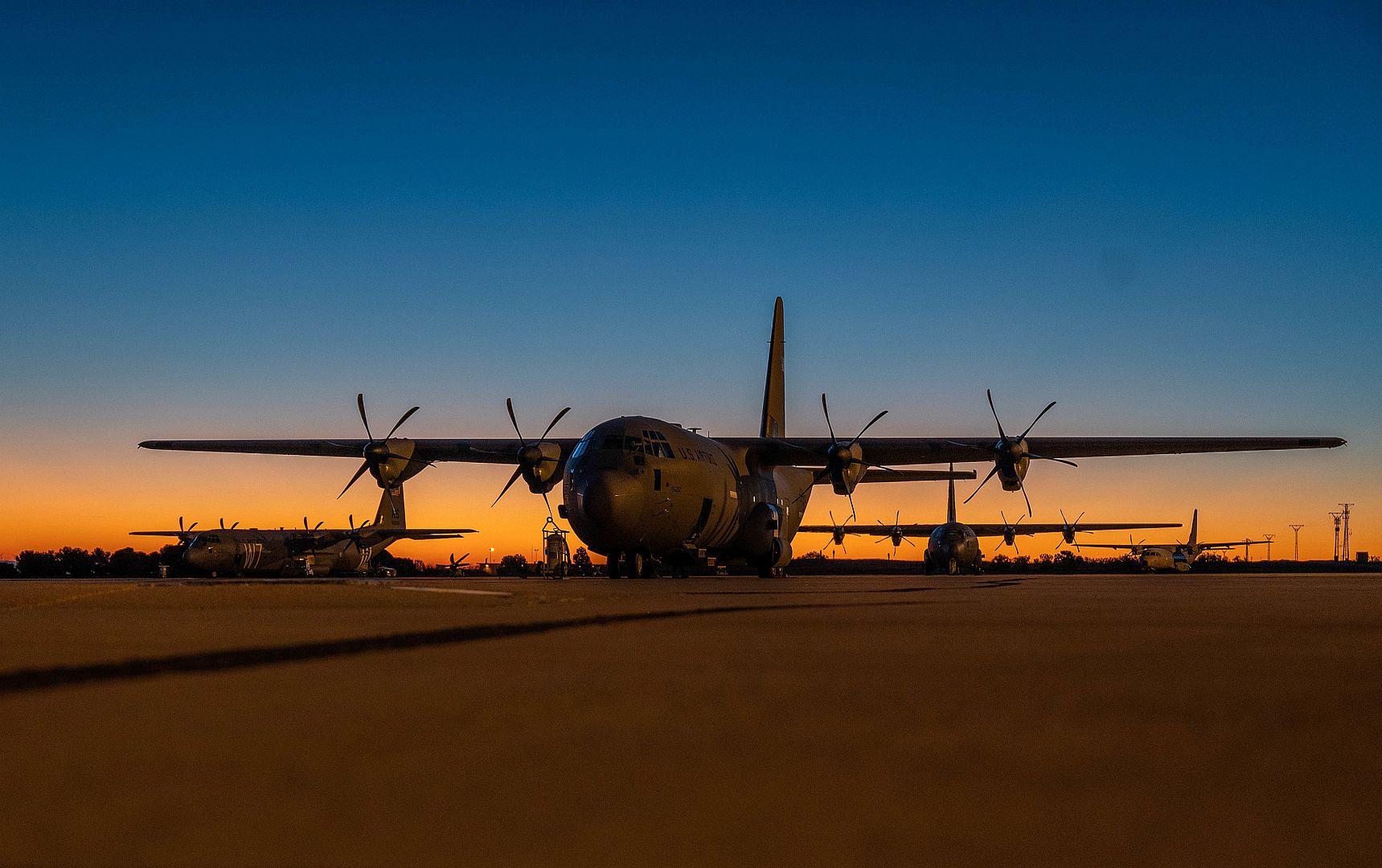
01.31.2023
An LC-130 which is a ski-equipped Hercules from 139th Expeditionary Airlift Squadron lands at Williams Field, a compacted snow ice runway at McMurdo Station, Antarctica. Joint Task Force–Support Forces Antarctica (JTF–SFA), oversees the activities of the joint services and provides Department of Defense support to the National Science Foundation (NSF) and United States Antarctic Program (USAP) through Operation Deep Freeze. (U.S. Navy photos by Senior Chief Mass Communication Specialist RJ Stratchko/Released)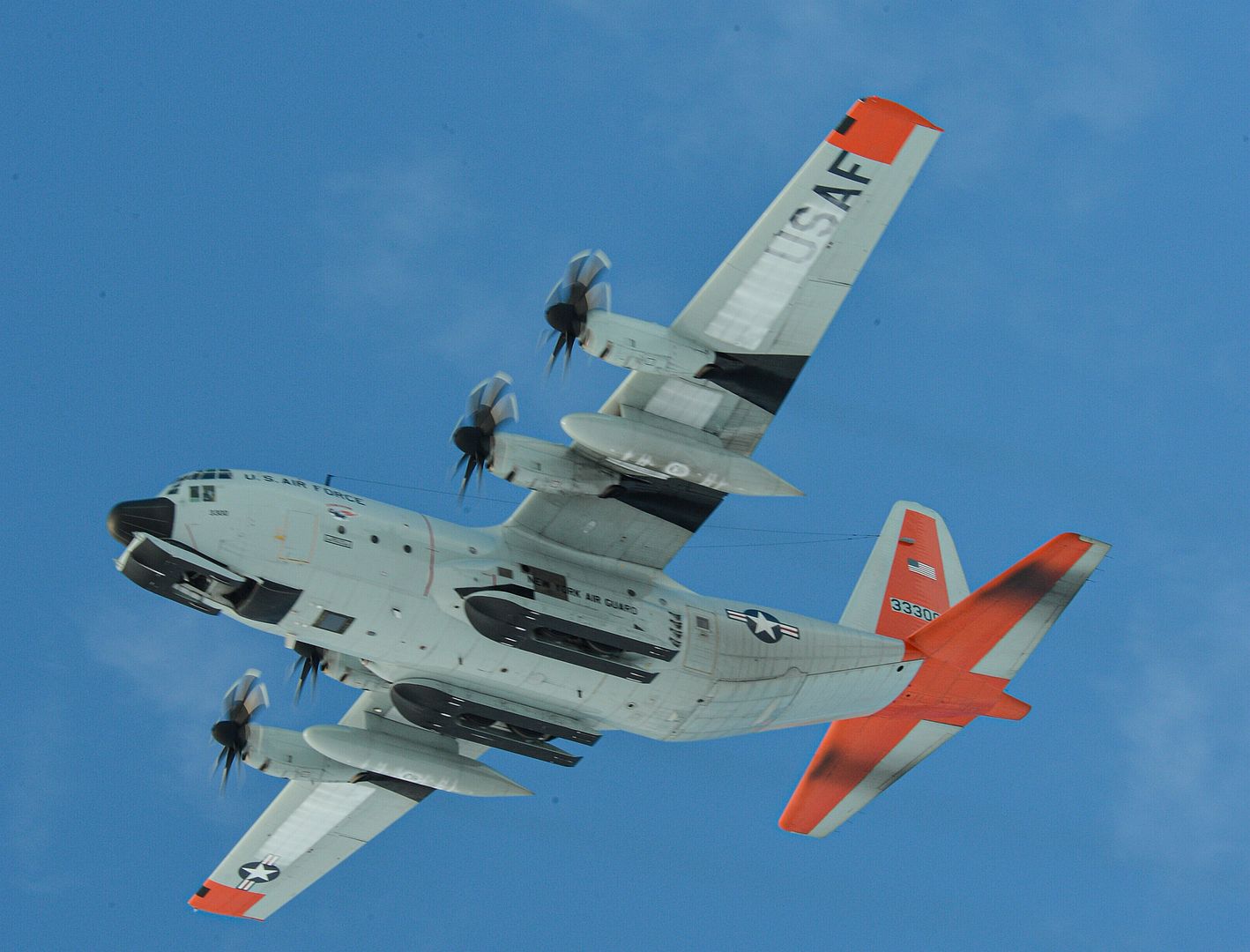

A Royal Air Force Typhoon FGR4, flies during a Red Flag-Nellis (RF-N) 23-1 mission over the Nevada Test and Training Range, Jan. 26, 2023. RF-N increases interoperability between partner nations and across the joint force as service members train together against high-end realistic scenarios. (U.S. Air Force photo by Senior Airman Megan Estrada)_23-1_mission_over_the_Nevada_Test_and_Training_Range_Jan._26_2023.jpg?width=1920&height=1080&fit=bounds)
U.S. Marine Corps F-35Bs from Marine Fighter Attack Squadron-211, await refueling from a Royal Air Force Voyager KC in participation of Red Flag-Nellis 23-1 (RF-N) over the Nevada Test and Training Range, Jan. 26, 2023. RF-N gives U.S. and allied forces an opportunity to increase cooperation, collaboration and interoperability. (U.S. Air Force photo by Senior Airman Megan Estrada)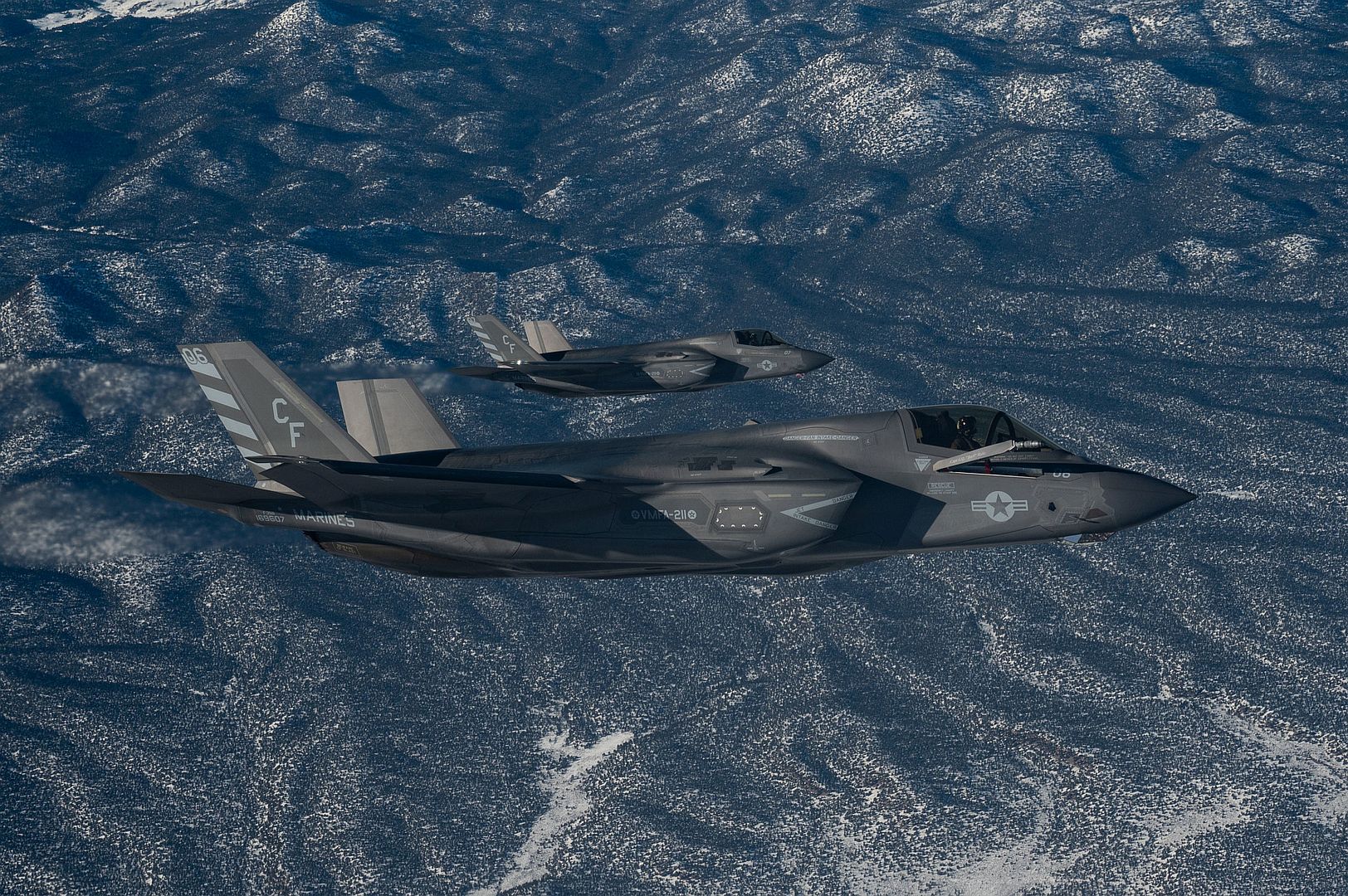
SAN DIEGO – 02 February 2023 – On Dec. 22, 2022, General Atomics Aeronautical Systems, Inc. (GA-ASI) and the Air National Guard (ANG), with joint support from the U.S. Marine Corps (USMC) and U.S. Air Force (USAF), flight tested an MQ-9A remotely piloted aircraft (RPA) equipped with a Low Earth Orbit (LEO) satellite communications (SATCOM) Command and Control system. This groundbreaking capability provides global coverage and connectivity that will enable pole-to-pole operations for GA-ASI’s family of RPA – including models such as the MQ-9B SkyGuardian®/SeaGuardian®, MQ-9A Reaper, and Gray Eagle 25M.
“This is truly game-changing for our platforms,” said GA-ASI President David R. Alexander. “Using LEO SATCOM not only keeps GA-ASI aircraft connected from the North Pole to the South Pole to allow operations in the most austere environments, but it will also provide resilient connectivity that allows operators to pass much more data to and from the aircraft.”
Early testing indicates LEO SATCOM significantly reduces latency and can be used in all phases of flight. For customers across the MQ-9 family of systems, LEO SATCOM should decrease operational costs, and the smaller hardware footprint will ultimately increase flexibility and reduce future payload integration costs.
The MQ-9A flight test was based out of GA-ASI’s Gray Butte Flight Operations Facility near Palmdale, Calif., and followed several weeks of ground testing.
About GA-ASI
General Atomics Aeronautical Systems, Inc. (GA-ASI), an affiliate of General Atomics, is a leading designer and manufacturer of proven, reliable remotely piloted aircraft (RPA) systems, radars, and electro-optic and related mission systems, including the Predator® RPA series and the Lynx® Multi-mode Radar. With more than seven million flight hours, GA-ASI provides long-endurance, mission-capable aircraft with integrated sensor and data link systems required to deliver persistent flight that enables situational awareness and rapid strike. The company also produces a variety of ground control stations and sensor control/image analysis software, offers pilot training and support services, and develops meta-material antennas. For more information, visit www.ga-asi.com
-
 Main AdminA Spanish A400M Atlas aircraft lands in a drop zone during exercise Chasing Sol near Zaragoza, Spain, Feb. 2, 2023. Chasing Sol is a bilateral flying training deployment between the U.S. Air Force and Spanish air force to increase interoperability between NATO allies and ensure timely and coordinated responses during peacetime and crisis. (U.S. Air Force photo by Airman 1st Class Madelyn Keech)
Main AdminA Spanish A400M Atlas aircraft lands in a drop zone during exercise Chasing Sol near Zaragoza, Spain, Feb. 2, 2023. Chasing Sol is a bilateral flying training deployment between the U.S. Air Force and Spanish air force to increase interoperability between NATO allies and ensure timely and coordinated responses during peacetime and crisis. (U.S. Air Force photo by Airman 1st Class Madelyn Keech)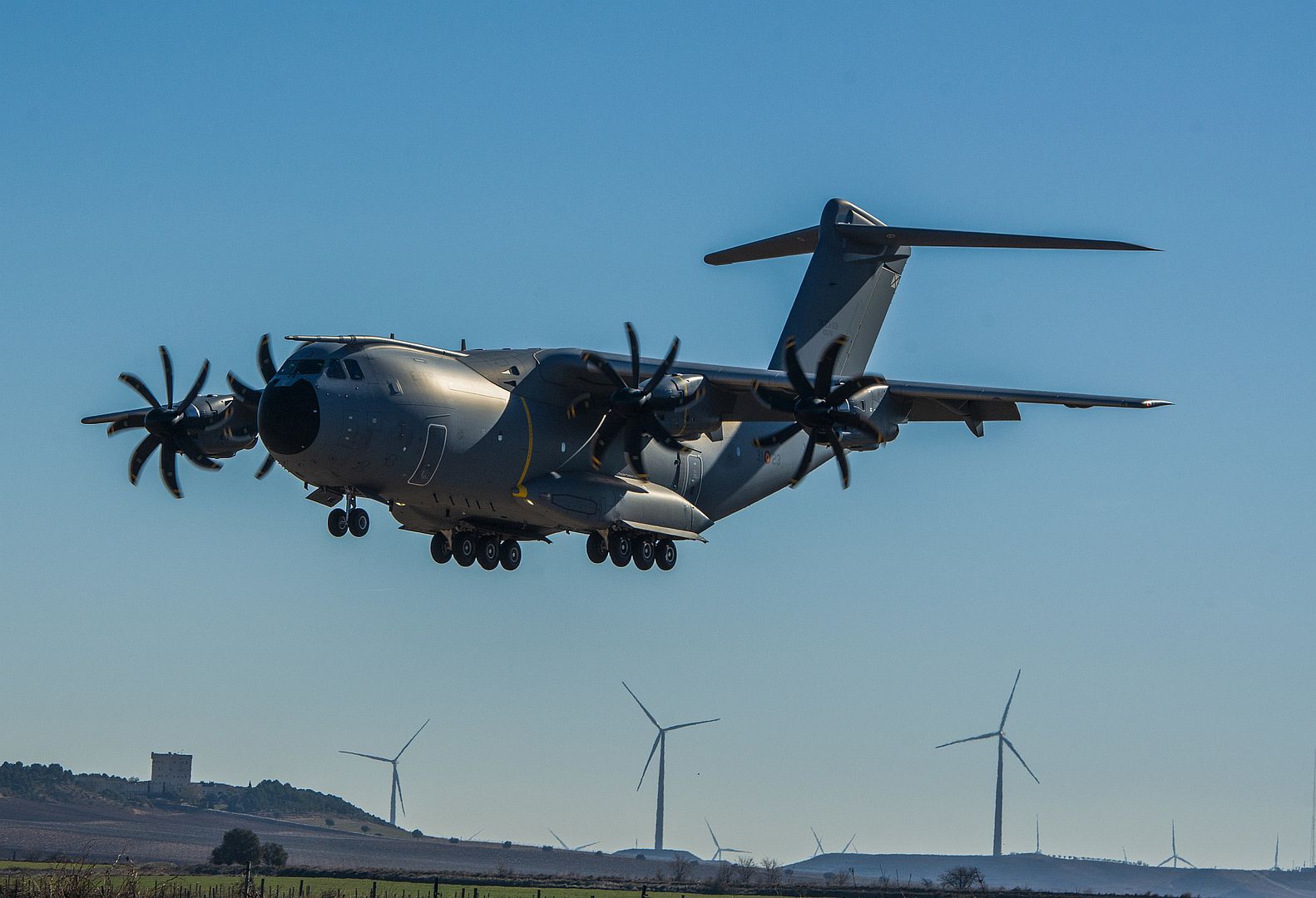
02.03.2023
A U.S. Air Force RC-135 Rivet Joint aircraft assigned to the 95th Reconnaissance Squadron is refueled by a KC-135 Stratotanker aircraft assigned to the 100th Air Refueling Wing, Royal Air Force Mildenhall, England, while a Norwegian air force F-35 Lightning aircraft flies alongside during a mission in 2022. The 100th ARW provides unrivaled air refueling support throughout Europe and Africa. The 95th RS is a component unit of the 55th Wing, Offutt Air Force Base, Neb., though they are currently assigned to RAF Mildenhall to conduct sensitive reconnaissance operations throughout the European and Mediterranean theaters. (Courtesy photo)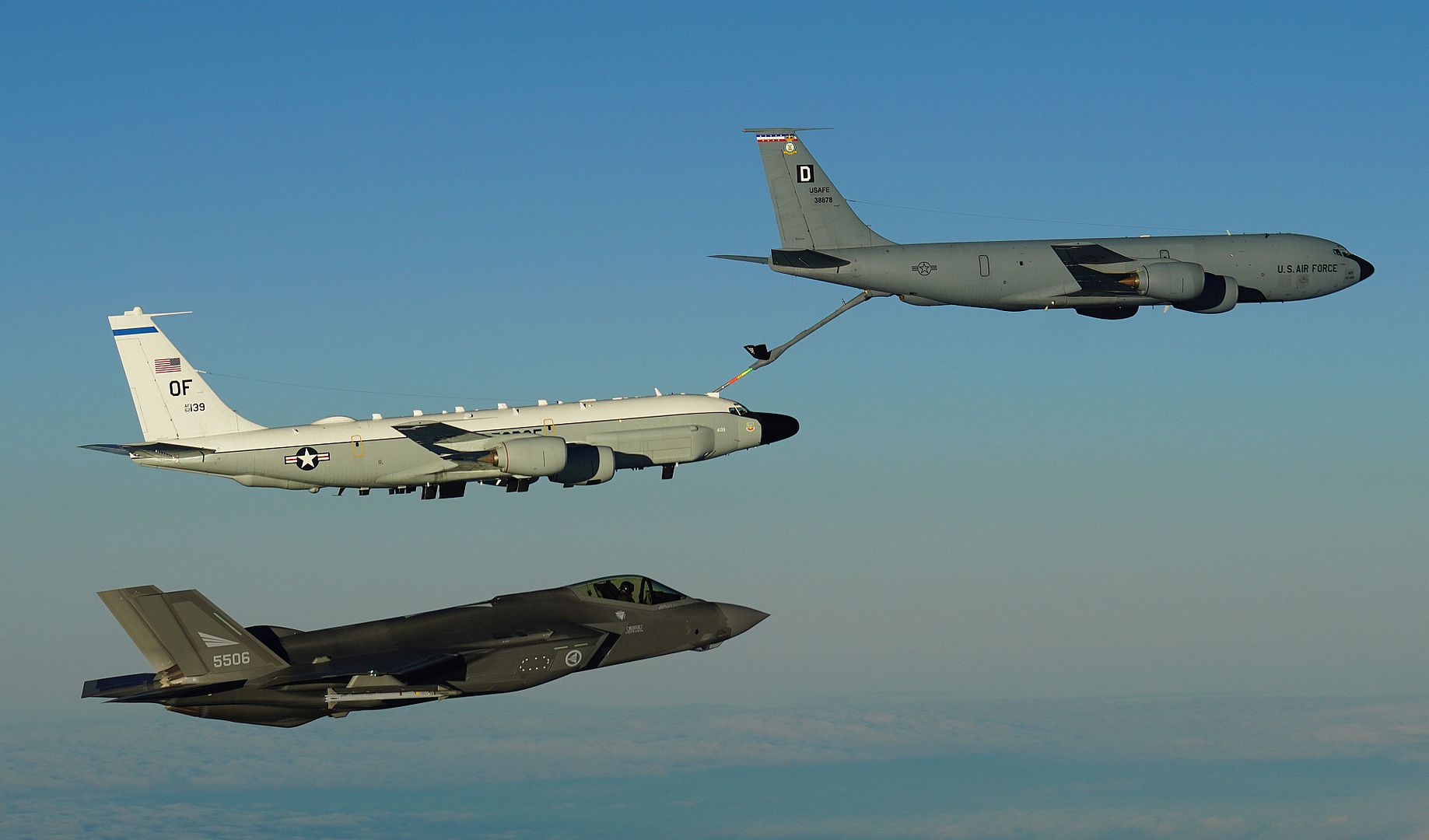
An AC-130J Ghostrider Gunship takes flight at Hurlburt Field, Fla., Feb. 1, 2023. The AC-130 gunships have an extensive combat history dating back to Vietnam. (U.S. Air Force photo by Airman Bailey Wyman)
U.S. Air Force Airman 1st Class Delaney E. Smith, left, and Staff Sgt. Andrew Squadrito, both aircraft maintenance crew chiefs assigned to the 122nd Fighter Wing, Indiana Air National Guard perform a post-flight inspection on an A-10C Thunderbolt II aircraft during Guardian Blitz at MacDill Air Force Base, Florida, Feb. 2, 2023. During the final exercise with the A-10C before converting to the F-16 Fighting Falcon aircraft, the 122nd FW trained on maneuvers and logistics in a deployed environment with the main force positioned at MacDill Air Force Base and a contingency force at Moody Air Force Base. (U.S. Air National Guard photos by Staff Sgt. Kathleen LaCorte)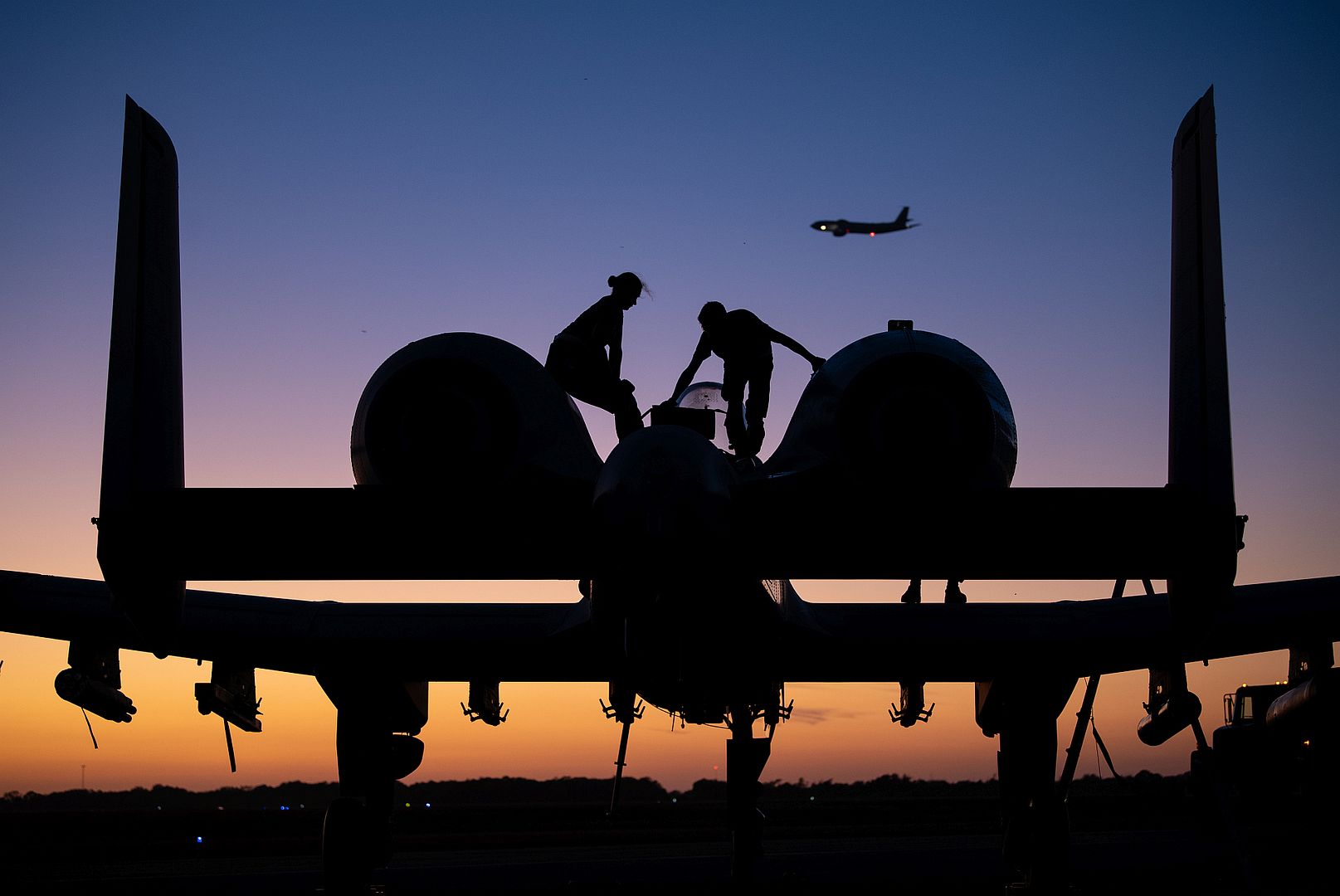
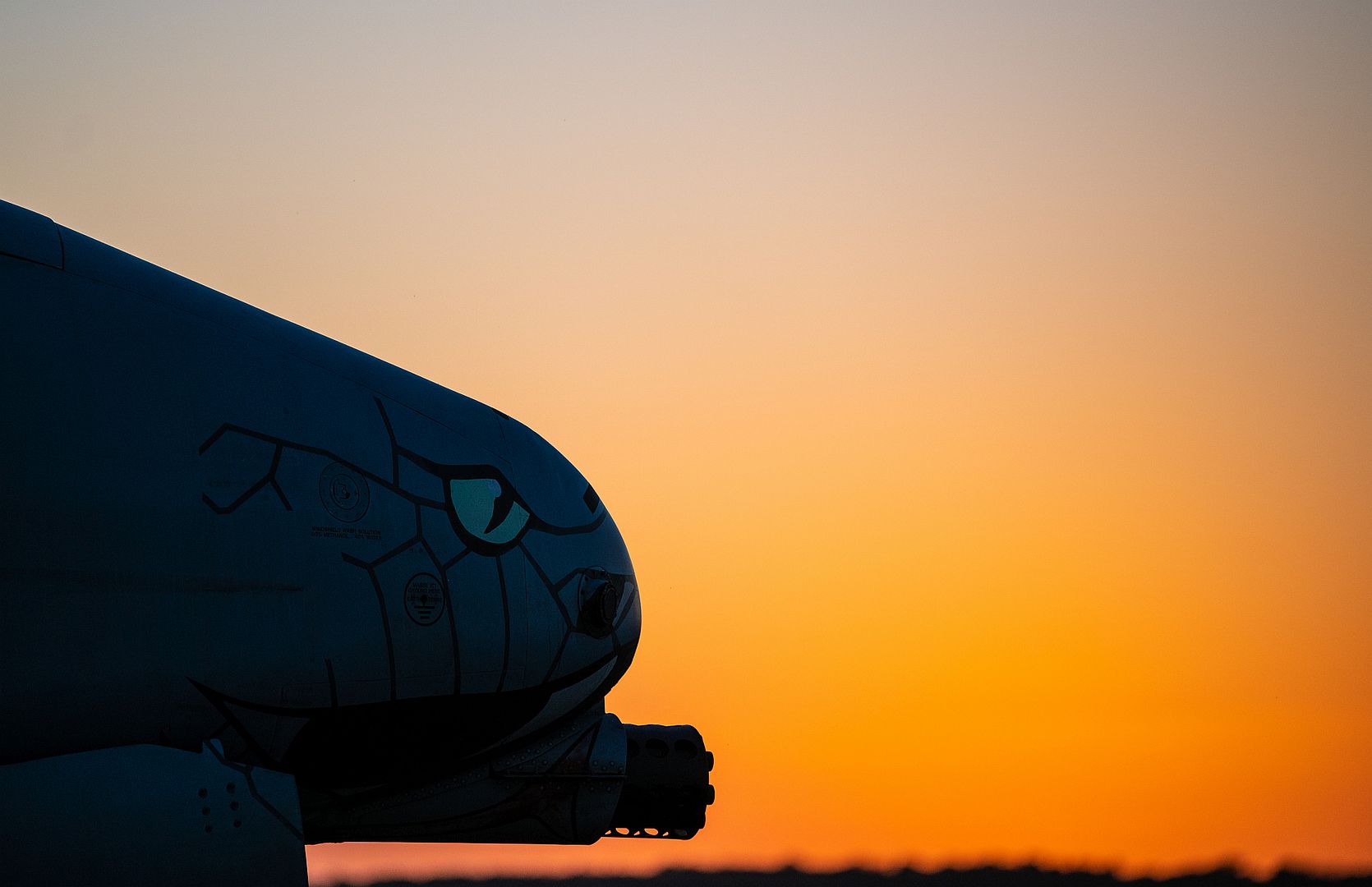
PIRAEUS, Greece (Feb. 3, 2023) The Nimitz-class aircraft carrier USS George H.W. Bush (CVN 77), along with the embarked staff of Carrier Strike Group (CSG) 10, arrives in Piraeus, Greece, for a scheduled port visit, Feb. 3, 2023. The George H.W. Bush CSG is on a scheduled deployment in the U.S. Naval Forces Europe area of operations, employed by U.S. Sixth Fleet to defend U.S., allied, and partner interests. (U.S. Navy photo by Mass Communication Specialist 3rd Class Chandler Ludke)_along_with_the_embarked_staff_of_Carrier_Strike_Group_(CSG)_10_arrives_in_Piraeus_Greece_for_a_scheduled_port_visit_Feb._3_2023-1..jpg?width=1920&height=1080&fit=bounds)
_along_with_the_embarked_staff_of_Carrier_Strike_Group_(CSG)_10_arrives_in_Piraeus_Greece_for_a_scheduled_port_visit_Feb._3_2023..jpg?width=1920&height=1080&fit=bounds)
SOUTH CHINA SEA (Feb. 3, 2023) An F/A-18F Super Hornet from the “Fighting Redcocks” of Strike Fighter Squadron (VFA) 22 launches from the aircraft carrier USS Nimitz (CVN 68). Nimitz is in U.S. 7th Fleet conducting routine operations. 7th Fleet is the U.S. Navy's largest forward-deployed numbered fleet, and routinely interacts and operates with Allies and partners in preserving a free and open Indo-Pacific region. (U.S. Navy photo by Mass Communication Specialist 2nd Class Justin McTaggart)_22_launches_from_the_aircraft_carrier_USS_Nimitz.jpg?width=1920&height=1080&fit=bounds)
SOUTH CHINA SEA (Feb. 3, 2023) An F/A-18F Super Hornet from the “Fighting Redcocks” of Strike Fighter Squadron (VFA) 22 makes an arrested landing aboard the aircraft carrier USS Nimitz (CVN 68). Nimitz is in U.S. 7th Fleet conducting routine operations. 7th Fleet is the U.S. Navy's largest forward-deployed numbered fleet, and routinely interacts and operates with Allies and partners in preserving a free and open Indo-Pacific region. (U.S. Navy photo by Mass Communication Specialist 2nd Class Justin McTaggart)_22_makes_an_arrested_landing_aboard_the_aircraft_carrier_USS_Nimitz.jpg?width=1920&height=1080&fit=bounds)
An F-16 Fighting Falcon assigned to the 16th Weapons Squadron taxis for a mission during Red Flag 23-1 at Nellis Air Force Base, Nevada Jan. 23, 2023. The Weapons School provides academic and advisory support to numerous unit, enhancing air combat training for Airmen from the Air Force, Department of Defense and U.S. allied services each year. (U.S. Air Force photo by Staff Sgt. Michael Jones)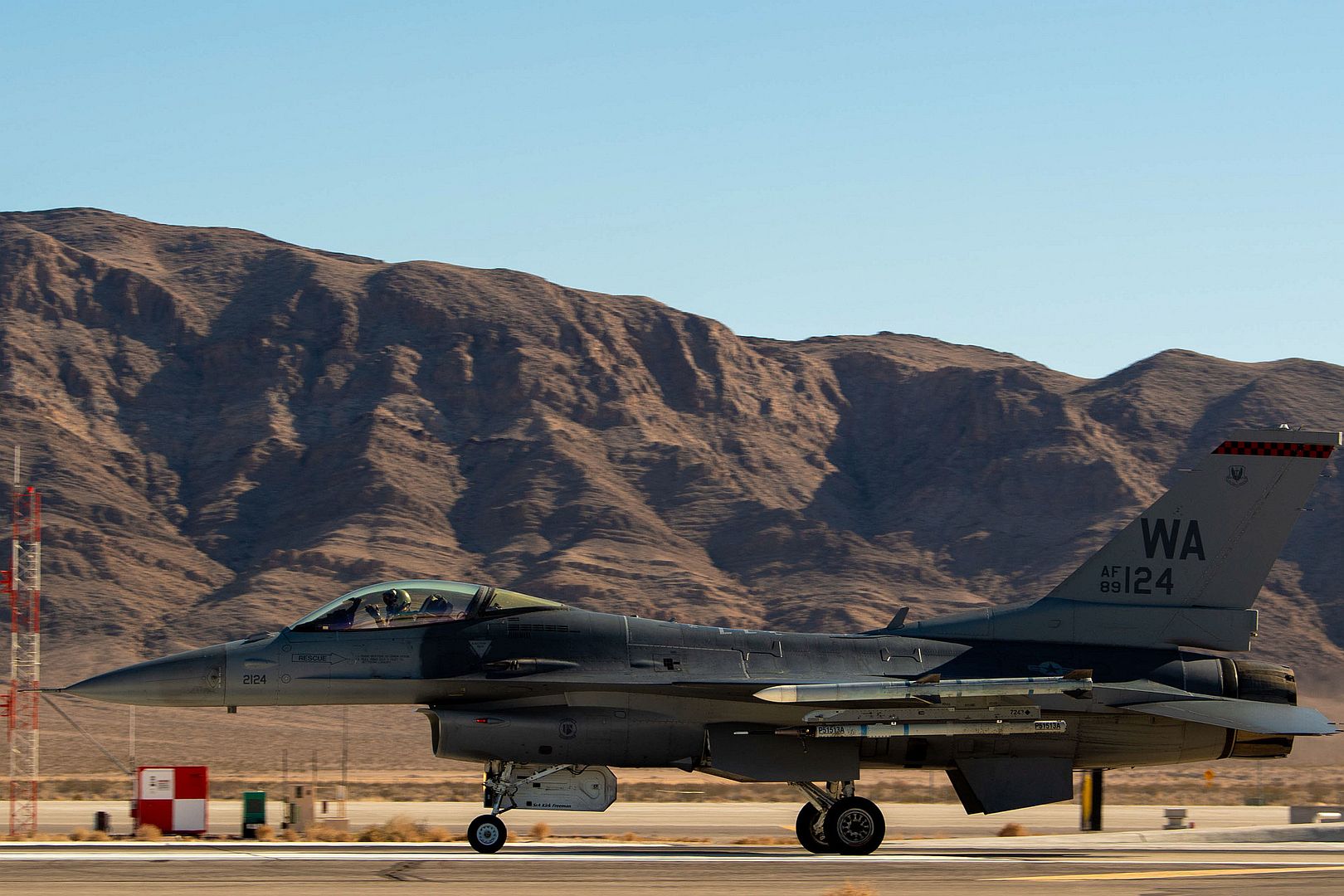
An F-16 Fighting Falcon assigned to the 64th Aggressor Squadron takes off for a mission, during Red Flag 23-1 at Nellis Air Force Base, Nevada Jan. 23, 2023. During Red Flag 23-1 the aggressor nation refines threat replication, applies advanced threats and jamming capabilities and increased threat potentials to maximize training in non-permissive environments. (U.S. Air Force photo by Staff Sgt. Michael Jones)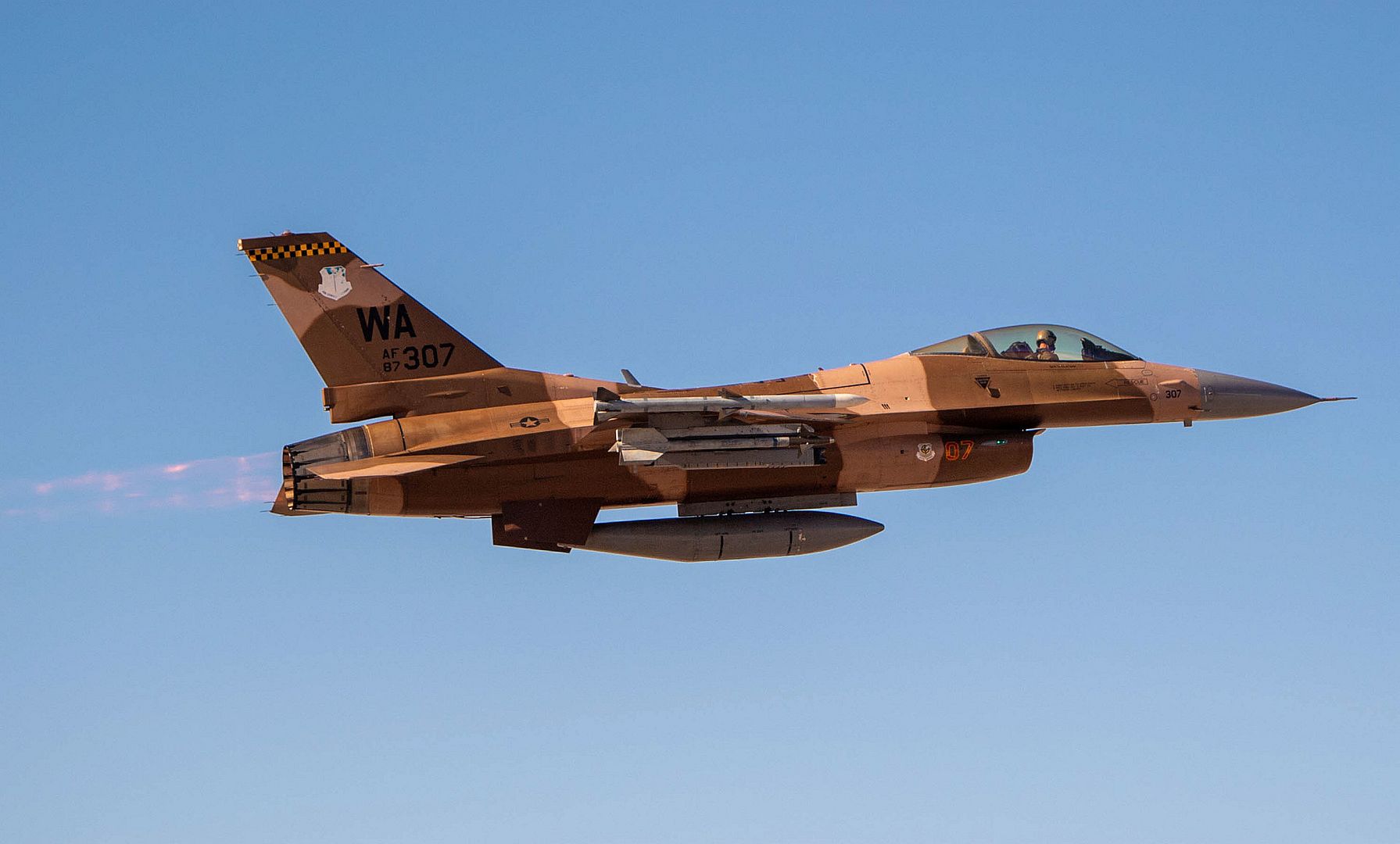
An F-16 Fighting Falcon assigned to the 64th Aggressor Squadron, takes off for a mission, during Red Flag 23-1 at Nellis Air Force Base, Nevada Jan. 23, 2023. The 414th Combat Training Squadron conducts Red Flag exercises to provide aircrews the experience of multiple, intensive air combat sorties in the safety of a training environment. (U.S. Air Force photo by Staff Sgt. Michael Jones)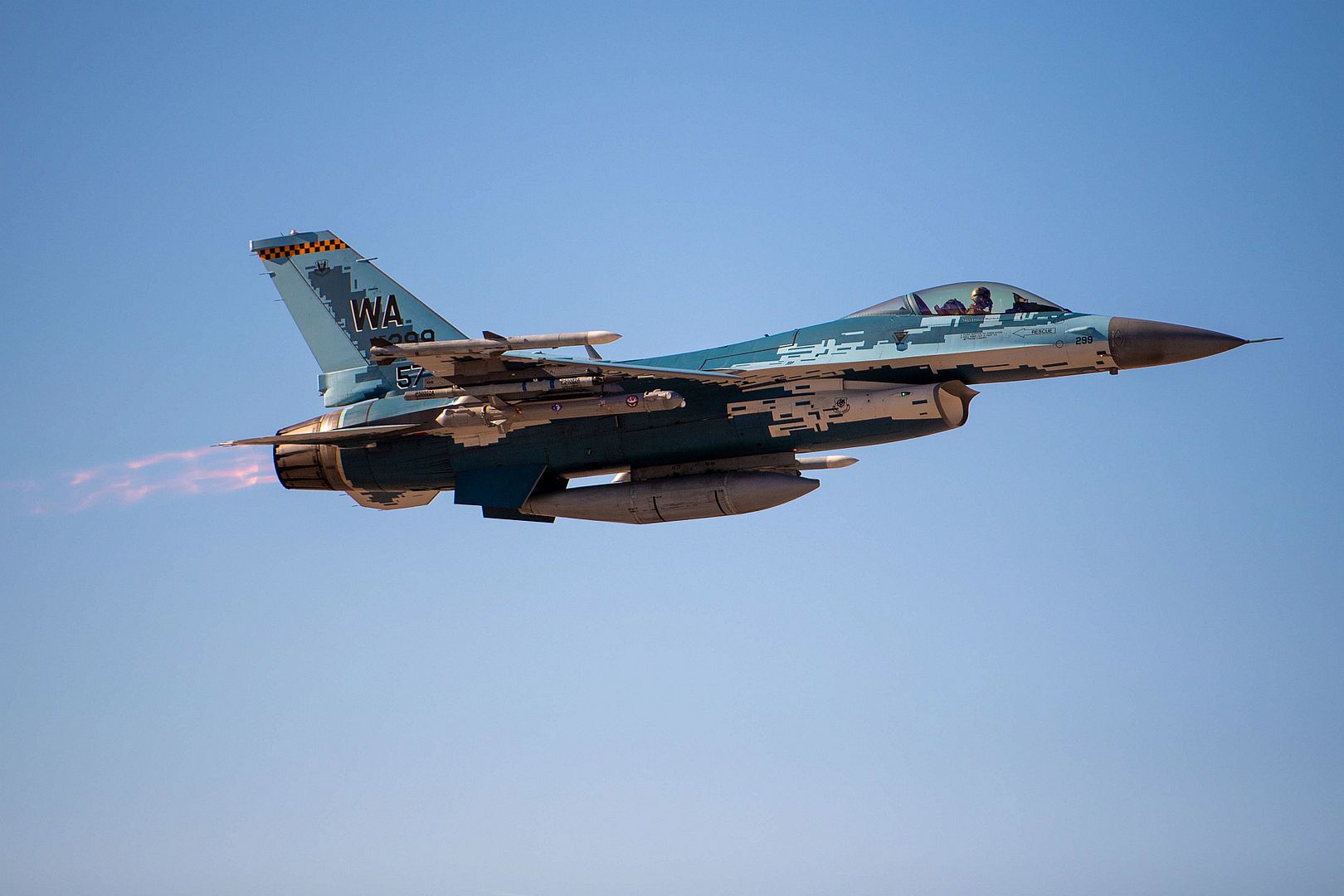
An F-16 Fighting Falcon assigned to the 64th Aggressor Squadron, Nellis Air Force Base, Nevada takes off for a mission, during Red Flag 23-1 Jan. 23, 2023. The 414th Combat Training Squadron conducts Red Flag exercises to provide aircrews the experience of multiple, intensive air combat sorties in the safety of a training environment. (U.S. Air Force photo by Staff Sgt. Michael Jones)
-
 Main AdminA newly repainted C-130H Hercules aircraft sits on the tarmac of Bradley Air National Guard Base, East Granby, Connecticut Feb. 4, 2023. The aircraft was specially painted to commemorate the 100th anniversary of the 103rd Airlift Wing.
Main AdminA newly repainted C-130H Hercules aircraft sits on the tarmac of Bradley Air National Guard Base, East Granby, Connecticut Feb. 4, 2023. The aircraft was specially painted to commemorate the 100th anniversary of the 103rd Airlift Wing.
(Photo by Timothy Koster)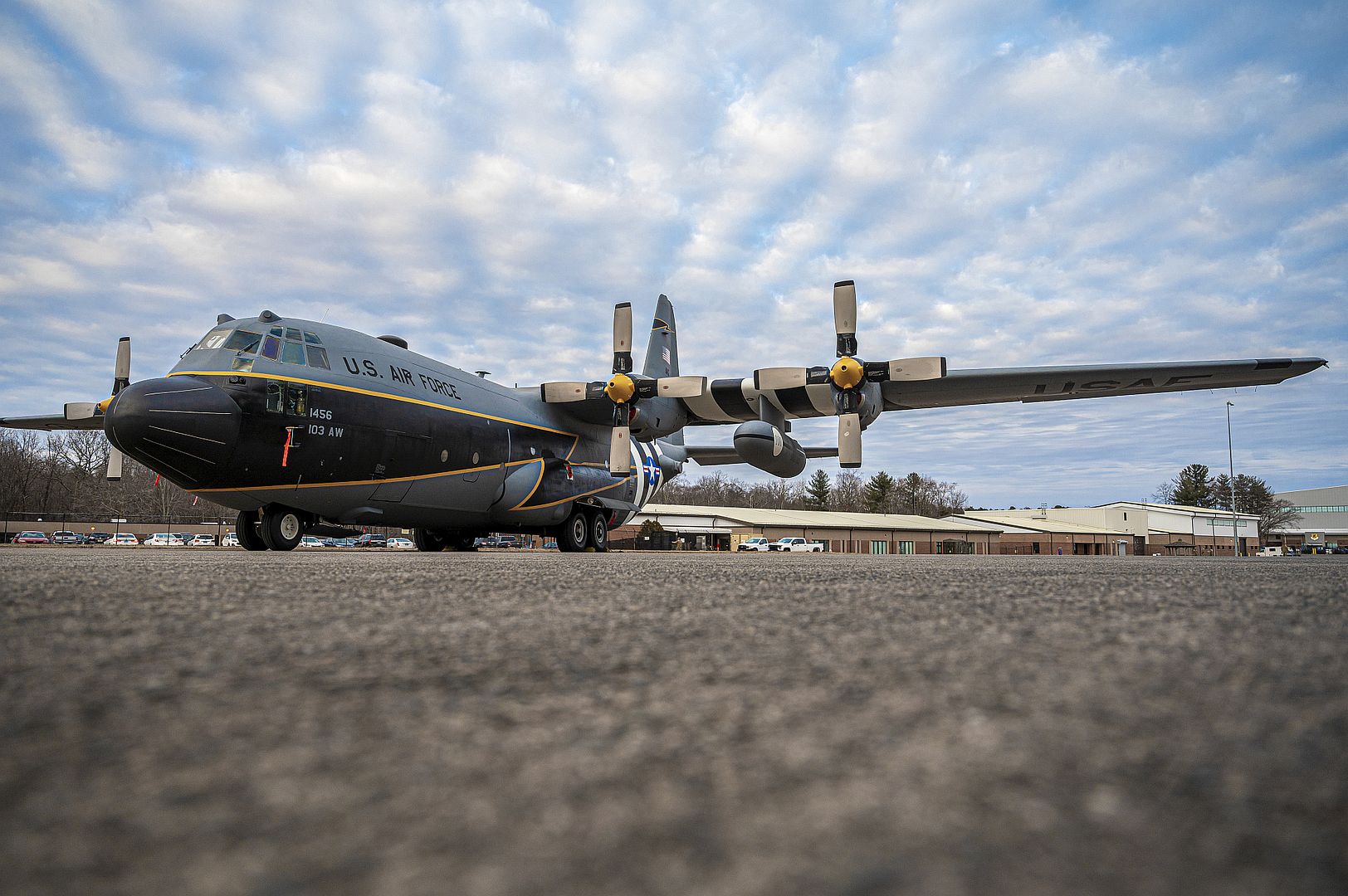
A U.S. Air Force F-16 Fighting Falcon assigned to the 13th Fighter Squadron taxis after landing at Antonio B. Won Pat International Airport near Andersen Air Force Base, Guam, Feb. 4, 2023. Aircraft from Misawa Air Base, Japan, arrived to participate in Cope North 23, a multilateral field training exercise focused on trilateral airborne integration for large-force employment, agile combat employment, and humanitarian assistance and disaster relief training. (U.S. Air Force photo by Tech. Sgt. Jao’Torey Johnson)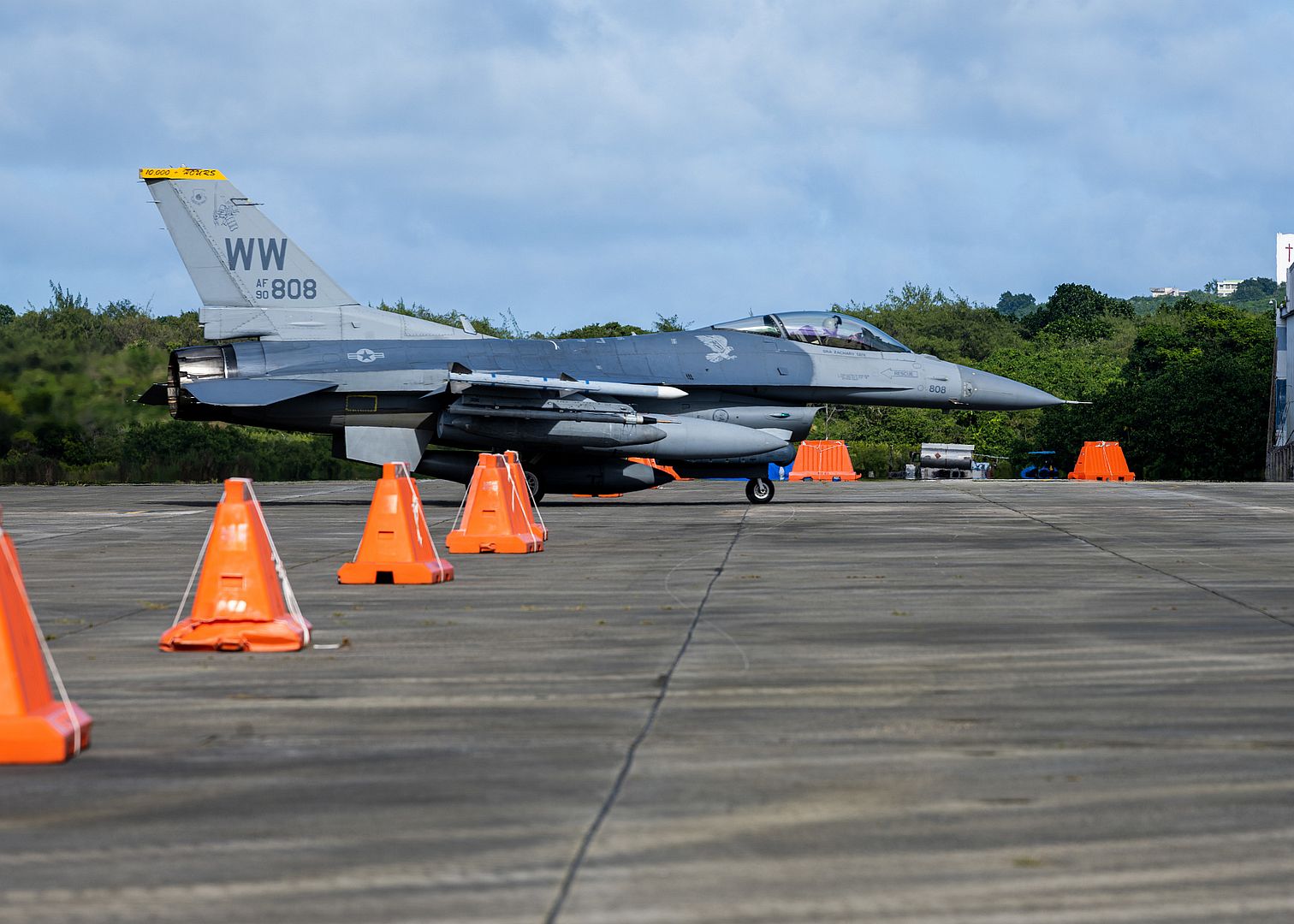
ANDERSEN AIR FORCE BASE, Guam (AFNS) --
B-1B Lancers assigned to the 34th Expeditionary Bomb Squadron from Ellsworth Air Force Base, South Dakota, landed at Andersen Air Force Base, Guam, Feb. 1.
The Bomber Task Force mission demonstrates the bomber’s ability to rapidly deploy anywhere, anytime and provide lethal precision global strike options for combatant commanders.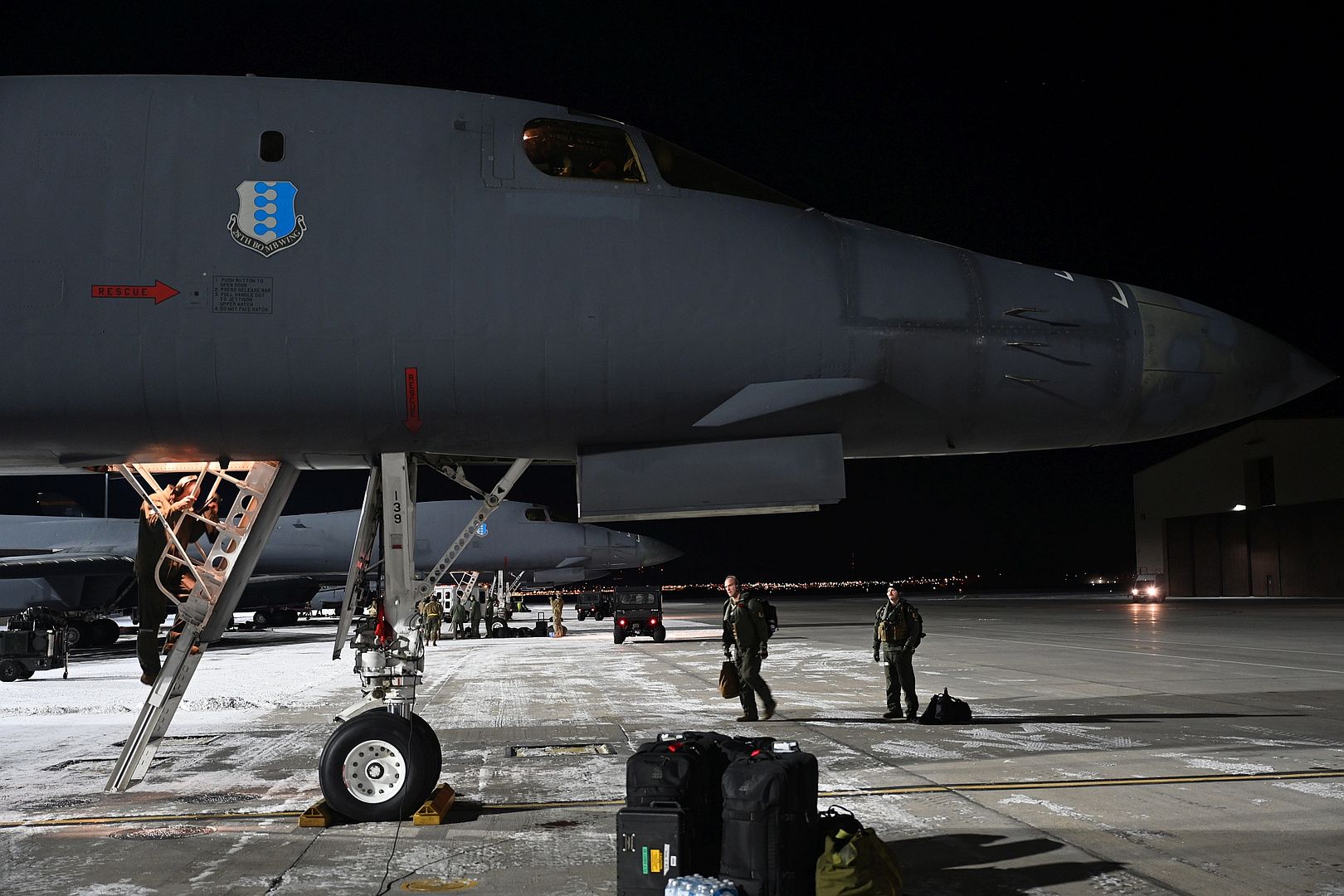
(US Air Force photo by Airman 1st Class Adam Olson)
B-1B Lancers return to Indo-Pacific
Airmen from the 34th Expeditionary Bomb Squadron assist aircrew with post flight procedures after arriving for a Bomber Task Force deployment at Andersen Air Force Base, Guam, Feb. 1, 2023. The BTF missions are designed to showcase Pacific Air Force’s ability to deter, deny, and dominate any influence or aggression from adversaries or competitors. (U.S. Air Force Photo by Tech. Sgt. Rion Ehrman)
"I, along with the entire 34th Expeditionary Bomb Squadron, am excited to be back in the region working alongside our Allies and partners to ensure a free and open Indo-Pacific,” said Lt. Col. Jeffrey Carter, 34th EBS director of operations. “Our mission here plays a crucial role in ensuring this dynamic region is free from coercion and accessible to everyone. The World-Famous Thunderbirds have a great history, and we look forward to building upon that legacy during this deployment."
Previous B-1B missions during 2022 included aerial integration with the Japan Air Self-Defense Force and hot pit refueling operations with the Royal Australian Air Force at RAAF Base Darwin.
The Lancers will continue to integrate and train with allies and partners through various operations and exercises in the region.
BTF missions support the National Defense Strategy objectives of integrated deterrence and building enduring advantages, enabling strategic bombers to operate forward from a broad array of overseas and continental U.S. locations with greater operational resilience.
"It's a privilege to be back in the Pacific area of responsibility and to be on the forward edge of deterring our adversaries and supporting our allies,” said Maj. Abraham Moreland, 34th EBS assistant director of operations. “The relationships we have with our allies in the region are crucial to the security of the Indo-Pacific, and the partnerships we build while out here give our aircrews the critical training and experience necessary to be successful in this environment."
Published Feb. 6, 2023
By Tech. Sgt. Nick Wilson
Pacific Air Forces Public Affairs
(U.S. Air Force photo by 2nd Lt. Michael Caggiano)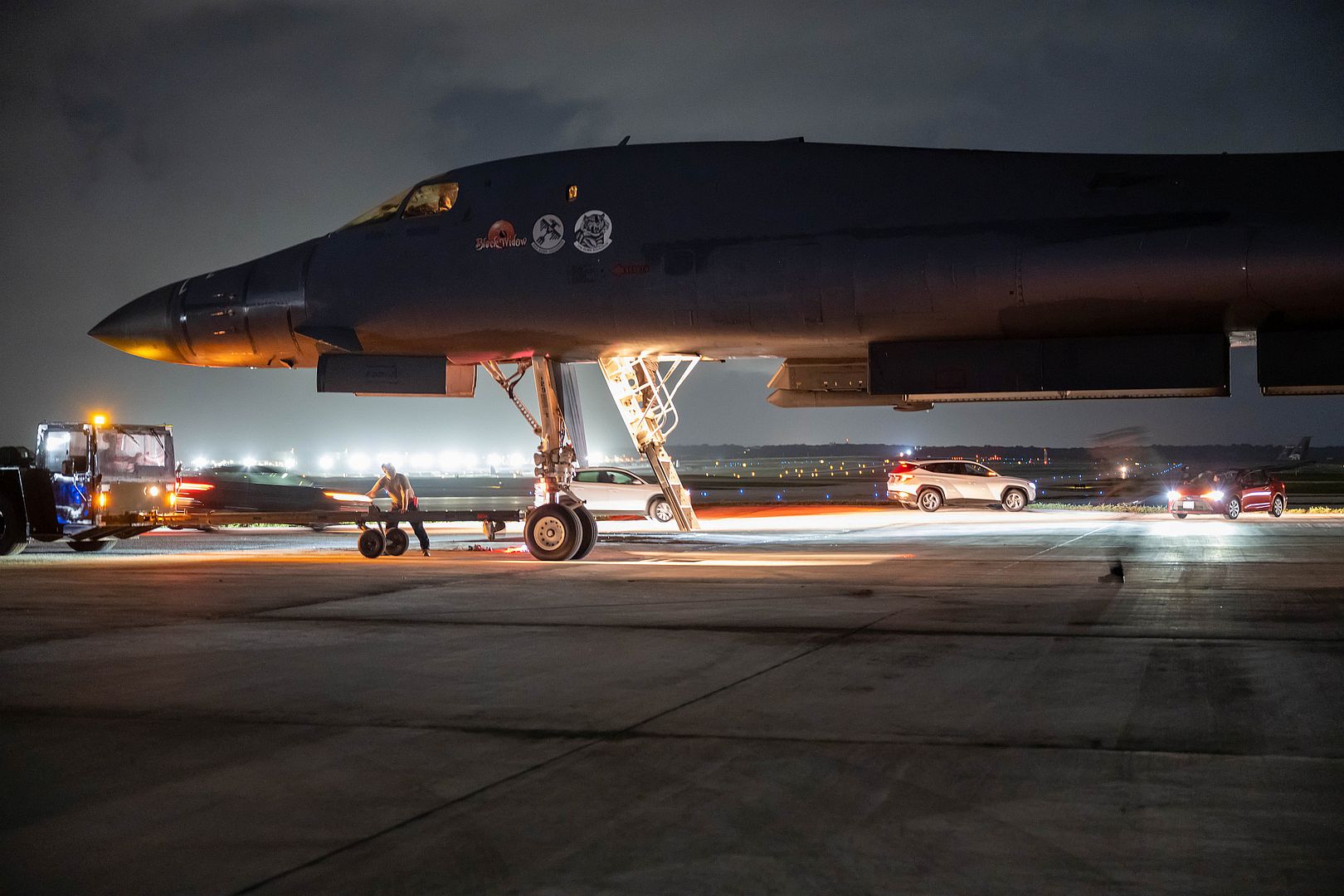
SOUTH CHINA SEA (Feb. 4, 2023) Sailors assigned to the "Fighting Redcocks" of Strike Fighter Squadron (VFA) 22 prepare for flight operations in an F/A-18F Super Hornet aboard the aircraft carrier USS Nimitz (CVN 68). Nimitz is in U.S. 7th Fleet conducting routine operations. 7th Fleet is the U.S. Navy's largest forward-deployed numbered fleet, and routinely interacts and operates with Allies and partners in preserving a free and open Indo-Pacific region. (U.S. Navy photo by Mass Communication Specialist 2nd Class David Rowe)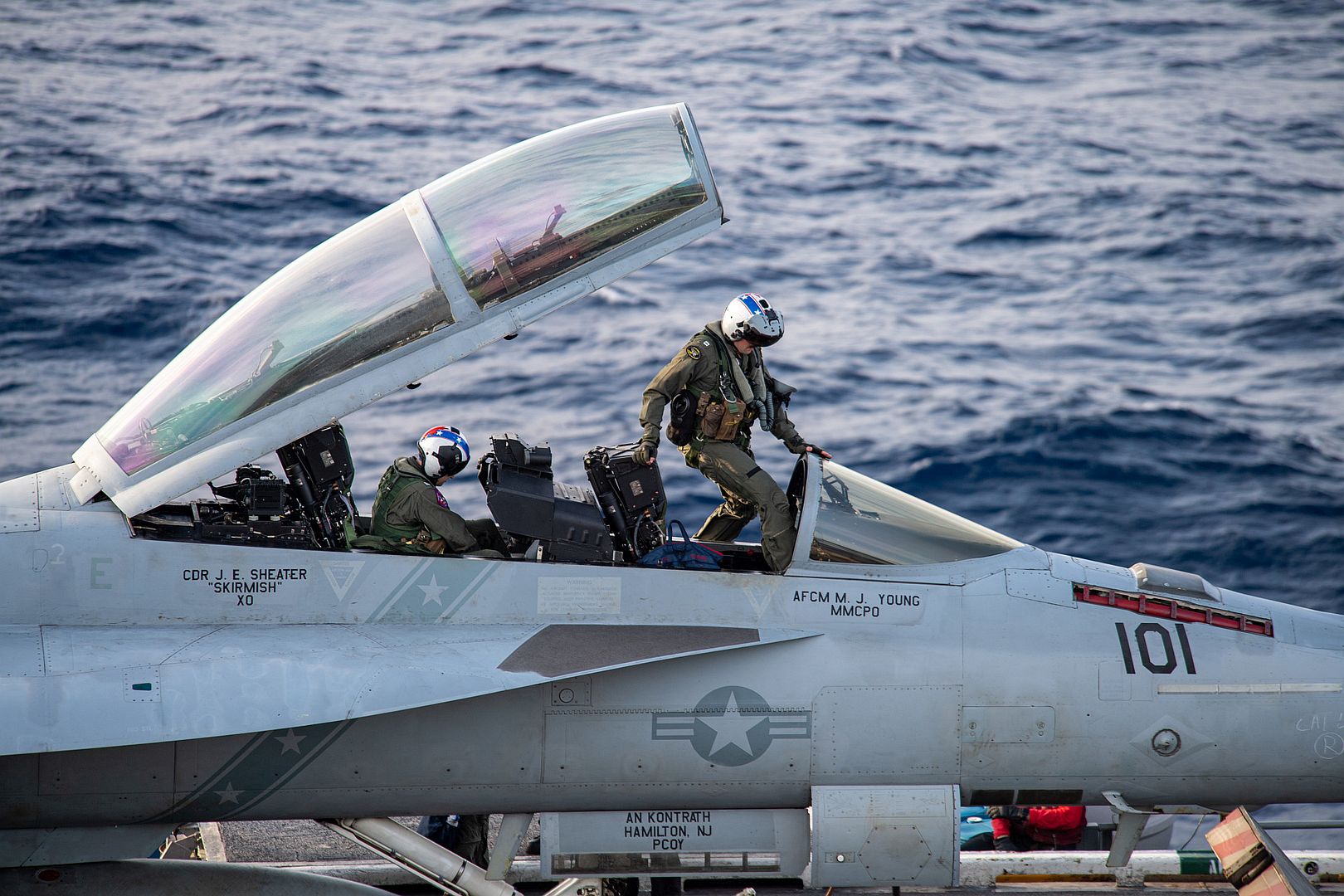
STRATFORD, Conn., Feb. 3, 2023 – Australia will acquire 40 Sikorsky UH-60M Black Hawks, which are designed and manufactured by Sikorsky, a Lockheed Martin company (NYSE: LMT). The deal between the Australian and United States governments for a foreign military sale of 40 UH-60Ms for the Australian Army is valued at approximately $1.95 billion. Deliveries are slated to begin early this year.
“The multi-mission UH-60M Black Hawk provides the Australian Army with critical capabilities that will strengthen Australia’s readiness, interoperability and security for decades to come,” said Sikorsky President Paul Lemmo. “We continue to invest in Black Hawk modernization to provide operators with the competitive edge they require to counter and deter threats today and in future Joint All-Domain Operations.”
The UH-60M Black Hawks will replace Australia’s current non-Black Hawk multi-role helicopter fleet with a more reliable and proven system.
“We have proudly sustained Australia’s Black Hawk fleet for decades,” said Nathalie Previte, Sikorsky’s vice president of Army and Air Force programs. “This experience coupled with Lockheed Martin and Sikorsky’s investment in our Australian team and local facilities strongly positions us to support the Australian Army’s operational and maintenance needs.”
Sikorsky’s U.S. workforce and hot production lines are actively producing aircraft. The U.S. Government awarded Sikorsky its tenth multi-year production contract in 2022 to build Black Hawks for the U.S. Army and international militaries. These next generation aircraft will be in operation for the next several decades and alongside future fleets.
The Black Hawk is unmatched for durability, survivability, multi-role versatility, affordability and interoperability, and has proven to be a dependable battlefield and special forces aviation asset for Australia and 34 other countries around the globe.
Lockheed Martin sees strong international interest in the Black Hawk and continues to invest in the platform – from sustainment to digital transformation and modernization – to provide militaries with the competitive edge they require today and in the future.
“Investments are aligned with the Black Hawk’s largest operator, the U.S. Army, and their technology roadmap, while leveraging Future Vertical Lift technologies to ensure the Black Hawk will be a key player in the Joint All Domain Operations environment and FVL ecosystem,” said Previte.
The UH-60M helicopter culminates decades of technological advancement, improved performance and real-world operational experience. Digital avionics and autopilot reduce pilot workload while enhancing situational awareness and improving survivability.
Previte adds, “We are confident that the Black Hawk, which is designed and built to meet the rigorous requirements of the U.S. military, is the most capable platform and the right choice to help fulfill the Australian Army’s rotary wing needs and that of our existing and future customers.”
For additional information, visit our website: https://www.lockheedmartin.com/blackhawk.
Fort Worth, TX (6 Feb. 2023) – Bell Textron Inc., a Textron Inc. (NYSE:TXT) company, announced today that Life Flight Network, the largest not-for-profit air medical program in the country, will add four additional Bell 407GXi helicopters. These aircraft will bring Life Flight Network’s current operating fleet to seven Bell 407GXis, remaining the largest air medical operator of the Bell 407GXi in the Pacific Northwest and Intermountain West.
“Life Flight Network has continued to see the value and performance the Bell 407 platform has provided in the last several years,” said Lane Evans, director, North America Sales. “The additional four Bell 407GXis with certified IFR (Instrument Flight Rules) capabilities will grow their state-of-the-art transport resources, allowing Life Flight Network to further increase community access to industry leading critical care transport.”
Life Flight Network’s total Bell fleet will consist of four Bell 429s and 25 Bell 407GX-series helicopters, providing critical care transportation to those in need. The organization continues to be a leader in the air ambulance industry, with 27 rotor-wing bases, 10 fixed-wing bases, and two neonatal and pediatric bases across Oregon, Washington, Idaho, and Montana. For over 44 years, Life Flight Network has been providing ICU-level care to patients in need of emergency medical transport, supporting local hospitals and EMS to bring the highest quality emergency care to the communities and patients who need it most.
Bell proves its mature production and sustainment support capability with more than 1,600 Bell 407s globally, logging six million flight hours across the fleet and actively performing flight training as well as military and para-public missions. The 407GXi’s Garmin G1000H™ NXi Flight Deck enhances situational awareness and reduces pilot workload by delivering easy-to-read information at a glance. The Bell 407GXi’s new IFR capability will allow all-weather operations while continuing to provide multi-mission capability safely, reliably, and effectively.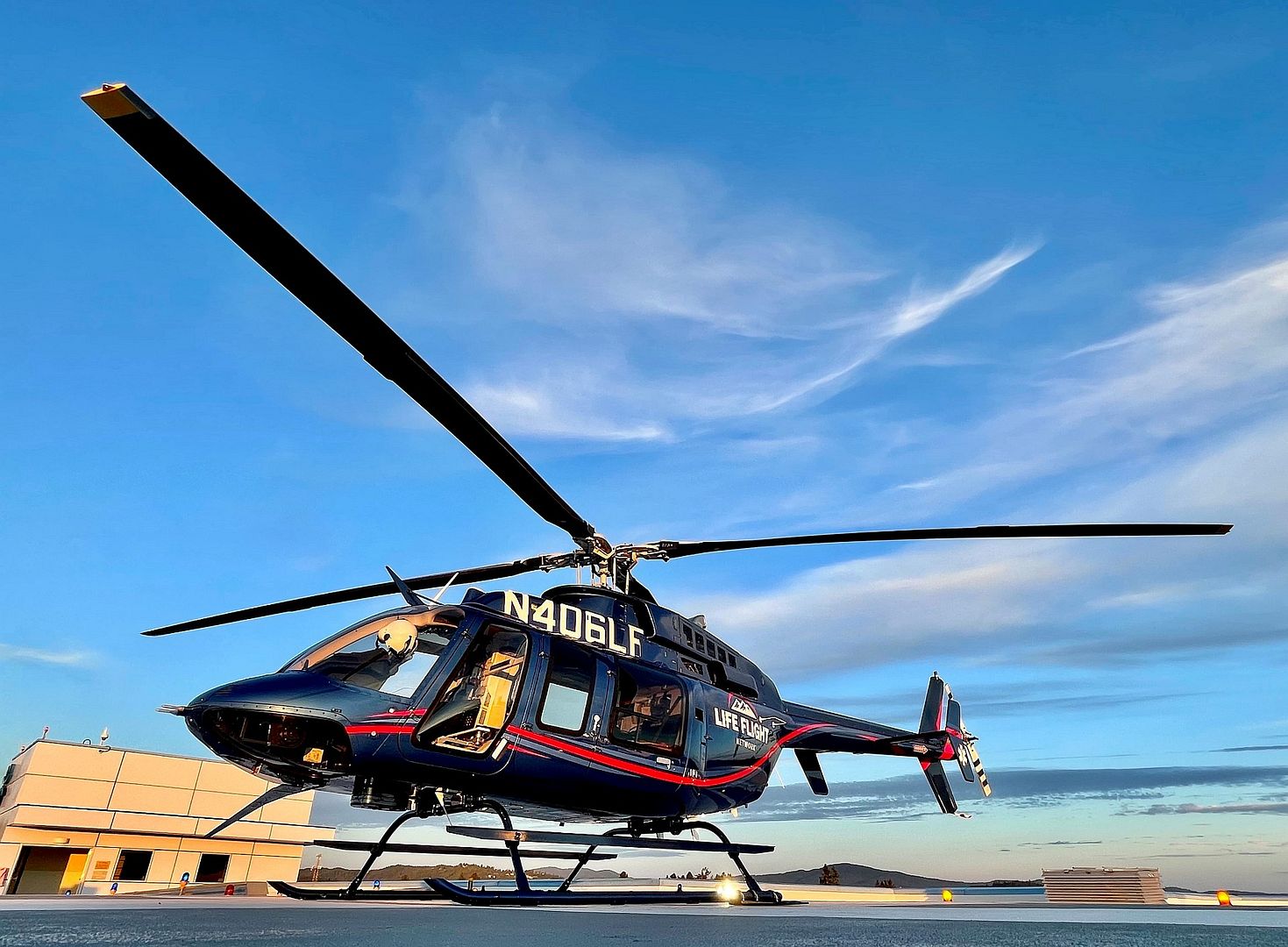
Fort Worth, TX (6 Feb. 2023) – Bell Textron Inc., a Textron Inc. (NYSE:TXT) company, announced today the signed purchase agreement for three additional Bell 407GXi aircraft to Global Medical Response (GMR) with delivery expected to be completed by the end of 2023. The three Bell 407GXis will join GMR’s exclusive 220 Bell helicopter fleet used for emergency medical operations throughout North America.
“As one of the largest air medical service operators in the world, we are honored that GMR has chosen to add the Bell 407GXi to its emergency services fleet,” said Lane Evans, director, North American Sales. “Bell is fully committed to GMR’s mission, and we are proud to continue supporting them with these versatile aircraft.”
GMR is the largest medical transport company in the world with 39,000 employees servicing more than 4,000 communities. As a partner with large-scale emergency medical organizations such as American Medical Response, Rural Metro Fire, Air Evac Lifeteam, REACH Air Medical Services, Med-Trans Corporation, AirMed International and Guardian Flight, GMR plays an integral role in providing safe transport to communities. In 2021, GMR transported more than 125,000 patients for life-saving care.
“As we grow our fleet to better serve our communities, these Bell 407GXi aircraft will better enable our emergency medical responders to reach those who need care at a moment’s notice,” said Ted Van Horne, Chief Operating Officer of Global Medical Response. “Our fleet of Bell aircraft are essential to our crews of flight nurses, pilots, paramedics and the emergency support we provide. We appreciate the partnership we have with Bell and their support in our life-saving emergency missions.”
Bell proves its unparalleled support to the Air Medical Services industry with nearly 500 HAA-configured aircraft operating daily, accumulating over 1 million flight hours. The Bell 407GXi provides critical capabilities when transferring patients with advanced avionics and communication suites through its Garmin’s G1000H NXi Integrated Flight Deck, complete with high-definition imagery and faster processors. The advanced displays offer increased brightness and clarity, faster startup and map rendering as well as connectivity to tablets and smartphones.
-
 Main AdminSOUTH CHINA SEA (Feb. 7, 2023) An E/A-18G Growler from the “Cougars” of Electronic Attack Squadron (VAQ) 139 launches from the flight deck of the aircraft carrier USS Nimitz (CVN 68). Nimitz is in U.S. 7th Fleet conducting routine operations. 7th Fleet is the U.S. Navy's largest forward-deployed numbered fleet, and routinely interacts and operates with Allies and partners in preserving a free and open Indo-Pacific region. (U.S. Navy photo by Mass Communication Specialist 3rd Class Joseph Calabrese)
Main AdminSOUTH CHINA SEA (Feb. 7, 2023) An E/A-18G Growler from the “Cougars” of Electronic Attack Squadron (VAQ) 139 launches from the flight deck of the aircraft carrier USS Nimitz (CVN 68). Nimitz is in U.S. 7th Fleet conducting routine operations. 7th Fleet is the U.S. Navy's largest forward-deployed numbered fleet, and routinely interacts and operates with Allies and partners in preserving a free and open Indo-Pacific region. (U.S. Navy photo by Mass Communication Specialist 3rd Class Joseph Calabrese)_139_launches_from_the_flight_deck_of_the_aircraft_carrier_USS_Nimitz.jpg?width=1920&height=1080&fit=bounds)
An F-22 Raptor assigned to the 94th Fighter Squadron, Joint Base Langley-Eustis, Virginia, taxis before a Red Flag 23-1 training mission at Nellis Air Force Base, Nevada, Feb. 6, 2023. The 414th Combat Training Squadron conducts Red Flag exercises to provide aircrews the experience of multiple, intensive air combat sorties in the safety of a training environment. (U.S. Air Force photo by Staff Sgt. Alex Stephens)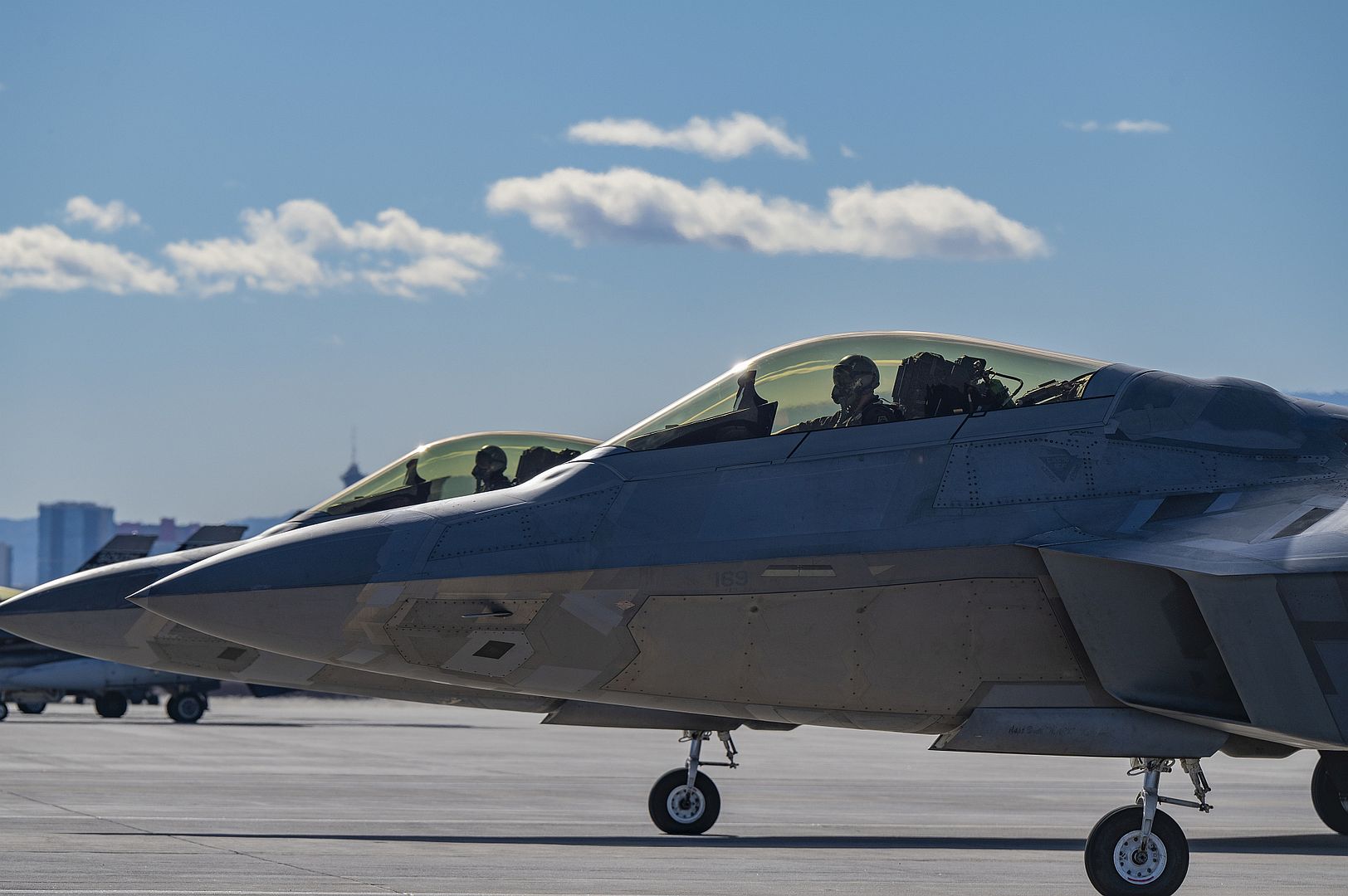
An A-10C Thunderbolt II lands after a Red Flag 23-1 training mission at Nellis Air Force Base, Nevada, Feb. 6, 2023. Participants conducting training missions during Red Flag 23-1 were able to test and perfect Agile Combat Employment operating concepts for how the U.S. combat forces will fight in a modern, contested environment. (U.S. Air Force photo by Staff Sgt. Alex Stephens)
A F-35A Lightning II assigned to the 134th Fighter Squadron of the Vermont Air National Guard's 158th Fighter Wing takes off for a training mission from the Vermont Air National Guard Base, South Burlington, Vermont, Feb. 7, 2023. Pilots fly regularly to hone their skills and maintain the U.S. Air Force and Major Command requirements and proficiencies. (U.S. Air National Guard photo by Senior Master Sgt. Michael Davis)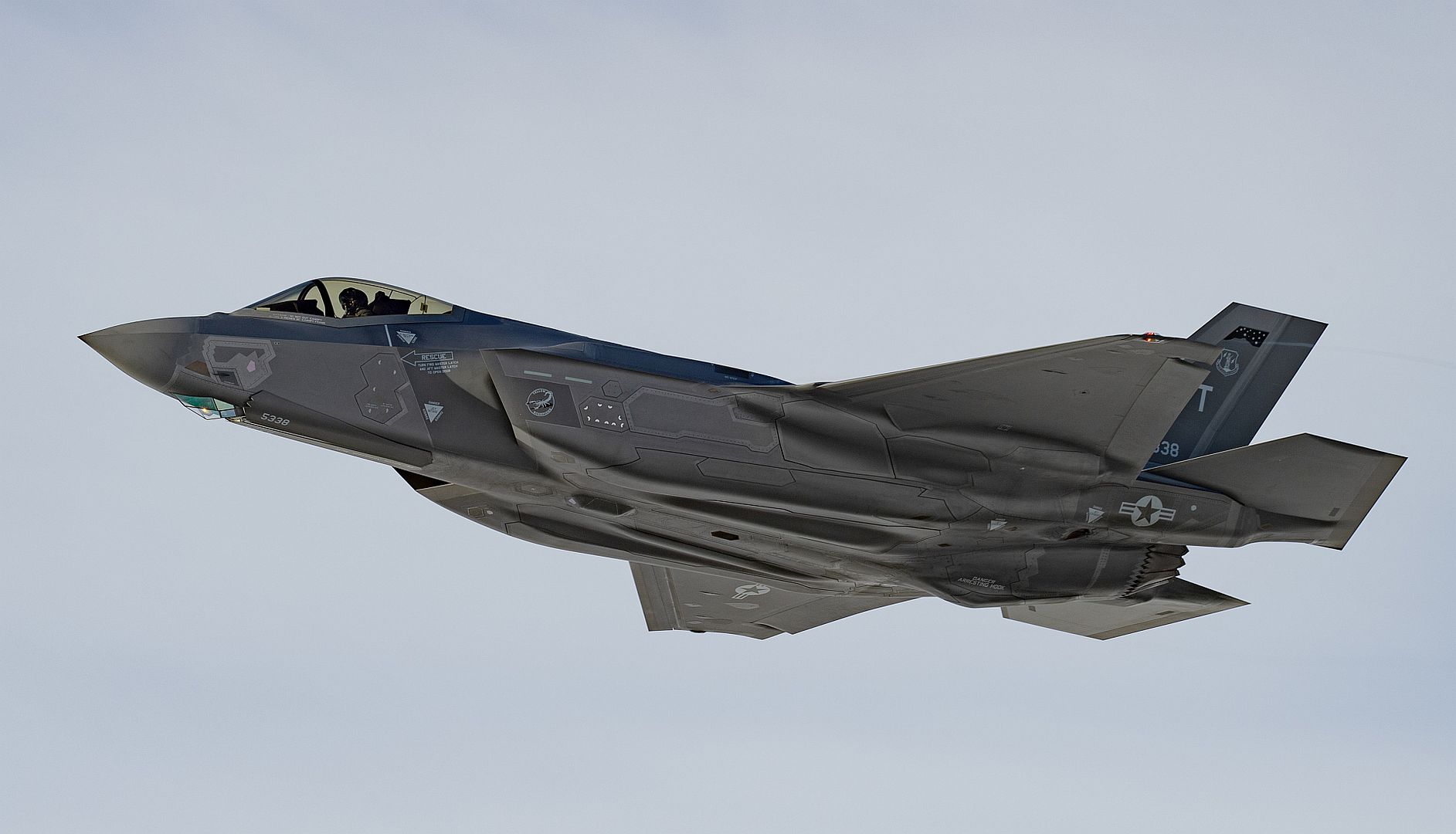
7 Feb 2023
BAE Systems has delivered the 1,000th rear fuselage to Lockheed Martin for the F-35, the world's most advanced and capable fifth generation fighter.
More than 1,500 employees at the Company’s facilities in Samlesbury, Lancashire, produce the rear fuselage for every F-35 in the global fleet. The first fuselage was delivered to Lockheed Martin in 2005.
Speech marks At an event today celebrating the 1000th delivery, Cliff Robson, Group Managing Director, BAE Systems Air, said:
“This is a significant moment for everyone involved in the programme and a testament to the highly-skilled workforce we have in the North West of England.
“Our role on the F-35 programme is another example of how we make a substantial contribution to the local and national UK economy and help to deliver capability which is critical for national security.”
Speech marks Bridget Lauderdale, Lockheed Martin Vice President and General Manager of the F-35 programme, said:
"The F-35 programme powers economic growth and prosperity for the UK injecting approximately £41billion* into the UK economy and supporting more than 20,000 jobs in the UK supply chain, many of those based in the North West.
“With more than 500 companies in our UK supply chain, we’re proud of the role that our partnership with BAE Systems has in delivering the world’s most advanced aircraft for the UK and 17 other allied nations.”
F-35 aircraft inside hangar BAE Systems has been involved in the F-35 programme since its inception and plays key roles across the development, manufacture and sustainment of the aircraft, which is operated by the Royal Air Force, Royal Navy and air forces across the world.
The F-35s global programme of record amounts to more than 3,000 F-35s amongst the programme’s 17 customers. Work on the programme will continue at BAE Systems’ advanced manufacturing hub at Samlesbury for many years to come.
Speech marks Susan Addison, Senior Vice President for US Programmes at BAE Systems Air, said:
“This is an important milestone for our business and demonstrates both the expertise of our people and their commitment to delivering for the F-35 programme.
“The roles we play today are underpinned by a world-class manufacturing pedigree and industrial know-how in the UK, which has been developed through decades of cutting edge experience in combat air programmes. We are proud of what we do for our customers and the air forces who help keep us safe.”
(Marine Corps photo by Lance Cpl. Jimmy J. Vertus/ Released)
07 Feb 2023.
Royal Air Force Typhoons from the UK and the Middle East have arrived at King Abdulaziz Air Base in the Kingdom of Saudi Arabia to take part in Exercise Spears of Victory.
Pilots, Engineers, and support personnel from RAF Lossiemouth, alongside specialists from across the RAF are deployed on the multi-national air warfare training exercise. The RAF join participants from, Bahrain, Greece, Jordan, Pakistan, Qatar, the USA, Kuwait, and the UAE, alongside several branches of the Kingdom of Saudi Arabia military.
Fighter aircraft including Typhoons, Tornados, F-15s, F-16s and JF-17, will take to the skies undertaking defensive counter and offensive counter air and air interdiction training against live and simulated threats, testing the reactions of pilots in a variety of situations. C-130s, Airborne Early Warning Systems and Helicopters from the Ministry of the Interior will also carry out specific missions training in the realistic airspace. Command and Control, mission planning and integration training provided by the exercise will assure a high level of training for all participants.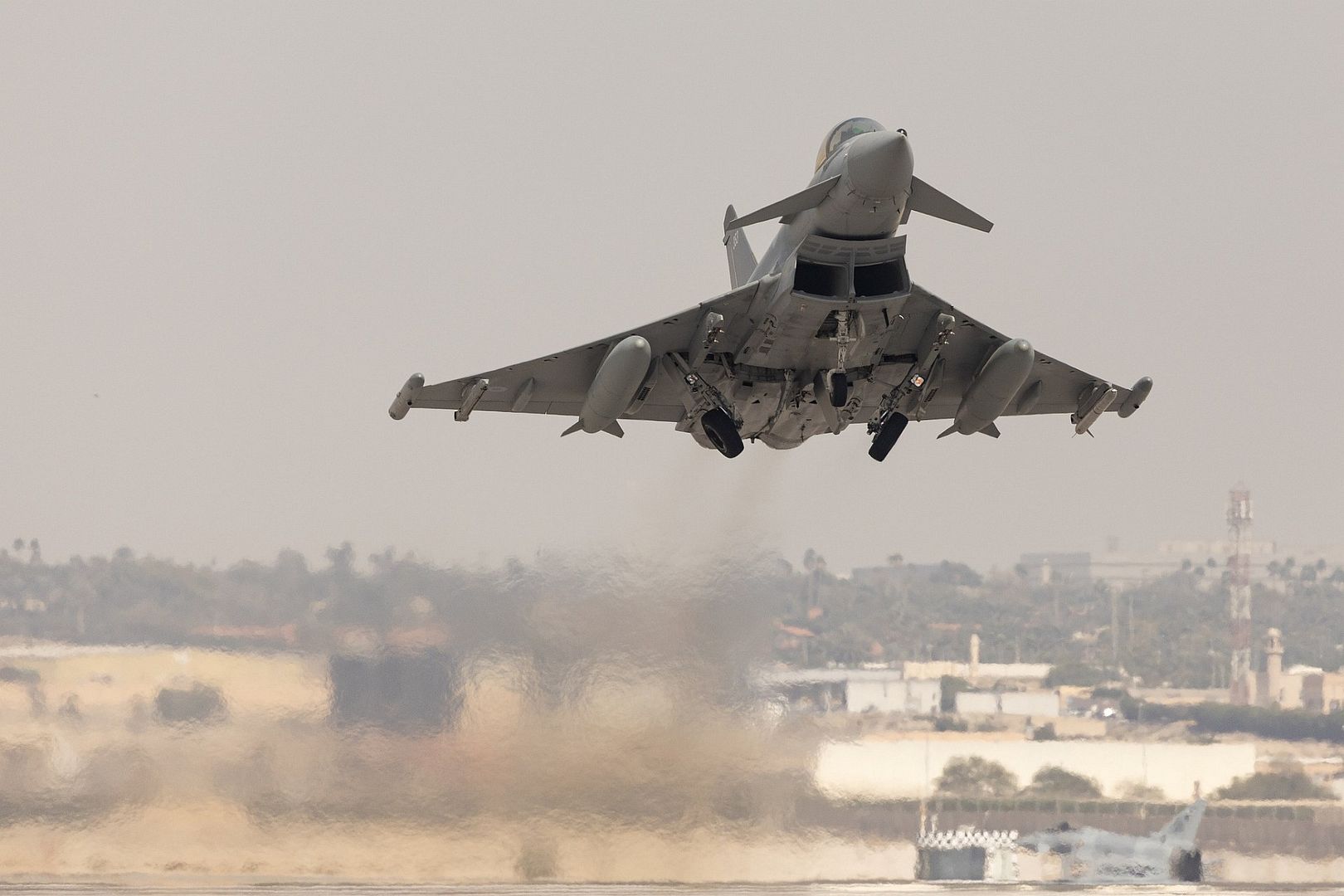
The exercise is designed to increase the tactical proficiency of all participating nations. Working together, the exercise develops participating nation’s ability to plan and execute complex missions together, in a testing desert environment.
(Photographs courtesy of : Sergeant Chapman, 83 Expeditionary Air Group and Air Specialist 1 Green, RAF Lossiemouth)
-
 Main AdminU.S. Army National Guard Soldiers with the 2-151st Security and Support Aviation Battalion, South Carolina National Guard, received the new UH-72 Bravo Lakota helicopter at Army Aviation Support Facility Two, Feb. 7, 2023, Greenville, South Carolina. Flown from Huntsville, Alabama the newest edition of rotary wing aircraft for the South Carolina National Guard Army Aviation will be replacing the UH-72 Alpha models, as the South Carolina National Guard was one of nine states fielded two of the new UH-72 Bravo models. This upgraded aircraft equipped with enhanced engines, transmission, and avionics will be an important asset, specifically for search and rescue missions with the South Carolina Aquatic Rescue Team (SC-HART), providing a faster response time to emergencies with increased space to rescue and transport more individuals. (U.S. Army National Guard photos by Sgt. Tim Andrews).
Main AdminU.S. Army National Guard Soldiers with the 2-151st Security and Support Aviation Battalion, South Carolina National Guard, received the new UH-72 Bravo Lakota helicopter at Army Aviation Support Facility Two, Feb. 7, 2023, Greenville, South Carolina. Flown from Huntsville, Alabama the newest edition of rotary wing aircraft for the South Carolina National Guard Army Aviation will be replacing the UH-72 Alpha models, as the South Carolina National Guard was one of nine states fielded two of the new UH-72 Bravo models. This upgraded aircraft equipped with enhanced engines, transmission, and avionics will be an important asset, specifically for search and rescue missions with the South Carolina Aquatic Rescue Team (SC-HART), providing a faster response time to emergencies with increased space to rescue and transport more individuals. (U.S. Army National Guard photos by Sgt. Tim Andrews).
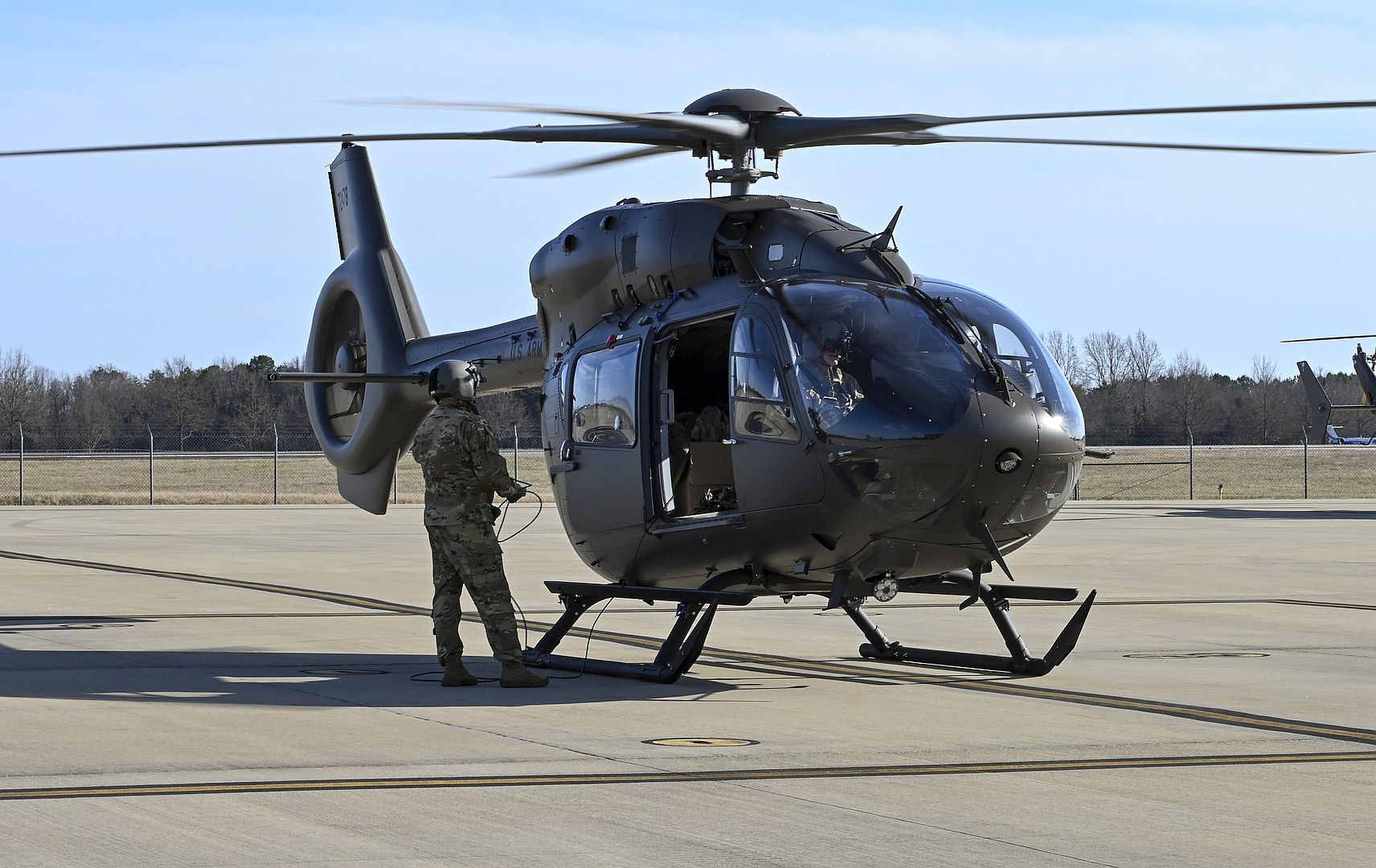
U.S. Marines with Marine Medium Tiltrotor Squadron (VMM) 261 prepare an MV-22B Osprey for takeoff at Lechuguilla Desert, Arizona, Feb. 6, 2023. VMM-261 trained to support Marine ground units during Service Level Training Exercise (SLTE) 2-23. SLTE is a series of exercises designed to prepare Marines for operations around the globe. VMM-261 is a subordinate unit of 2nd Marine Aircraft Wing, the aviation combat element of II Marine Expeditionary Force. (U.S. Marine Corps photo by Lance Cpl. Orlanys Diaz Figueroa)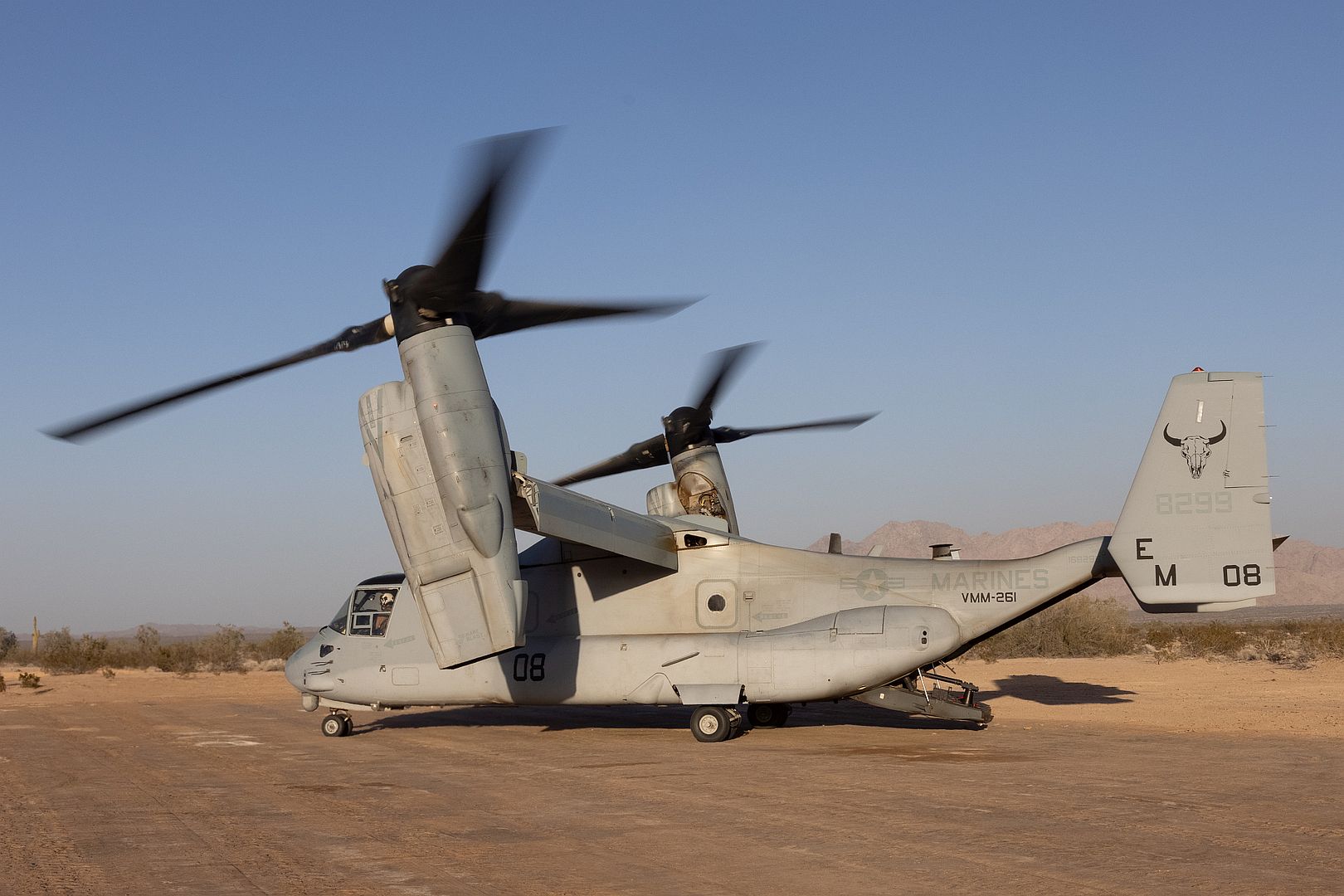
SOUTH CHINA SEA (Feb. 7, 2023) An F/A-18F Super Hornet from the “Mighty Shrikes” of Strike Fighter Squadron (VFA) 94 makes an arrested landing aboard the aircraft carrier USS Nimitz (CVN 68). Nimitz is in U.S. 7th Fleet conducting routine operations. 7th Fleet is the U.S. Navy's largest forward-deployed numbered fleet, and routinely interacts and operates with Allies and partners in preserving a free and open Indo-Pacific region. (U.S. Navy photo by Mass Communication Specialist 2nd Class Justin McTaggart)_94_makes_an_arrested_landing_aboard_the_aircraft_carrier_USS_Nimitz.jpg?width=1920&height=1080&fit=bounds)
SOUTH CHINA SEA (Feb. 7, 2023) An F/A-18F Super Hornet from the “Fighting Redcocks” of Strike Fighter Squadron (VFA) 22 makes an arrested landing aboard the aircraft carrier USS Nimitz (CVN 68). Nimitz is in U.S. 7th Fleet conducting routine operations. 7th Fleet is the U.S. Navy's largest forward-deployed numbered fleet, and routinely interacts and operates with Allies and partners in preserving a free and open Indo-Pacific region. (U.S. Navy photo by Mass Communication Specialist 2nd Class Justin McTaggart)_22_makes_an_arrested_landing_aboard_the_aircraft_carrier_USS_Nimitz-1.jpg?width=1920&height=1080&fit=bounds)
SOUTH CHINA SEA (Feb. 7, 2023) An F/A-18F Super Hornet from the “Fighting Redcocks” of Strike Fighter Squadron (VFA) 22 taxis aboard the aircraft carrier USS Nimitz (CVN 68). Nimitz is in U.S. 7th Fleet conducting routine operations. 7th Fleet is the U.S. Navy's largest forward-deployed numbered fleet, and routinely interacts and operates with Allies and partners in preserving a free and open Indo-Pacific region. (U.S. Navy photo by Mass Communication Specialist 2nd Class Justin McTaggart)_22_taxis_aboard_the_aircraft_carrier_USS_Nimitz.jpg?width=1920&height=1080&fit=bounds)
Republic of Korea (ROK) Air Force 38th Fighter Group emergency management personnel clear a KF-16 Fighting Falcon during a simulated in-flight emergency training event at Kunsan Air Base, Republic of Korea, Feb. 6, 2023. After the U.S. Air Force 8th Civil Engineer Squadron extinguished the simulated fire, they passed command of the scene to the ROK Air Force personnel who evacuated the pilot, rendered simulated aid, and cleared the scene. (U.S. Air Force Photo by Tech. Sgt. Timothy Dischinat)
-
 Main AdminA HH-60W Jolly Green II helicopter from the 66th Rescue Squadron taxis at Nellis Air Force Base, Nevada, Feb. 8, 2023. Red Flag 23-1 created a realistic environment for war fighters to train. (U.S. Air Force photo by Staff Sgt. Alex Stephens)
Main AdminA HH-60W Jolly Green II helicopter from the 66th Rescue Squadron taxis at Nellis Air Force Base, Nevada, Feb. 8, 2023. Red Flag 23-1 created a realistic environment for war fighters to train. (U.S. Air Force photo by Staff Sgt. Alex Stephens)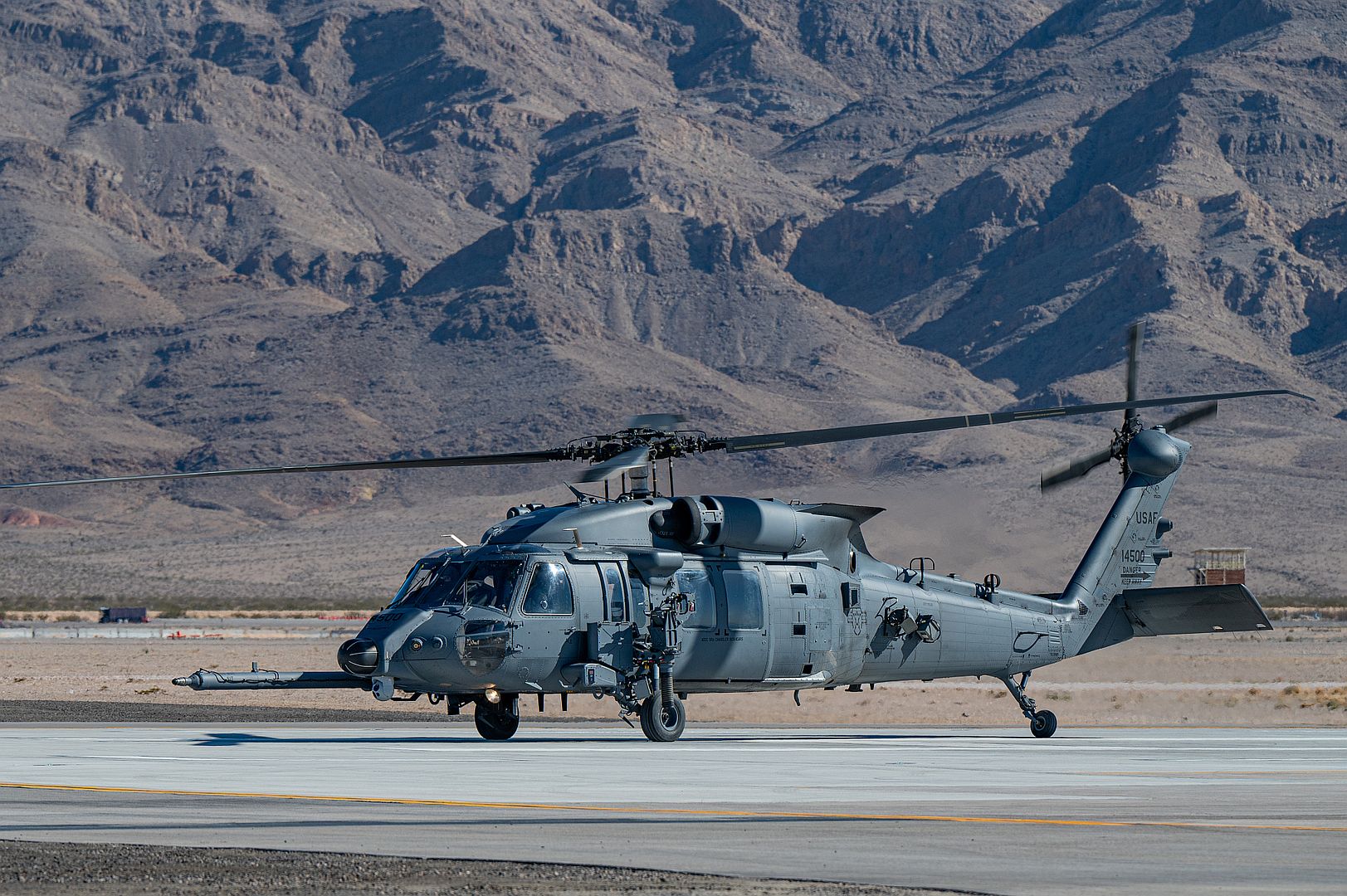
A U.S. KC-10 Extender taxis during an integrated mission sortie consisting of four KC-46As and three KC-10s at Travis Air Force Base, California, Feb. 8, 2023. The 6th and 9th Air Refueling Squadrons trained alongside Airmen from 305th Air Mobility Wing at Joint Base McGuire-Dix-Lakehurst, New Jersey, and 22nd Air Refueling Wing at McConnell AFB, Kansas, in support of U.S. Air Force ready Airman training and force generation initiatives. (U.S. Air Force photo by Heide Couch)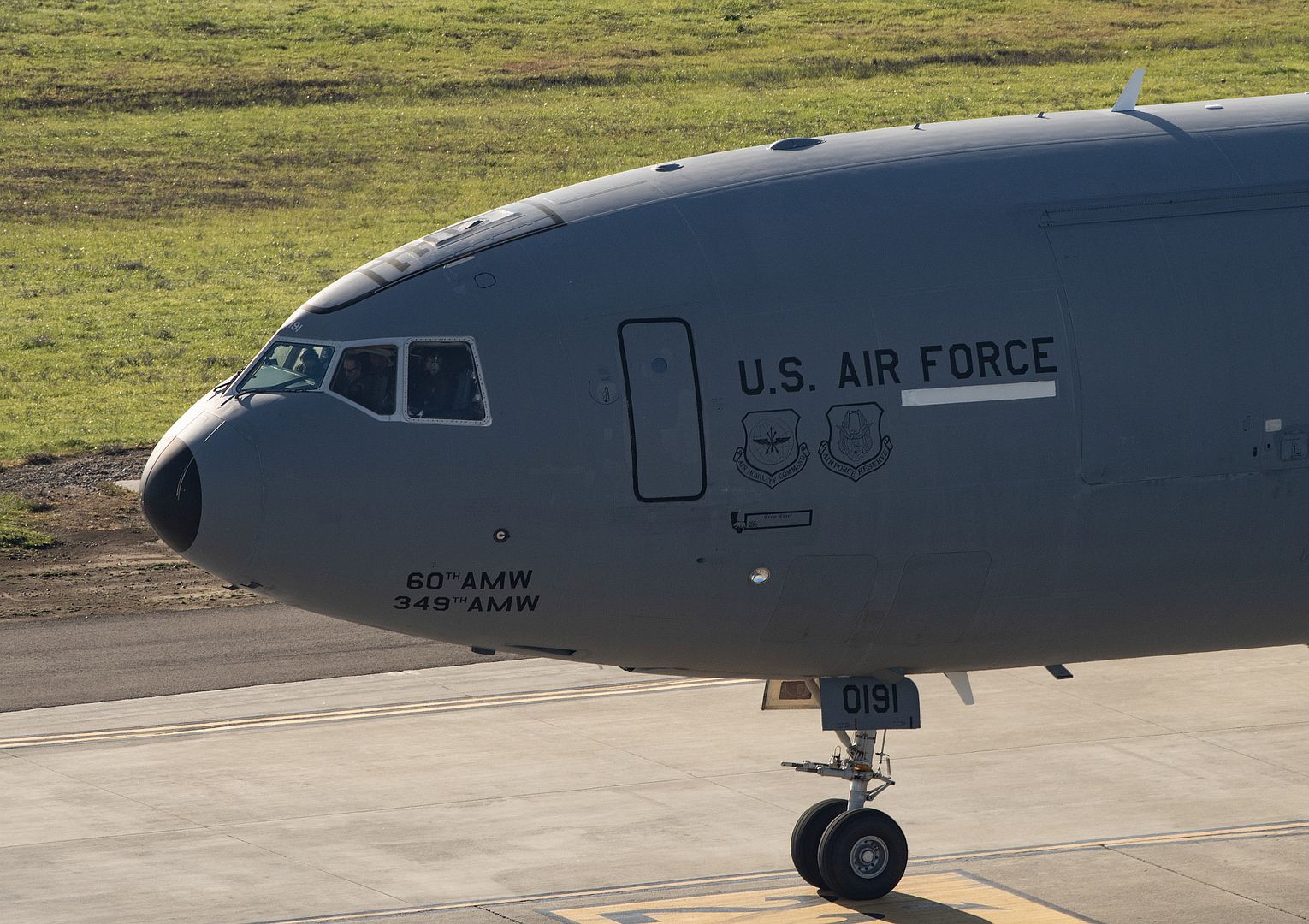
A U.S. Air Force KC-46A Pegasus taxis during an integrated mission sortie consisting of four KC-46As and three KC-10s at Travis Air Force Base, California, Feb. 8, 2023. The 6th and 9th Air Refueling Squadrons trained alongside Airmen from 305th Air Mobility Wing at Joint Base McGuire-Dix-Lakehurst, New Jersey, and 22nd Air Refueling Wing at McConnell AFB, Kansas, in support of U.S. Air Force ready Airman training and force generation initiatives. (U.S. Air Force photo by Heide Couch)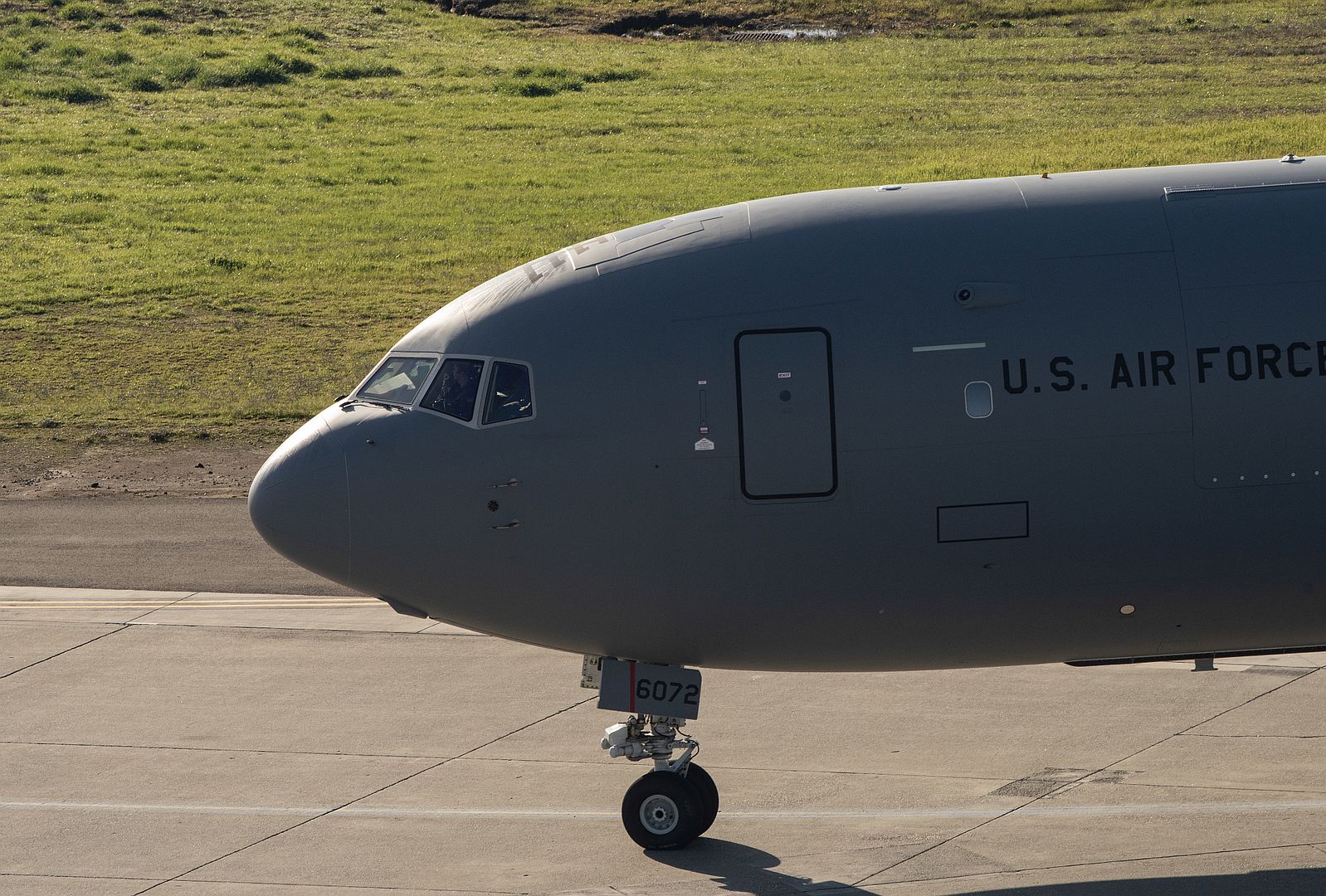
U.S. Airmen assigned to the 34th Expeditionary Bomb Squadron load bombs onto a B-1B Lancer at Andersen Air Force Base, Guam, in support of a Bomber Task Force mission, Feb. 8, 2023. Pacific Air Forces routinely and visibly demonstrates commitment to Allies and partners in the Indo-Pacific through the employment of our military forces and demonstrating strategic predictability while becoming more operationally unpredictable to adversaries.
(U.S. Air Force Photo by Airman Yendi Borjas)
U.S. Airmen assigned to the 34th Expeditionary Bomb Squadron load a joint direct attack munition at Andersen Air Force Base, Guam, in support of a Bomber Task Force mission, Feb. 8, 2023. Bomber missions demonstrate the credibility of our forces to address a complex and uncertain security environment. (U.S. Air Force Photo by Airman Yendi Borjas)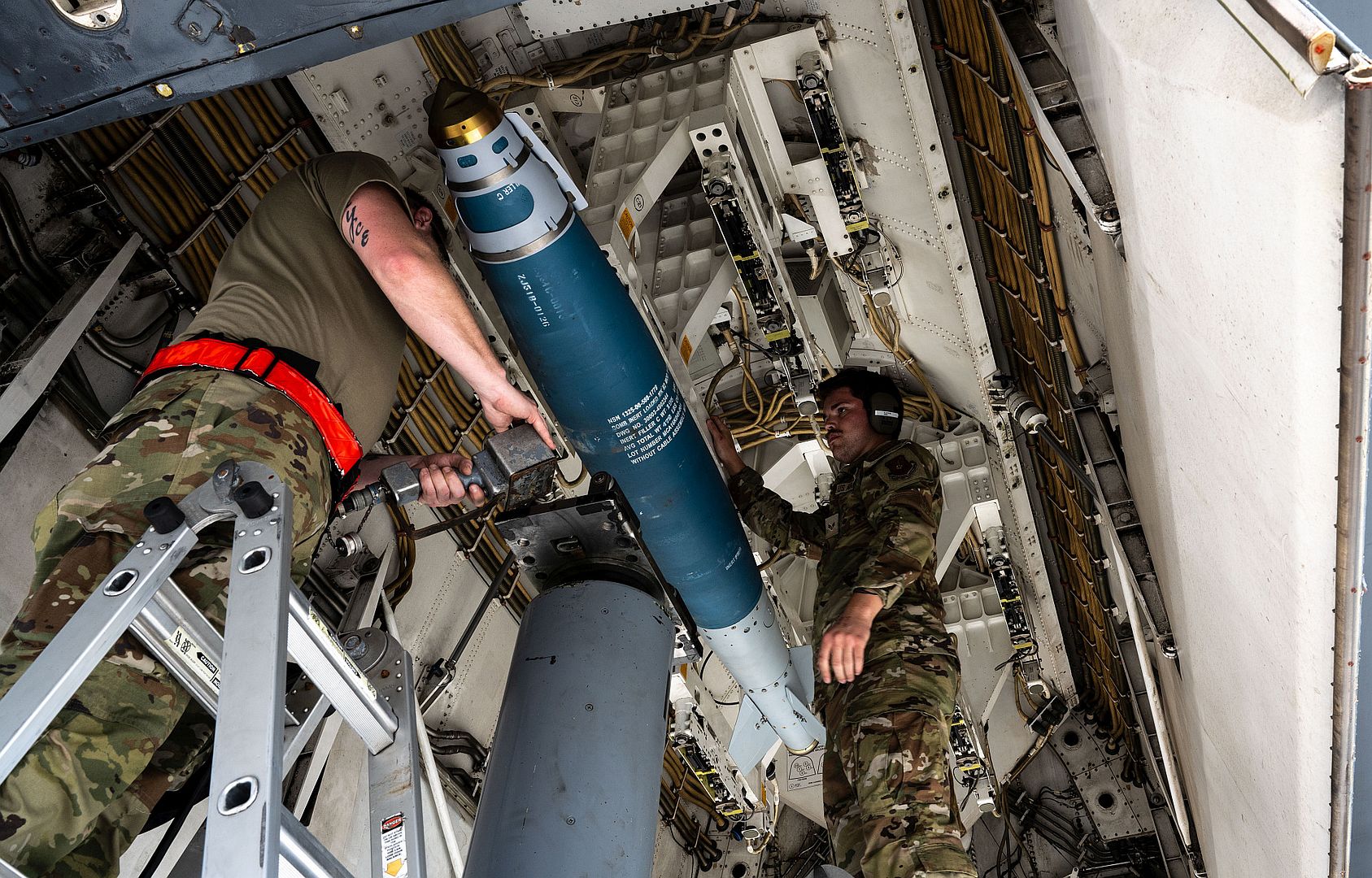
SOUTH CHINA SEA (Feb. 9, 2023) An F/A-18E Super Hornet from the “Blue Diamonds” of Strike Fighter Squadron (VFA) 146 launches from the flight deck of the aircraft carrier USS Nimitz (CVN 68). Nimitz is in U.S. 7th Fleet conducting routine operations. 7th Fleet is the U.S. Navy's largest forward-deployed numbered fleet, and routinely interacts and operates with Allies and partners in preserving a free and open Indo-Pacific region. (U.S. Navy photo by Mass Communication Specialist 3rd Class Joseph Calabrese)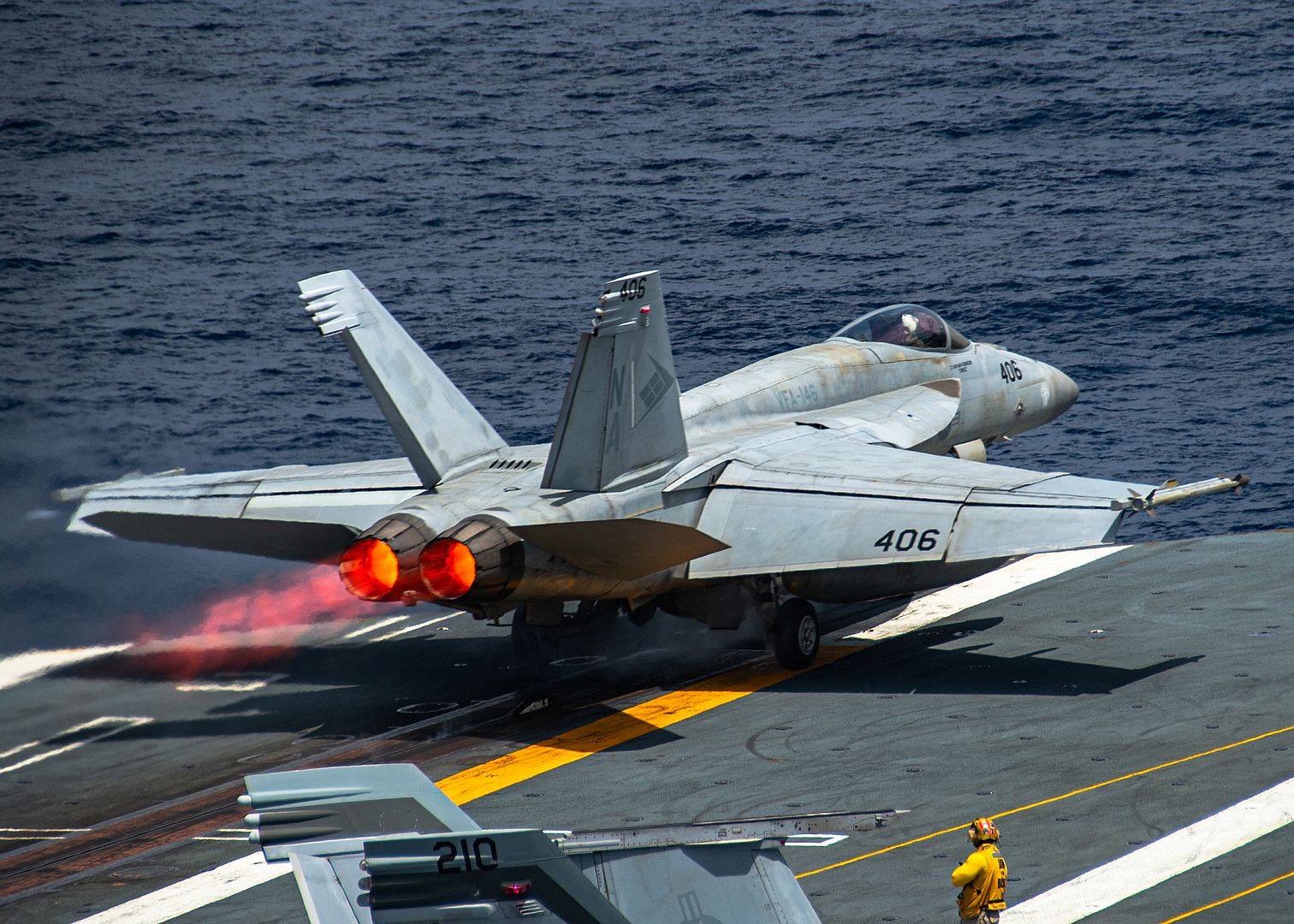
Japan Air Self-Defense Force Mitsubishi F-2 aircraft sit on the flight line during Cope North 2023 at Andersen Air Force Base, Guam, Feb. 6, 2023. Cope North enhances U.S. relationships with our regional allies and partners by fostering the exchange of information and refining shared tactics, techniques, and procedures to better integrate multilateral defense capabilities and enhance interoperability in support of regional security. (U.S. Air Force photo by Tech. Sgt. Jao’Torey Johnson)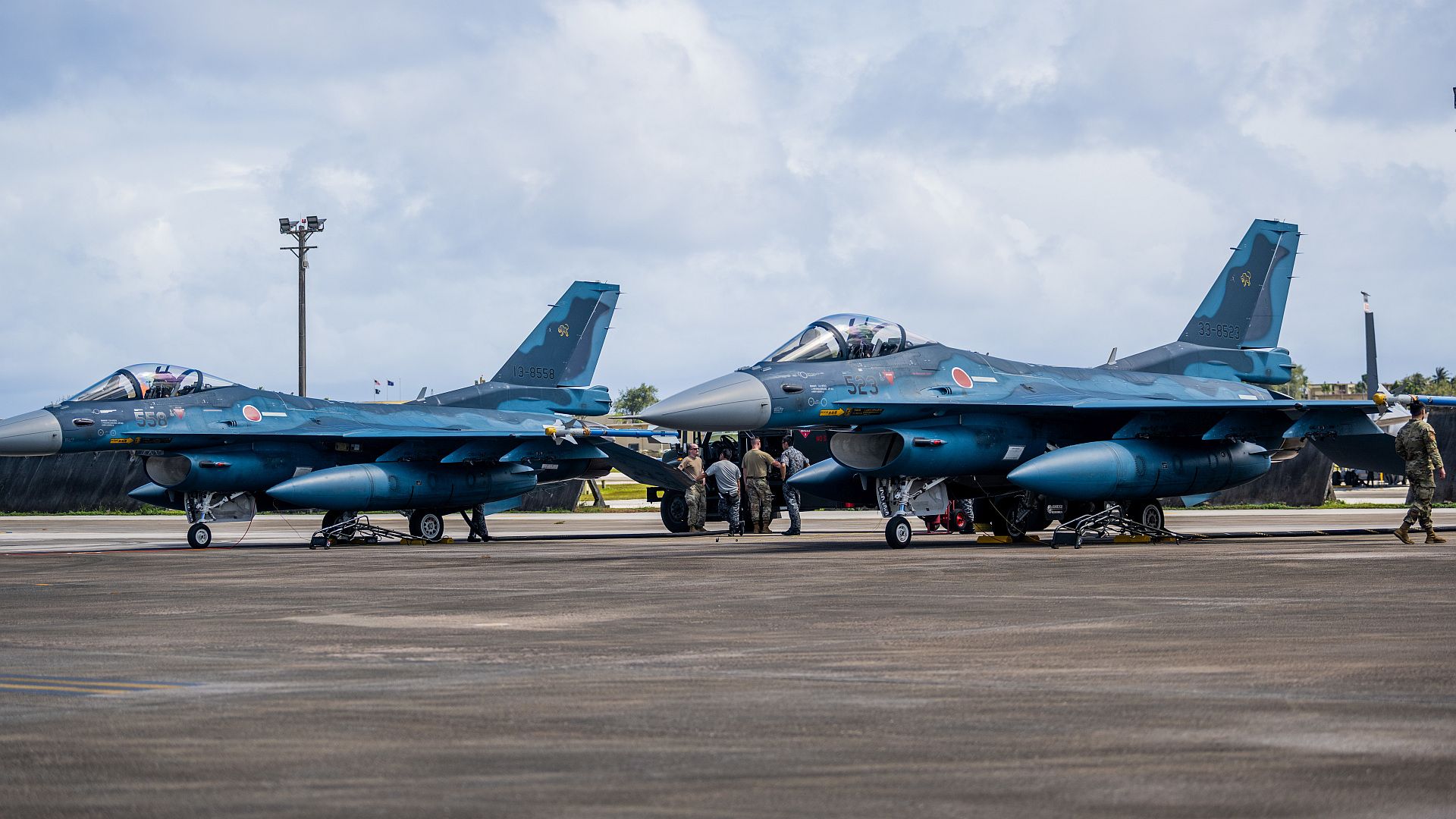
Saint-Cloud, France, 9 February 2023 – The Dassault Aviation group is particularly happy to be able to present its dual military and civil know-how at the 2023 Aero India Show to be held in Bangalore (India) from 13 to 17 February.
In the defense sector, the Indian Air Force (IAF) is our longest standing export customer and has been flying Dassault aircraft since 1953. The acquisition contract for 36 Rafale – signed in 2016 – and the modernization of the Mirage 2000 I/TI are a continuation of this historic partnership.
In the business aviation field, more than twenty Falcon aircraft are in service in India and growth prospects are promising.
Following the Rafale contract, Dassault Aviation and its partners are also contributing to the “Make in India” policy, through a vast procurement, training and industrial subcontracting network involving dozens of companies, in accordance with our offset obligations.
Dassault Aviation will be presenting the following at the 2023 Aero India Show:
A Rafale C mock-up in Indian Air Force colors and a Rafale Marine mock-up. The Rafale Marine is a candidate for the renewal of the Indian Navy’s carrier-borne fighter fleet, under a tender issued by the Indian Government.
A Falcon 2000 front section built by the Franco-Indian plant in Nagpur, under agreements signed subsequent to the Rafale contract.
A Falcon 8X. With its range of nearly 12,000 km and its extreme versatility, this trijet – which enjoys a reputation for robustness and reliability – is particularly well-suited to the needs of Indian companies and to local operating conditions (high temperatures and altitudes).
“Dassault Aviation’s participation in the Aero India show is just the latest step in our 70-year partnership with India. It has always been our ambition and a source of pride to provide the Indian armed forces and Indian companies with the best equipment. We will do everything in our power to develop our industrial presence in this great country and meet its military and business aircraft needs, both today and for the future”, said Eric Trappier, Chairman and CEO of Dassault Aviation.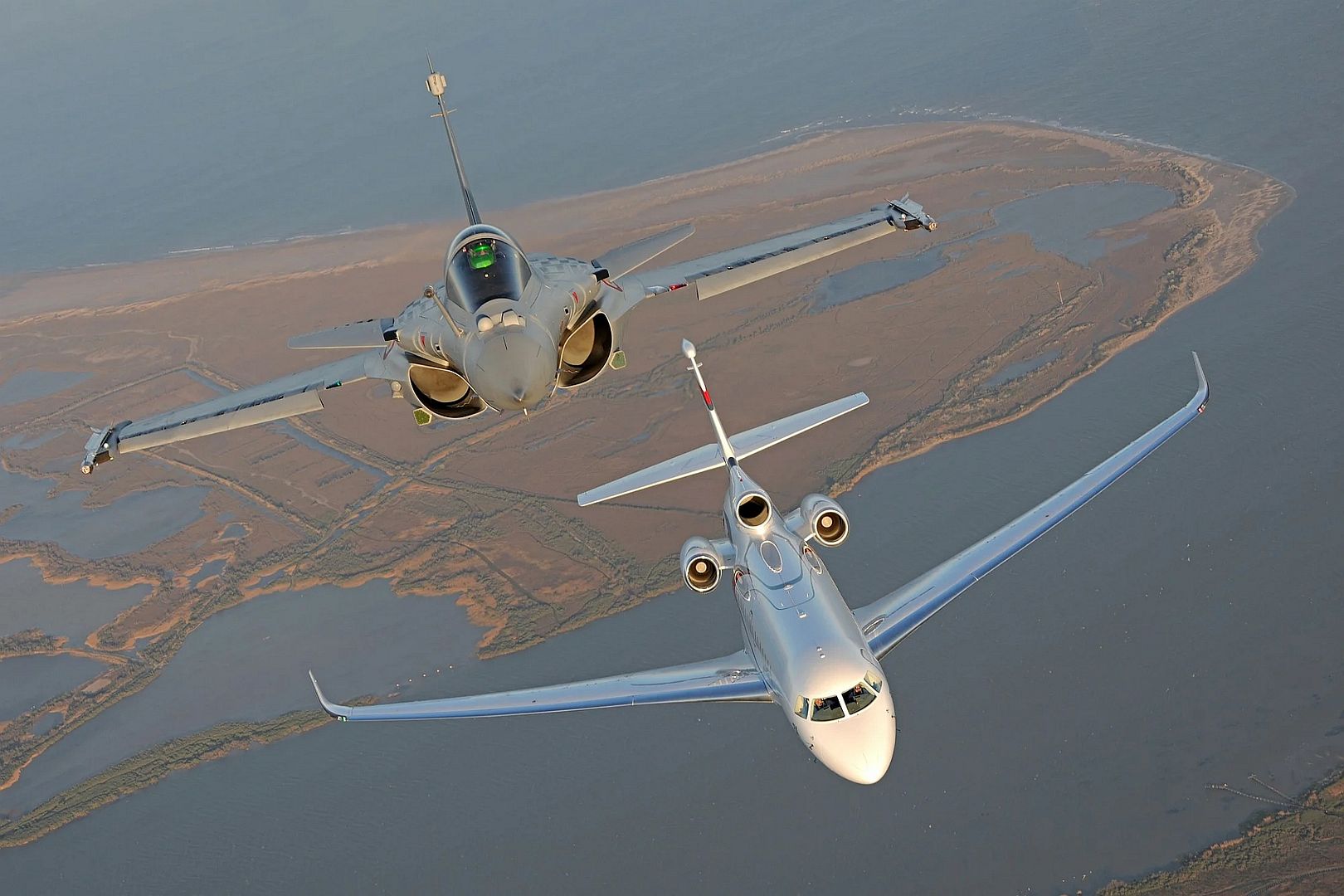
09 Feb 2023.
A Royal Air Force Detachment, operating from Nellis Air Base Nevada, is honing its cutting-edge air combat skills in the largest scale Exercise RED FLAG to date.
Exercise RED FLAG is the pre-eminent annual air combat training exercise run by the United States. The United States Air Force has expanded this long-established exercise to include a vastly increased geographical area to challenge participants to overcome what United States Air Force planners are calling the ‘Tyranny of Distance’ in addition to the traditional combat air missions of previous exercises.
The Exercise has previously been run over the Nevada Test and Training Range and area of 12,000 square miles of airspace and 2.9 million acres of land. Now training areas in Utah and California have been added, as well as missions being flow out over the Californian Pacific Coast. The exercise area has therefore become vast and is aimed to reflect the challenges of conducting air operations at range.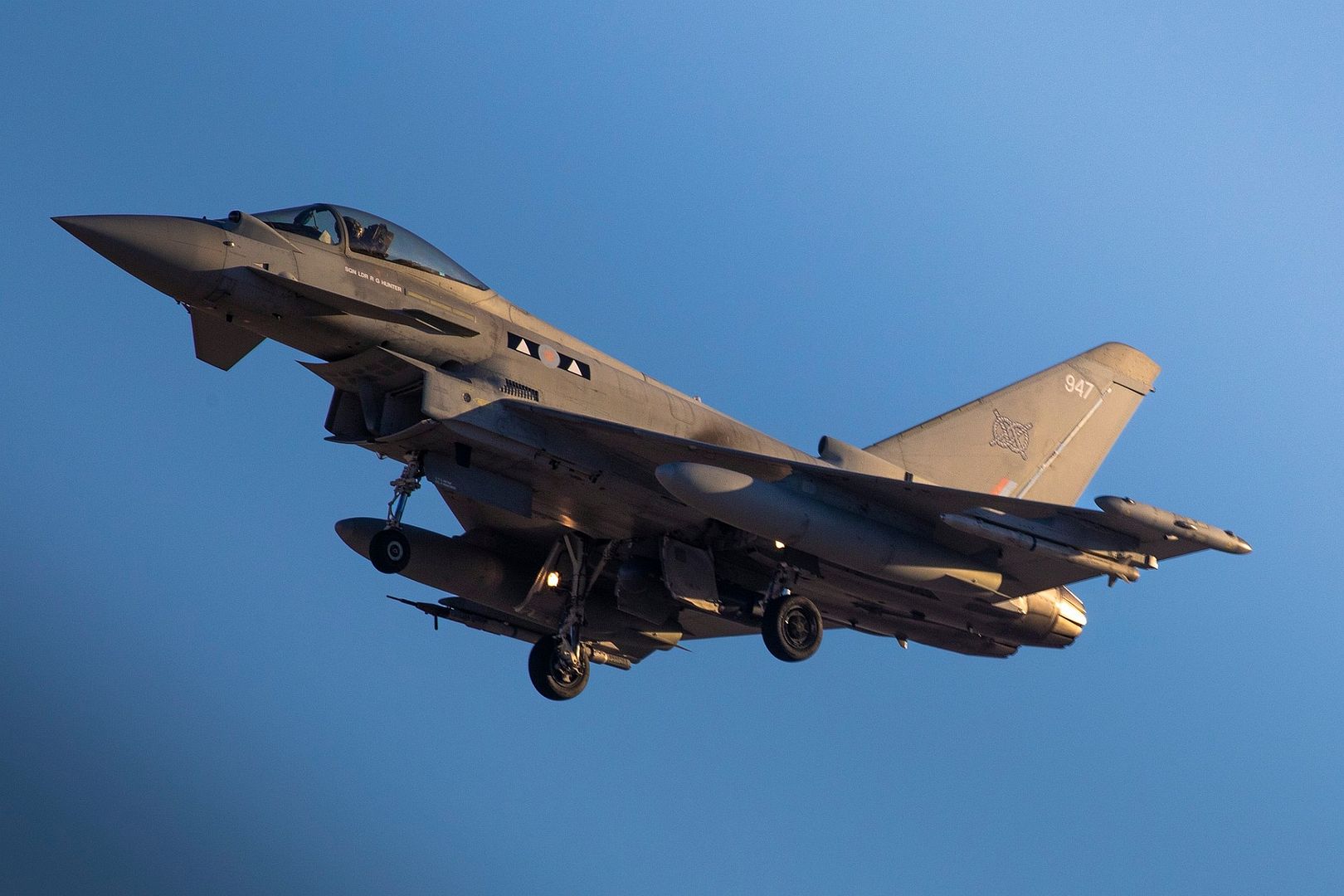
The RAF detachment of around 300 personnel currently taking part on the exercise is operating seven Typhoons from RAF Lossiemouth based II (Army Co-operation) Squadron, plus a Voyager operated from 10 and 101 Squadron based at RAF Brize Norton. In addition, aircrew from 51 Squadron based at RAF Waddington have been integrated into the flight crew of a United States Air Force RC-135 Rivet Joint intelligence gathering aircraft. Australia is the only other nation participating, reflecting the close Defence partnership between our three countries.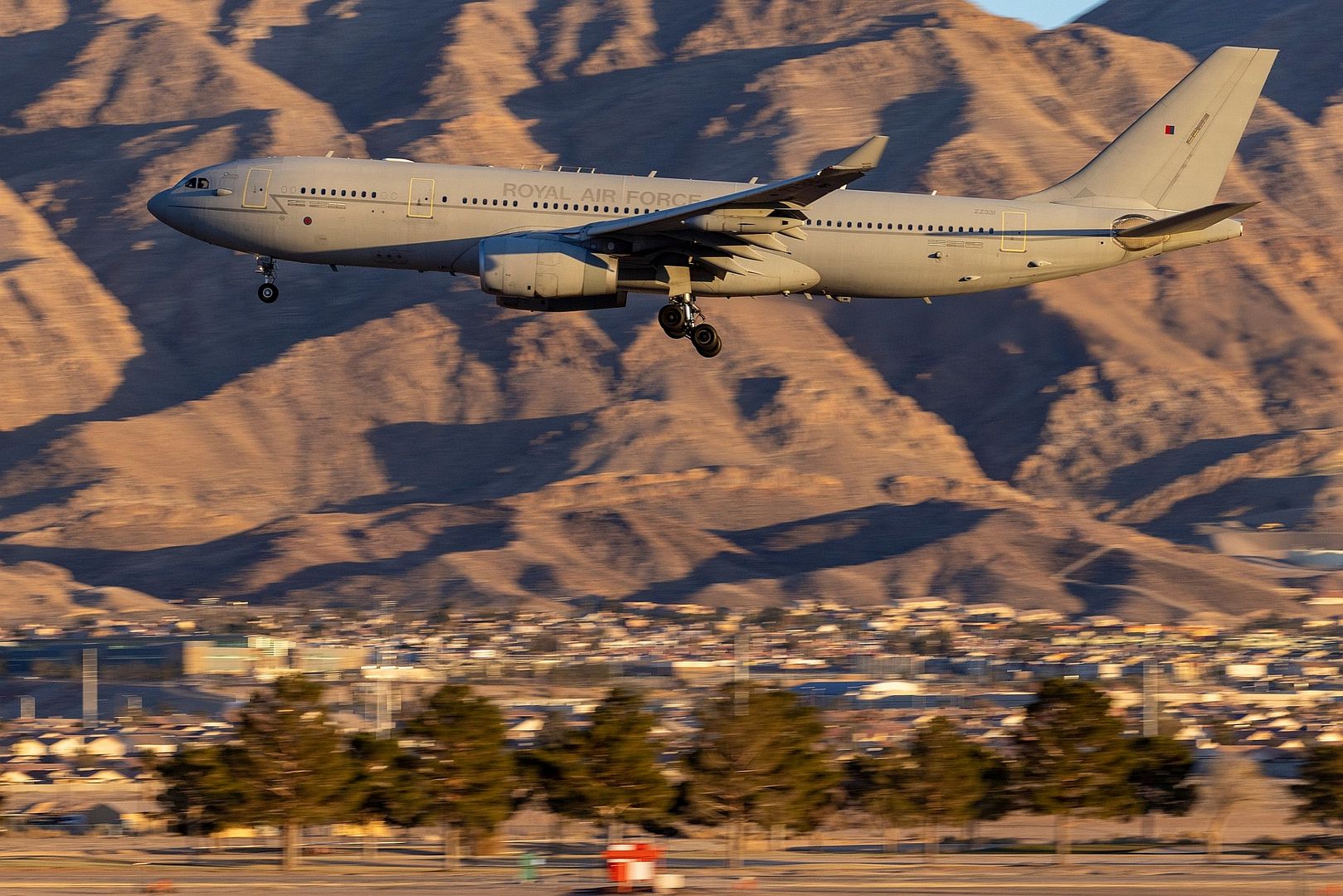
During the exercise the RAF Typhoons and Voyager will join with combat aircraft from the United States Air Force, the United States Navy, the United States Marine Corps and the Royal Australian Air Force. As part of the exercise the pilots and aircrew will face simulated ground-based air defence systems, as well as aggressor aircraft that will simulate a peer adversary, together with cyber and space-based threats as combat missions are planned conducted and debriefed.
"This is the most important exercise that the RAF participates on each year. There are a number of reasons for this. First and foremost, the scale and complexity of the exercise tests all of the participants in a way that just does not exist anywhere else in the world.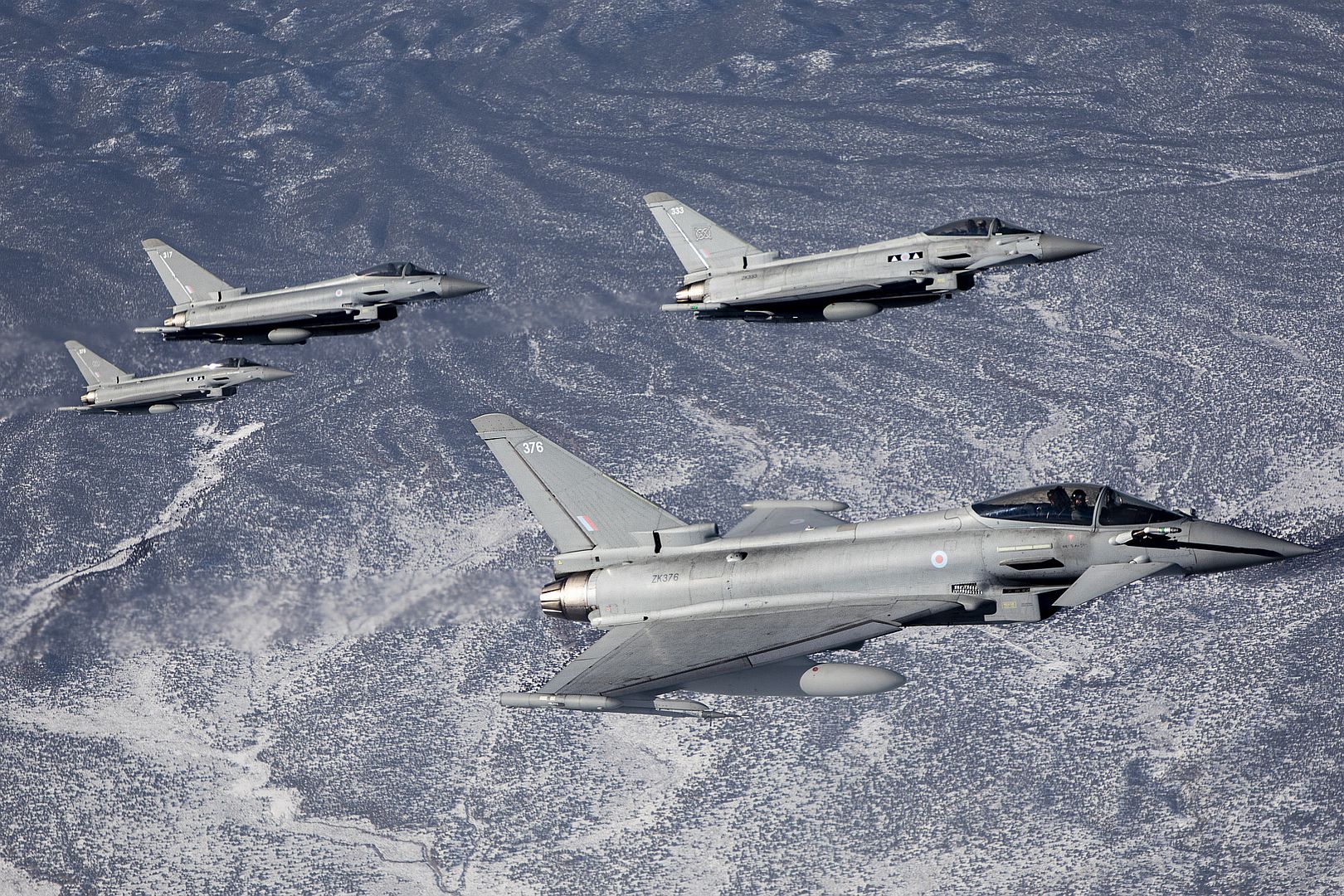
The original intent of the exercise was to seek to replicate the first 10 combat missions a fast jet aircrew will face in combat, as to survive those missions meant, they were more likely to survive sustained combat missions. Now the exercise has developed and evolved to what it represents today and recognises the threats that have evolved and so the exercise has evolved to represent them."
Air Commodore Edwards
Combat Air Force Commander RAF
(Photos courtesy of the RAF)
-
2 years agoMon Feb 13 2023, 08:49pmDuggy
 Main AdminA KC-46A Pegasus is hoisted up on three tripod jacks on Joint Base McGuire-Dix-Lakehurst, N.J., Feb. 9, 2023. Fuselage jacking and landing gear retraction qualifications were the last major task for the squadron to become fully capable, making the 305th MXS the first fully-capable KC-46 maintenance squadron on the U.S. East Coast region. The team leading the jack and swing training cut 50% off of the standard for major inspection times. (U.S. Air Force photo by Senior Airman Joseph Morales)
Main AdminA KC-46A Pegasus is hoisted up on three tripod jacks on Joint Base McGuire-Dix-Lakehurst, N.J., Feb. 9, 2023. Fuselage jacking and landing gear retraction qualifications were the last major task for the squadron to become fully capable, making the 305th MXS the first fully-capable KC-46 maintenance squadron on the U.S. East Coast region. The team leading the jack and swing training cut 50% off of the standard for major inspection times. (U.S. Air Force photo by Senior Airman Joseph Morales)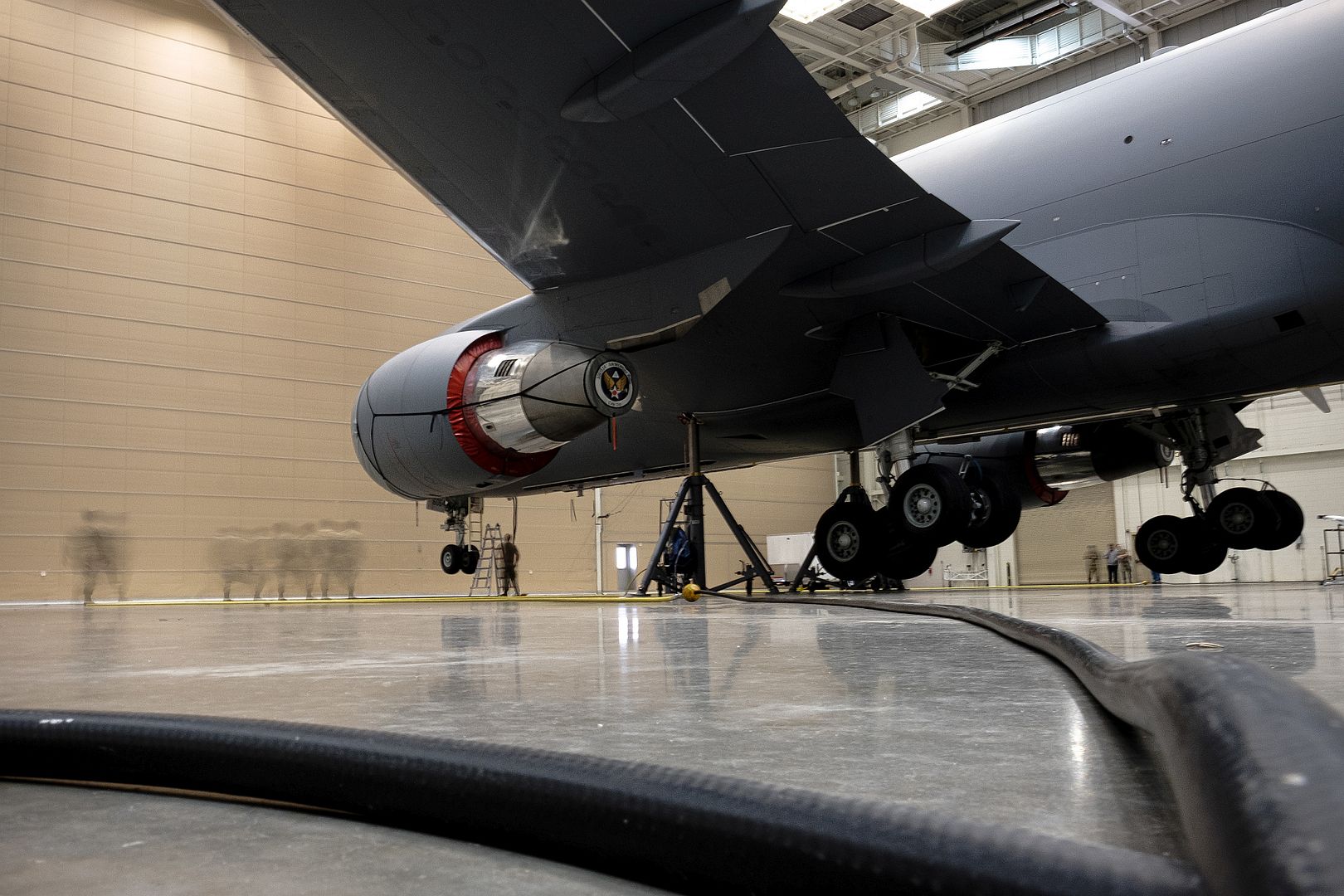
A U.S. Air Force F-15E Strike Eagle assigned to the 389th Expeditionary Fighter Squadron, approaches a KC-135 Stratotanker assigned to the 91st Expeditionary Air Refueling Squadron, to receive fuel within the U.S. Central Command area of responsibility, Feb. 5, 2023. The 91st EARS delivers fuel for U.S. and partner nation forces, extending the reach and combat effectiveness of airpower to the region. (U.S. Air Force photo by Tech. Sgt. Daniel Asselta)
A U.S. Air Force F-15E Strike Eagle assigned to the 389th Expeditionary Fighter Squadron, flies within the U.S. Central Command area of responsibility, Feb. 5, 2023. The 389th EFS’s mission is to deliver dominant combat airpower and fortify the U.S. commitment to deterrence and regional stability. (U.S. Air Force photo by Tech. Sgt. Daniel Asselta)
U.S. Navy ADC Tabitha Bledsoe catches an EA-18G Growler assigned to the “Vikings” of Electronic Attack Squadron (VAQ) 129, Oak Harbor, Washington, at Luke Air Force Base, Arizona, Feb. 7, 2023. The Navy is at Luke AFB preparing for a flyover during the 2023 Super Bowl at the State Farm Stadium in Glendale, Arizona, which will commemorate 50 years of women flying in the U.S. Navy. (U.S. Air Force photo by Staff Sgt. Noah D. Coger)_129_Oak_Harbor_Washington_at_Luke_Air_Force_Base_Arizona_Feb._7_2023..jpg?width=1920&height=1080&fit=bounds)
An F-35A Lightning II with the 58th Fighter Squadron, 33rd Fighter Wing, taxis to the runway at Eglin Air Force Base, Florida, Feb. 10, 2023. The 58th FS is traveling to MacDill Air Force Base, Florida, to take advantage of optimal weather conditions, focus on the training mission, practice skills in a new environment and build comradery in the units. (U.S. Air Force photo by Airman 1st Class Christian Corley)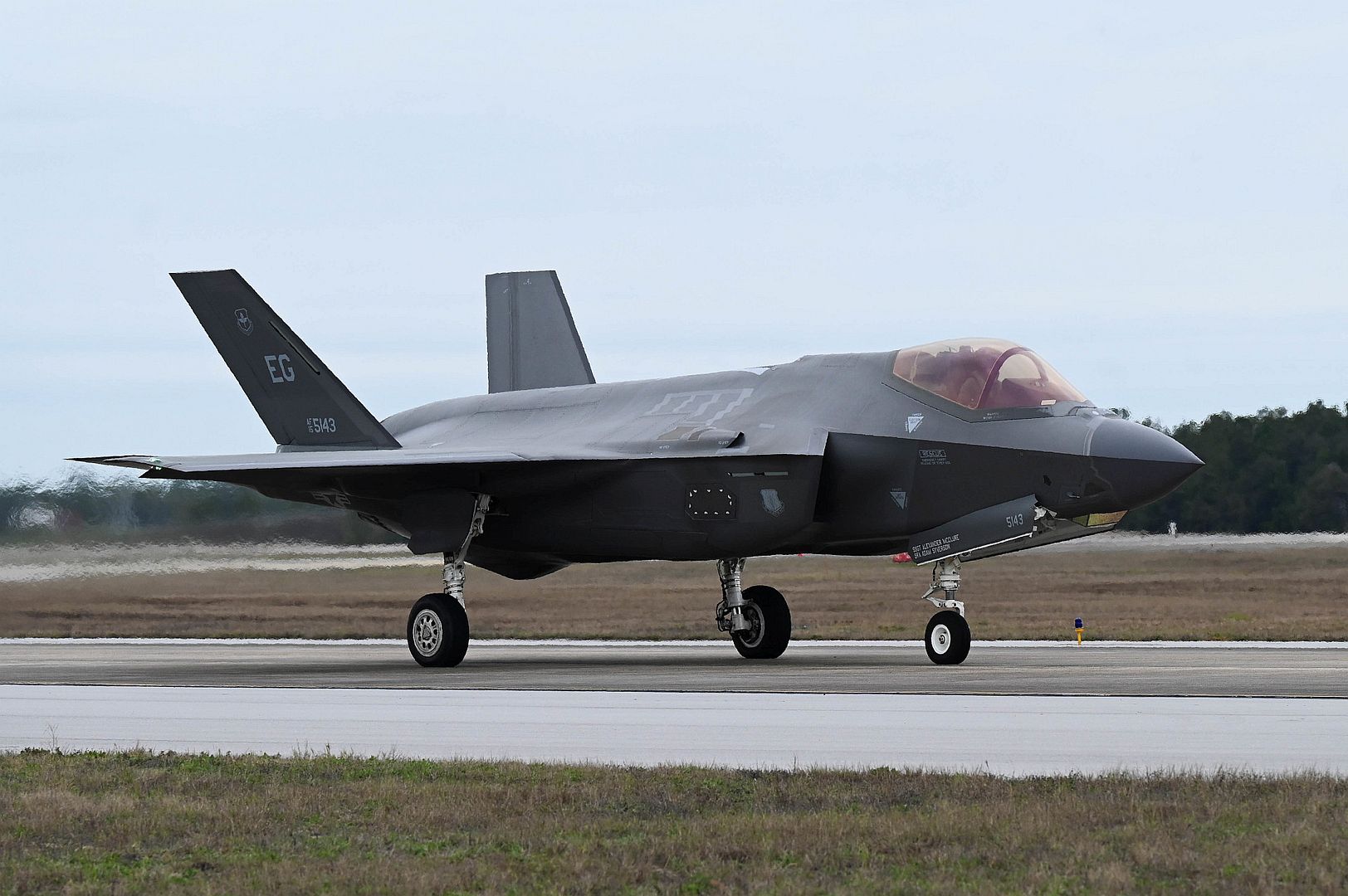
The RAAF has been sharpening its air combat skills flying combined force training missions between our partner nations ???????? ???????? at Exercise Red Flag 23 at Nellis Air Force Base, Nevada.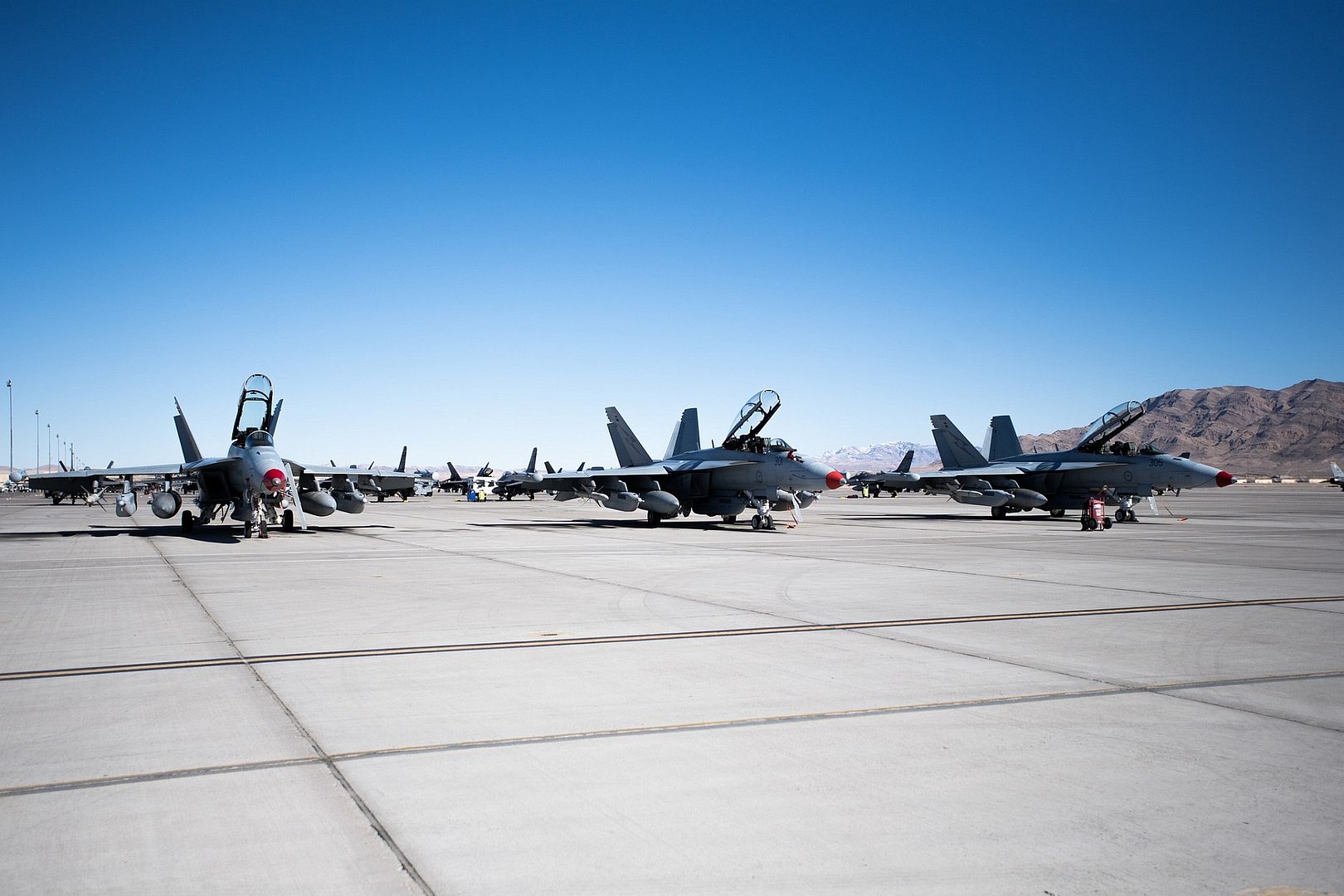
Exercises like Red Flag 23 are an opportunity to advance relationships and interoperability with the United States Air Force and Royal Air Force.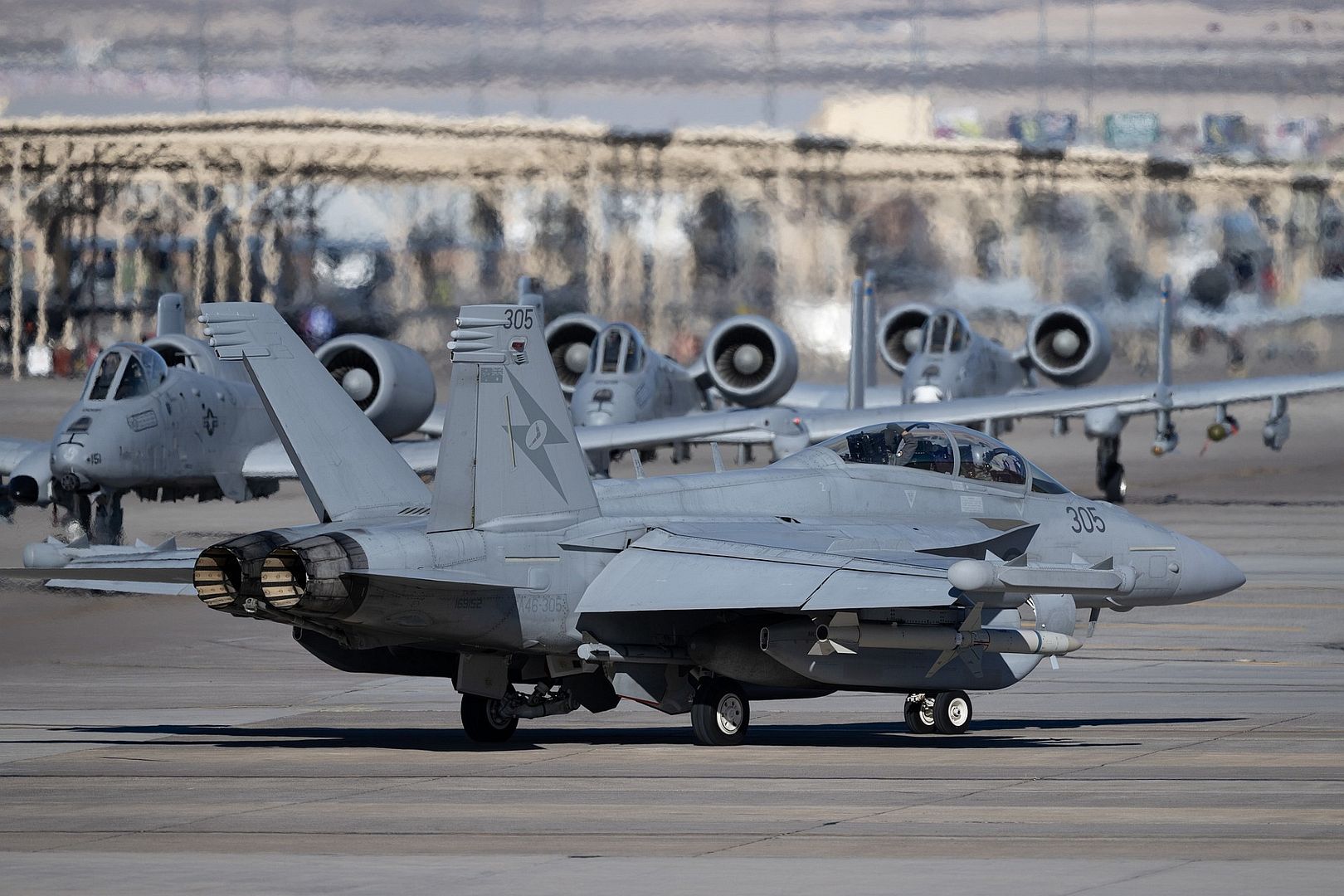
U.S. Air Force photos by, Staff Sgt. Michael Jones and William R. Lewis
-
 Main AdminAn F-35A Lightning II with the 60th Fighter Squadron, 33rd Fighter Wing, prepares for takeoff at Eglin Air Force Base, Florida, Feb. 11, 2023. The 60th FS is traveling to Naval Air Station Key West, Florida, to take advantage of optimal weather conditions, focus on the training mission, practice skills in a new environment and build comradery in the units. (U.S. Air Force photo by Senior Airman Leandra Garcia)
Main AdminAn F-35A Lightning II with the 60th Fighter Squadron, 33rd Fighter Wing, prepares for takeoff at Eglin Air Force Base, Florida, Feb. 11, 2023. The 60th FS is traveling to Naval Air Station Key West, Florida, to take advantage of optimal weather conditions, focus on the training mission, practice skills in a new environment and build comradery in the units. (U.S. Air Force photo by Senior Airman Leandra Garcia)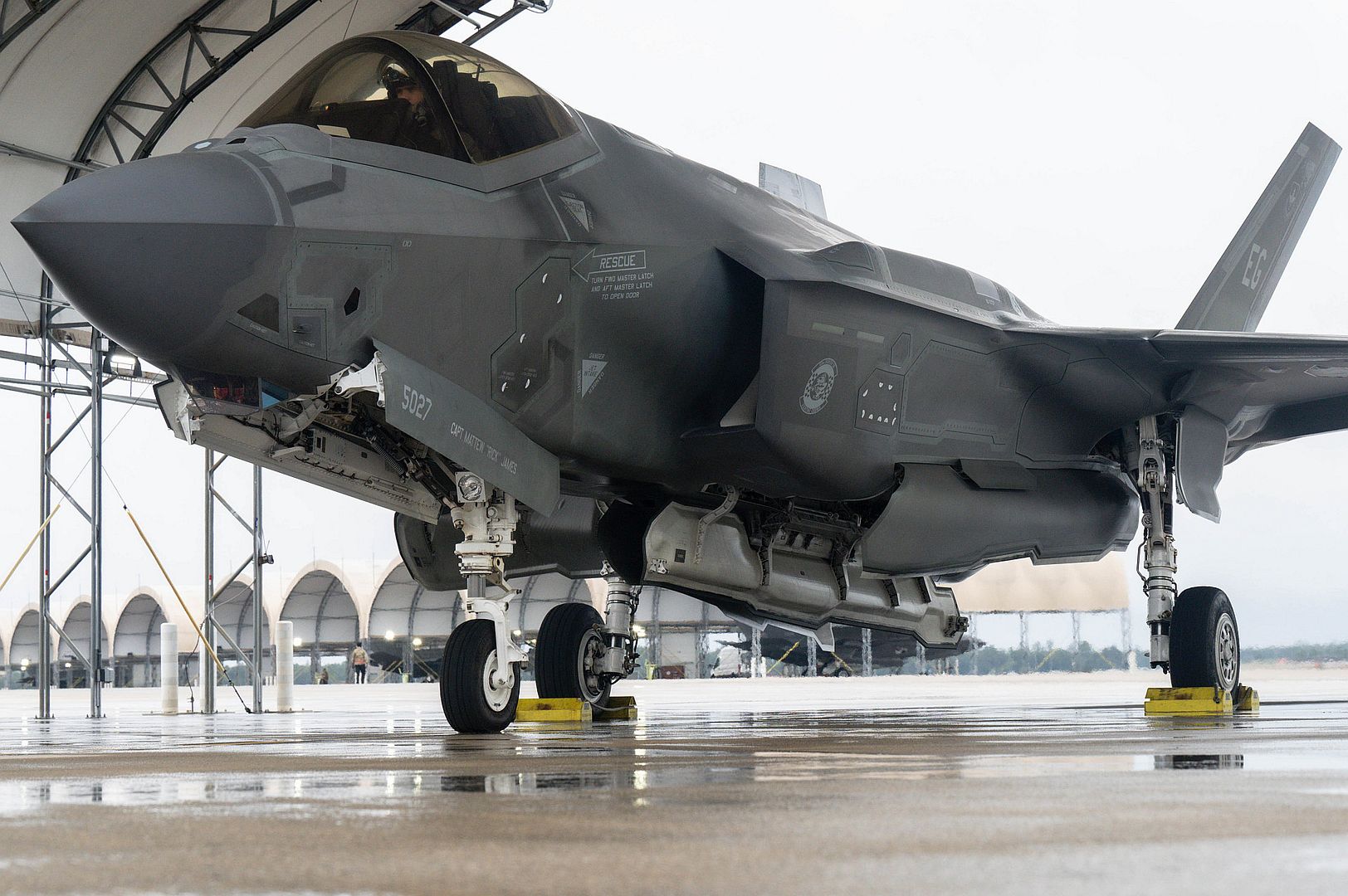
Japan Air Self-Defense Force and U.S. Air Force aircraft fly in formation near Guam during Cope North 2023, Feb. 10, 2023. Cope North has integrated air operations for more than 40 years, allowing the U.S. and our partners to enhance large-force employment, agile combat employment, humanitarian assistance and disaster relief capabilities across the Indo-Pacific. (U.S. Air Force photo by Staff Sgt. Charles T. Fultz)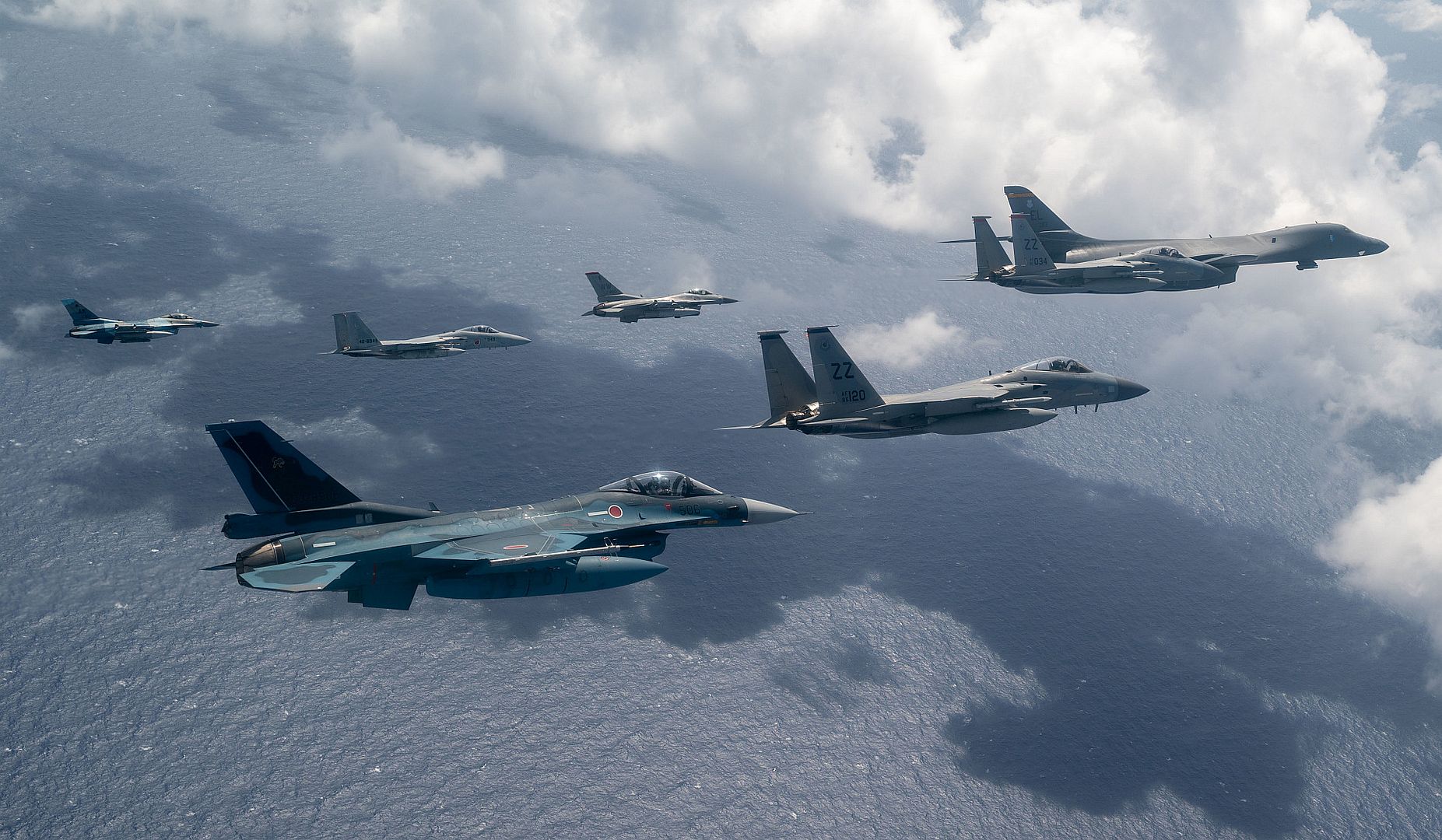
SOUTH CHINA SEA (Feb. 13, 2023) An F/A-18E Super Hornet from the “Kestrels” of Strike Fighter Squadron (VFA) 137 approaches for an arrested landing aboard the aircraft carrier USS Nimitz (CVN 68). Nimitz Carrier Strike Group (NIMCSG) and Makin Island Amphibious Ready Group (MKI ARG), with embarked 13th Marine Expeditionary Unit (13th MEU), are conducting combined expeditionary strike force (ESF) operations, demonstrating unique high-end war fighting capability, maritime superiority, power projection and readiness. Operations include integrated training designed to advance interoperability between the two groups while simultaneously demonstrating the U.S. commitment to our alliances and partnerships in the Indo-Pacific region. Nimitz is in U.S. 7th Fleet conducting routine operations. 7th Fleet is the U.S. Navy's largest forward-deployed numbered fleet, and routinely interacts and operates with Allies and partners in preserving a free and open Indo-Pacific region. (U.S. Navy photo by Mass Communication Specialist 2nd Class Justin McTaggart)_137_approaches_for_an_arrested_landing_aboard_the_aircraft_carrier_USS_Nimitz.jpg?width=1920&height=1080&fit=bounds)
SOUTH CHINA SEA (Feb. 13, 2023) An F/A-18F Super Hornet from the “Mighty Shrikes” of Strike Fighter Squadron (VFA) 94 approaches for an arrested landing on the flight deck of the aircraft carrier USS Nimitz (CVN 68). Nimitz Carrier Strike Group (NIMCSG) and Makin Island Amphibious Ready Group (MKI ARG), with embarked 13th Marine Expeditionary Unit (13th MEU), are conducting combined expeditionary strike force (ESF) operations, demonstrating unique high-end war fighting capability, maritime superiority, power projection and readiness. Operations include integrated training designed to advance interoperability between the two groups while simultaneously demonstrating the U.S. commitment to our alliances and partnerships in the Indo-Pacific region. Nimitz is in U.S. 7th Fleet conducting routine operations. 7th Fleet is the U.S. Navy's largest forward-deployed numbered fleet, and routinely interacts and operates with Allies and partners in preserving a free and open Indo-Pacific region. (U.S. Navy photo by Mass Communication Specialist 3rd Class Joseph Calabrese)_94_approaches_for_an_arrested_landing_on_the_flight_deck_of_the_aircraft_carrier_USS_Nimitz.jpg?width=1920&height=1080&fit=bounds)
EDWARDS AFB, Calif., Feb. 13, 2023 /PRNewswire/ -- The Lockheed Martin (NYSE: LMT) VISTA X-62A, a one-of-a-kind training aircraft, was flown by an artificial intelligence agent for more than 17 hours recently, representing the first time AI engaged on a tactical aircraft.
VISTA, short for Variable In-flight Simulation Test Aircraft, is changing the face of air power at the U.S. Air Force Test Pilot School (USAF TPS) at Edwards Air Force Base in California.
VISTA is a one-of-a-kind training airplane developed by Lockheed Martin Skunk Works® in collaboration with Calspan Corporation for the USAF TPS. Built on open systems architecture, VISTA is fitted with software that allows it to mimic the performance characteristics of other aircraft.
"VISTA will allow us to parallelize the development and test of cutting-edge artificial intelligence techniques with new uncrewed vehicle designs," said Dr. M. Christopher Cotting, U.S. Air Force Test Pilot School director of research. "This approach, combined with focused testing on new vehicle systems as they are produced, will rapidly mature autonomy for uncrewed platforms and allow us to deliver tactically relevant capability to our warfighter."
Recent upgrades by the U.S. Air Force include an updated VISTA Simulation System (VSS) provided by Calspan, and Lockheed Martin's Model Following Algorithm (MFA), and System for Autonomous Control of the Simulation (SACS). The SACS and MFA systems integrated together provide new capabilities to the VISTA so it can be used to conduct the most advanced flight test experiments emphasizing autonomy and AI.
The 17-plus hour flight by an AI agent took place as part of a series of tests in December.
VISTA is a modified F-16D Block 30 Peace Marble Il aircraft upgraded with Block 40 avionics. Previously designated NF-16D, in June 2021 VISTA was recognized by the U.S. Air Force and deemed a national asset with a formal redesignation to VISTA X-62A.
This new mission system capability with VSS, MFA and SACS emphasize advancing autonomous aircraft algorithm development and integration. At the heart of SACS system is the Skunk Works Enterprise-wide Open Systems Architecture (E-OSA) which powers the Enterprise Mission Computer version 2 (EMC2) or "Einstein Box."
Additional SACS components include integration of advanced sensors, a Multi-Level Security solution, and a set of Getac tablet displays in both cockpits. These components enhance VISTA's capabilities while maintaining its rapid-prototyping advantage, specifically allowing for quick software changes to increase the frequency of flight test flights and accelerating the pace of AI and autonomy development to meet urgent national security needs.
For decades, Lockheed Martin has been applying and deploying trusted AI technologies to help its customers maximize performance, safety, and situational awareness across all domains. Lockheed Martin's implementations keep people in control while enabling them to be safer, more effective and better able to focus on higher-level tasks by empowering them to make more-informed decisions quickly.
VISTA will continue to serve an integral role in the rapid development of AI and autonomy capabilities for U.S. Air Force. It is currently undergoing a series of routine inspections. Flights will resume at Edwards Air Force Base throughout 2023.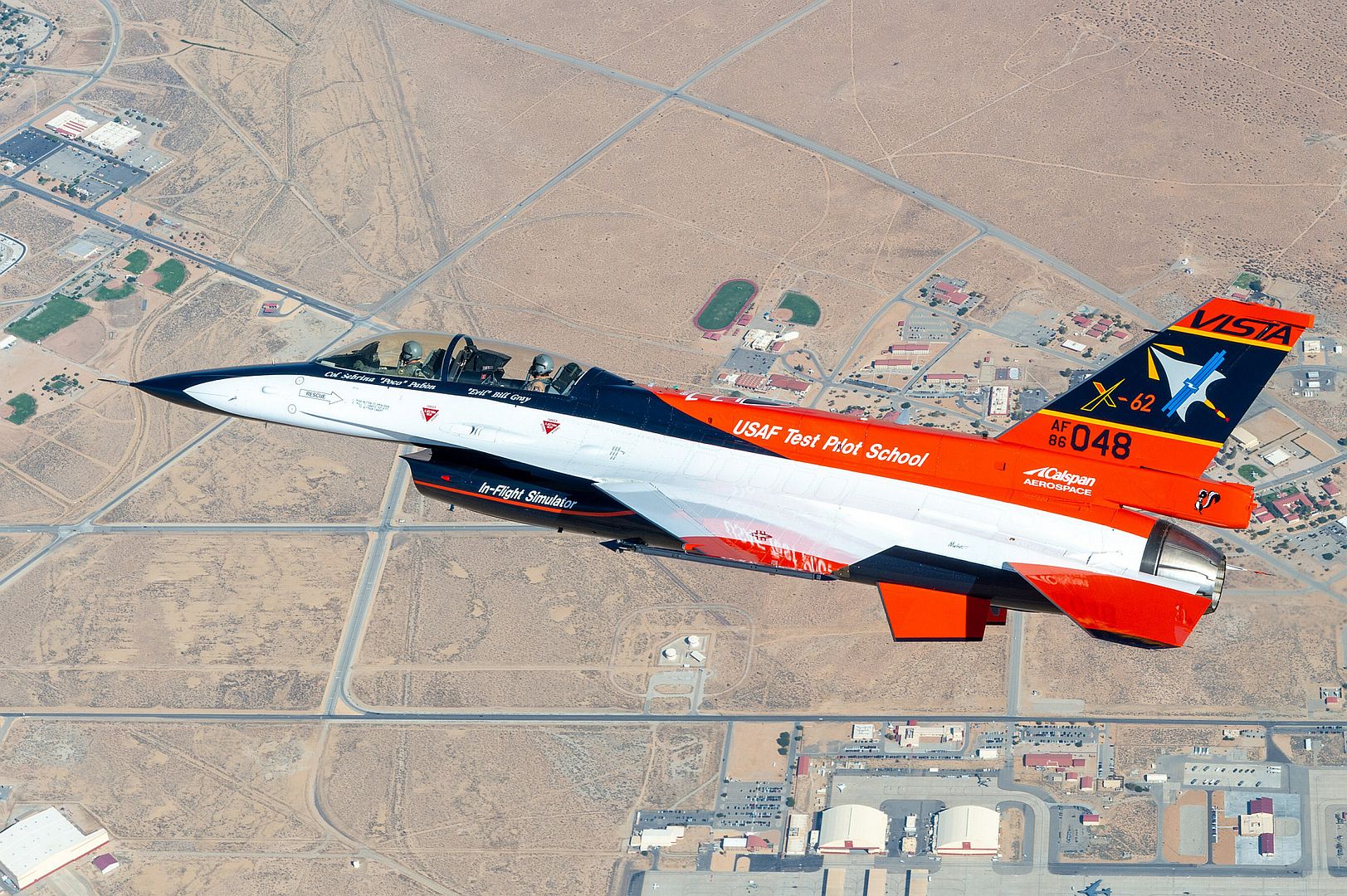
STRATFORD, Conn., Feb. 13, 2023 – Sikorsky, a Lockheed Martin company (NYSE: LMT), delivered two CH-53K helicopters to the U.S. Marine Corps in the final quarter of 2022. These CH-53K heavy lift helicopters join the seven already in operation at Marine Corps Air Station (MCAS) New River in Jacksonville, North Carolina.
“Sikorsky’s employees are using advanced technologies to manufacture the CH-53K helicopter, which increases capabilities and survivability to the U.S. Marine Corps,” said Bill Falk, director Sikorsky CH-53K program. “With the CH-53K’s transformative technologies, more is possible for the Marine Corps and our allies when deterring threats in the changing battlefield landscape.”
The CH‑53K’s heavy-lift capabilities exceed all other U.S. Department of Defense rotary wing platforms and is the only heavy-lift helicopter that will remain in production through 2032 and beyond.
Production Picks Up in 2023
Sikorsky is on track to deliver more multi-mission King Stallion™ helicopters to the U.S. Marine Corps in 2023.
The U.S Navy declared Full Rate Production for the CH-53K program in December 2022; a decision that is expected to increase production to more than 20 helicopters annually in the coming years. The expanded production includes twelve (12) aircraft in various stages of production for the government of Israel.
Sikorsky is procuring long-lead items and critical materials to support ramping CH-53K production to full rate production in its digital factory.
U.S. Marine on CH-53K: “A Level of Safety You Can’t Get Anywhere Else”
The CH-53K is an intelligent aircraft developed to 21st century standards, bringing improved safety and survivability to the warfighter. The CH-53K helicopter will provide many decades of world-wide heavy lift and multi-mission service to the Marine Corps, the Joint Force and our Allies.
A full authority digital fly-by-wire Flight Control System (FCS) is one of many impressive capabilities setting the CH-53K King Stallion™ heavy lift helicopter apart from any other heavy lift aircraft. “Full authority” means the FCS provides all the aircraft motion – not just supplementing the pilot for stability.
A digital fly-by-wire FCS is an electronic flight control system teamed with a digital computer that replaces mechanical control systems in an aircraft. It makes the aircraft easier to handle in degraded visual environments.
For pilots, like Marine Corps Capt. Chris Vanderweerd, the system provides more predictable and stable control responses to improve safety and mission effectiveness.
“We will take up to 30 fully loaded Marines and [are] able to insert them into a zone in a timely and [safe] manner where they don’t have to risk going in via convoy,” said Vanderweerd, who is with Marine Heavy Helicopter Squadron 461. “We can take them airborne and cut the time drastically that they are in enemy engagement zone essentially.”
“The whole fly-by-wire system is awesome,” said Staff Sgt. Dakota Schneider, crew chief with Marine Aviation Weapons and Tactics Squadron (MAWTS) 1, who is supporting the CH-53K at MCAS New River. “It will bring a level of safety that you can’t get anywhere else.”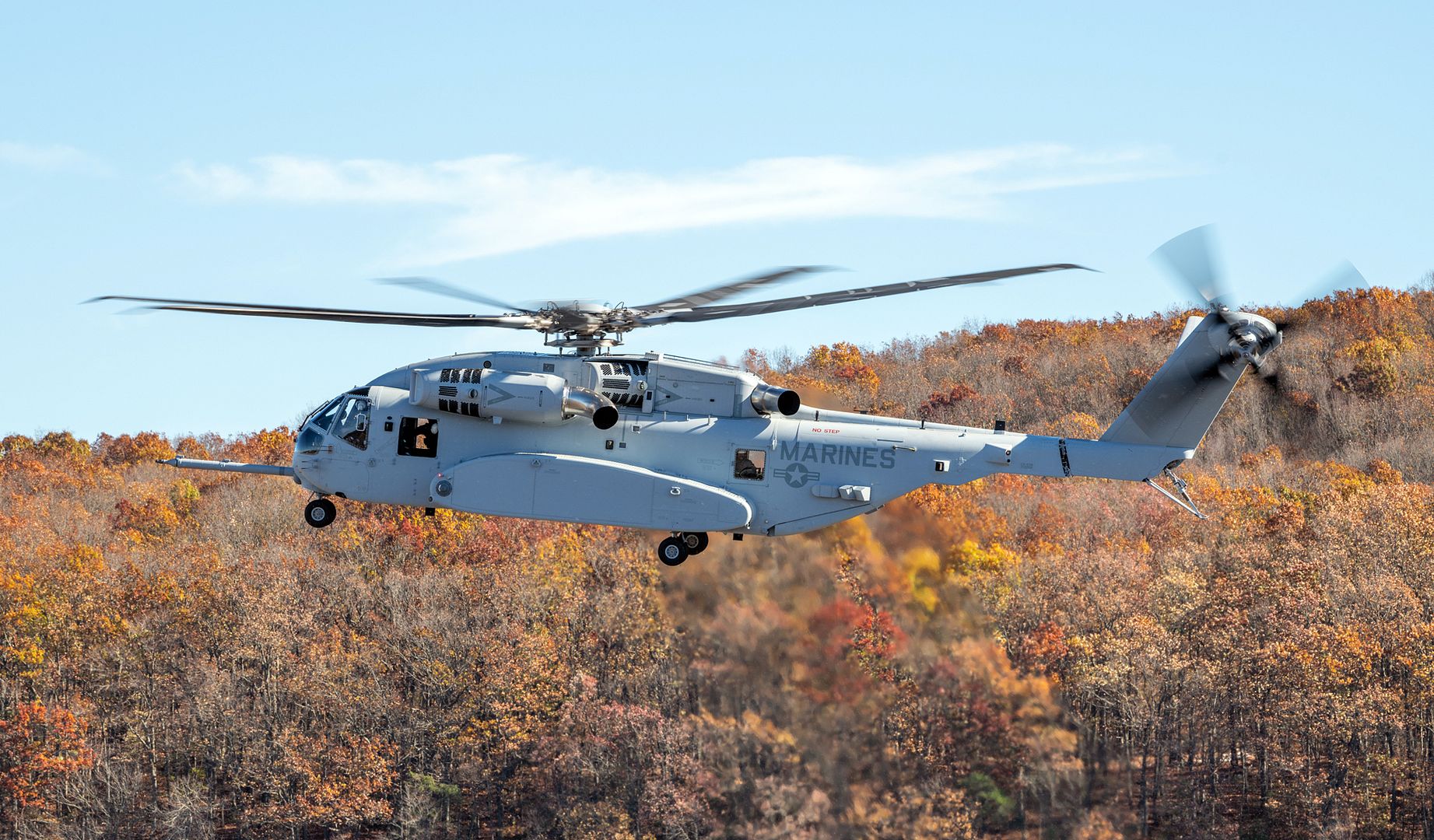
Bangalore, India, 12 February 2023 - Embraer is showcasing the C-390 Millennium military multi-mission tactical air transport aircraft, which will be on static display at Aero India 2023 in Bangalore, India, from 13 – 17 February. Complementing the C-390 Millennium’s presence at the show is Embraer’s booth (Hall B, B2.2 that will offer visitors a closer look at Embraer Defense & Security’s comprehensive portfolio and innovative solutions, which include the A-29 Super Tucano, the P600 AEW&C, and the radars & border surveillance solutions.
that will offer visitors a closer look at Embraer Defense & Security’s comprehensive portfolio and innovative solutions, which include the A-29 Super Tucano, the P600 AEW&C, and the radars & border surveillance solutions.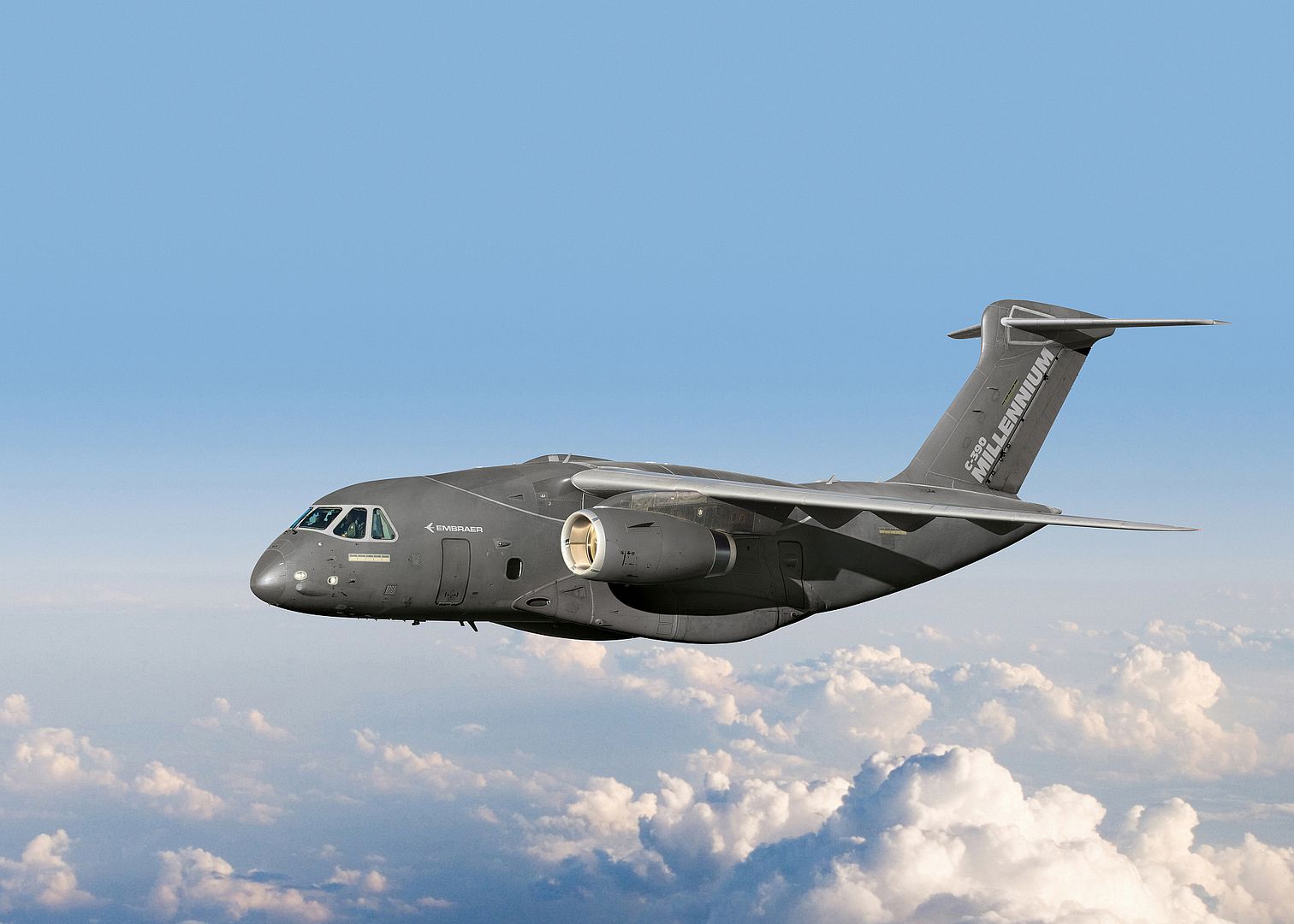
“We are proud to bring Embraer’s iconic C-390 Millennium to India for our guests to experience the true capabilities of this 21st-century military multi-mission aircraft,” said Bosco da Costa Junior, President & CEO, Embraer Defense & Security. “India is a key market for Embraer, and we are keen to establish partnerships in the country that can further boost India’s defence industries and capabilities. We look forward to engaging with India’s defense & aerospace ecosystem at this event.”
Since it entered into service with the Brazilian Air Force (FAB) in 2019, the C-390 has proven its capability, reliability, and performance across a variety of missions. FAB’s fleet of five aircraft, all refueling versions, designated KC-390, have already accrued more than 7,500 flying hours, and recent numbers have shown a mission completion rate of 99%, demonstrating outstanding productivity in its category. Embraer has orders for the C-390 Millennium from Portugal & Hungary, both NATO member nations. The Netherlands, also a NATO nation, selected the C-390 Millennium in 2022.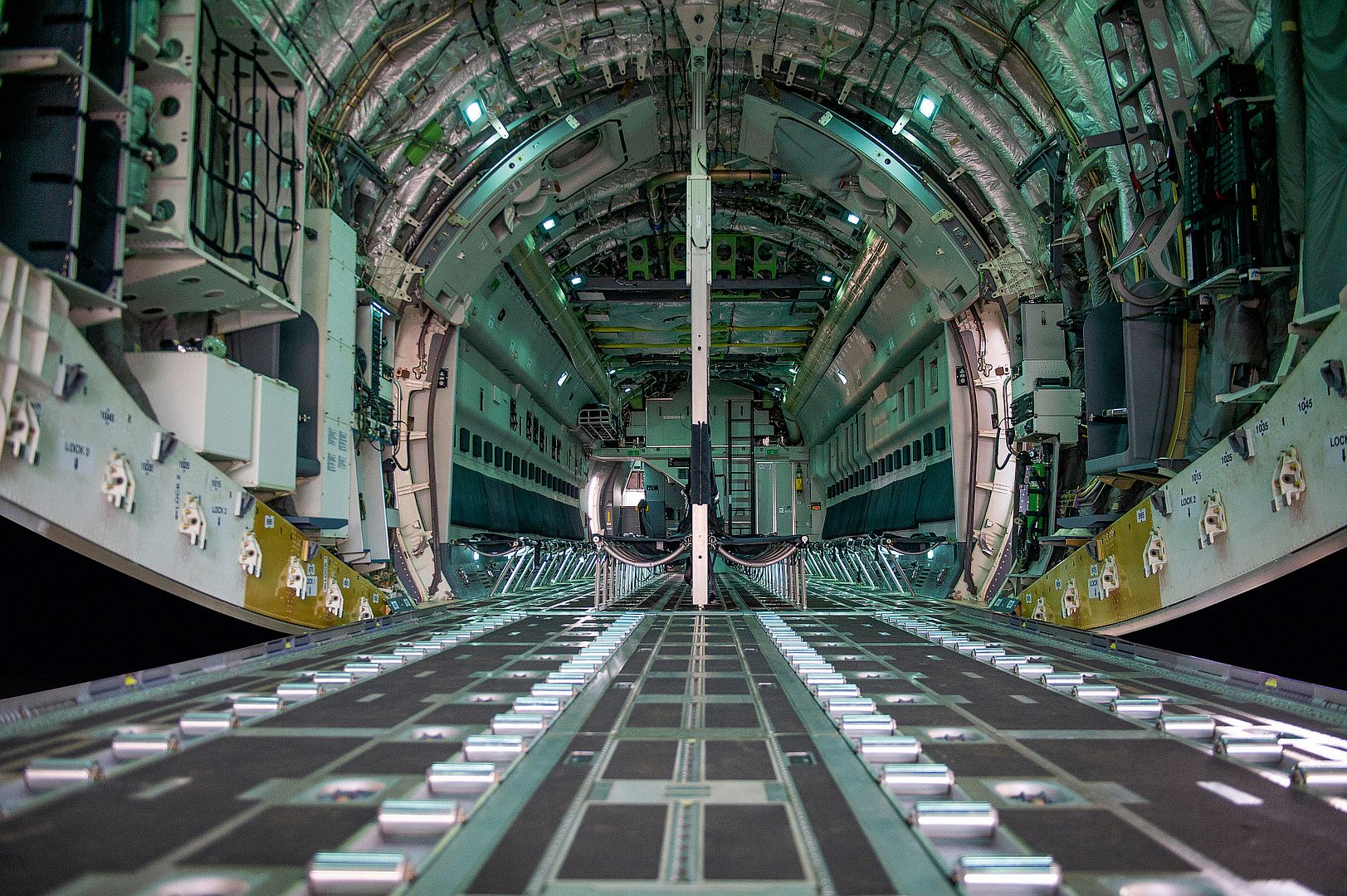
The C-390 is the most modern next-gen military tactical transport aircraft, and its multi-mission platform offers an unbeatable combination of low operating costs and fast turnaround. The aircraft can carry more cargo (26 tons) compared to other medium-sized military cargo aircraft and flies faster (470kts) and further on a standard crew duty day.
The C-390 Millennium can carry out a wide range of missions using the same platform, including Air-to-Air (in-flight) Refueling (AAR) for fixed & rotary wing aircraft, airborne operations, troop & cargo transportation, humanitarian missions, medical evacuation, firefighting, and search & rescue, with simple and rapid reconfiguration between the different configurations using conversion kits and state-of-the-art built-in reconfigurable cargo floor systems. The aircraft was designed to operate on semi-prepared or damaged runways as well as in hostile environments, ranging from hot & humid to cold, dry conditions.
One of Embraer’s defense products operating in the country is the Indian Air Force’s Netra AEW&C. Built upon the ERJ 145 regional jet platform, the fleet of three Netras is the product of collaboration between Embraer and DRDO. The aircraft took part in the Fly Past grand finale of India’s recent 74th Republic Day and is often deployed in key missions.
Post a reply
- Go to Previous topic
- Go to Next topic
- Go to Welcome
- Go to Introduce Yourself
- Go to General Discussion
- Go to Screenshots, Images and Videos
- Go to Off topic
- Go to Works in Progress
- Go to Skinning Tips / Tutorials
- Go to Skin Requests
- Go to IJAAF Library
- Go to Luftwaffe Library
- Go to RAF Library
- Go to USAAF / USN Library
- Go to Misc Library
- Go to The Ops Room
- Go to Made in Germany
- Go to Campaigns and Missions
- Go to Works in Progress
- Go to Juri's Air-Raid Shelter
- Go to Campaigns and Missions
- Go to Works in Progress
- Go to Skinpacks
- Go to External Projects Discussion
- Go to Books & Resources
